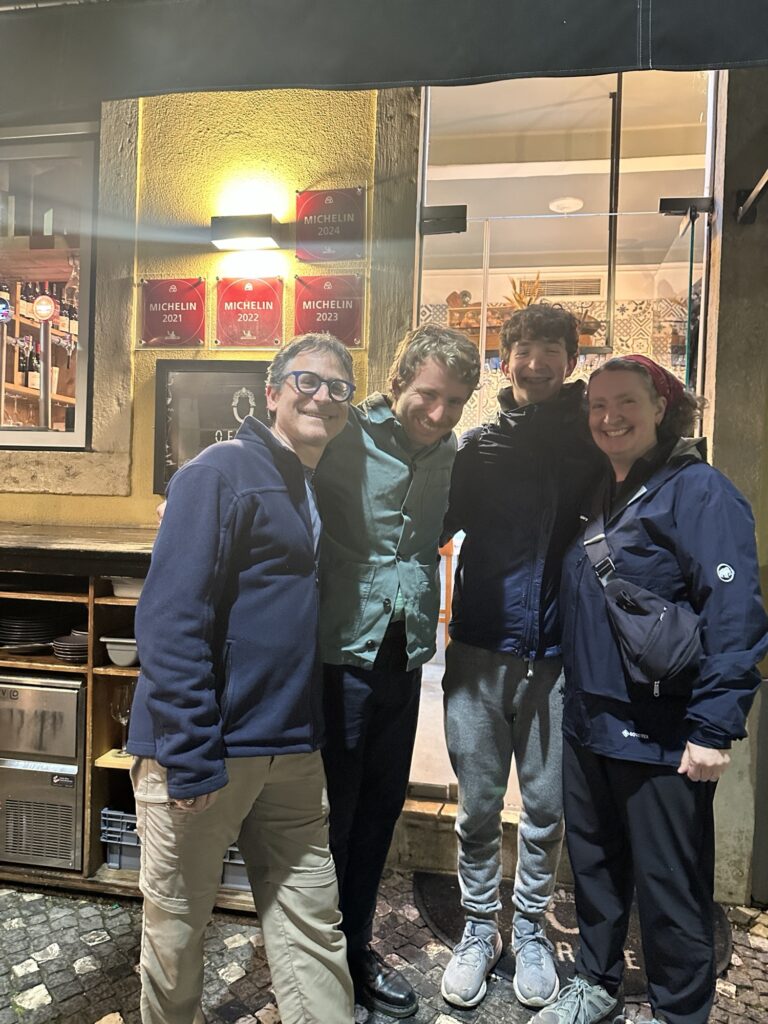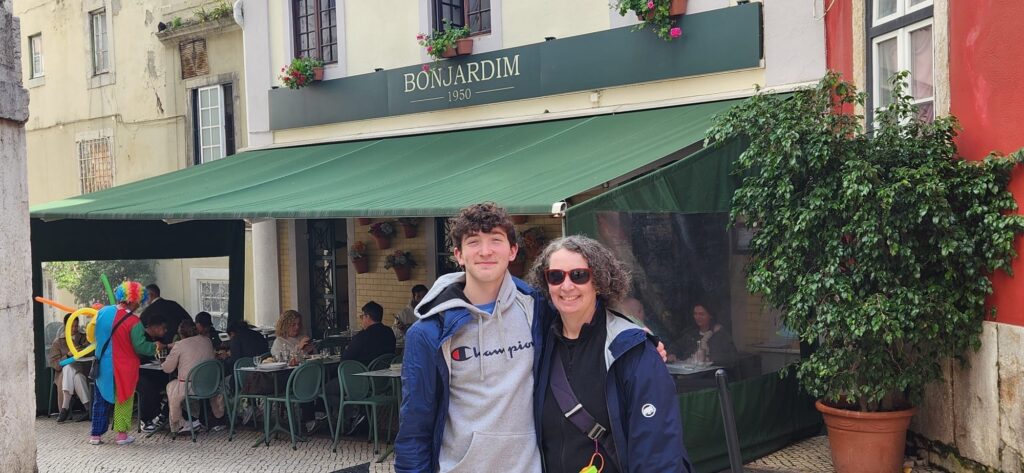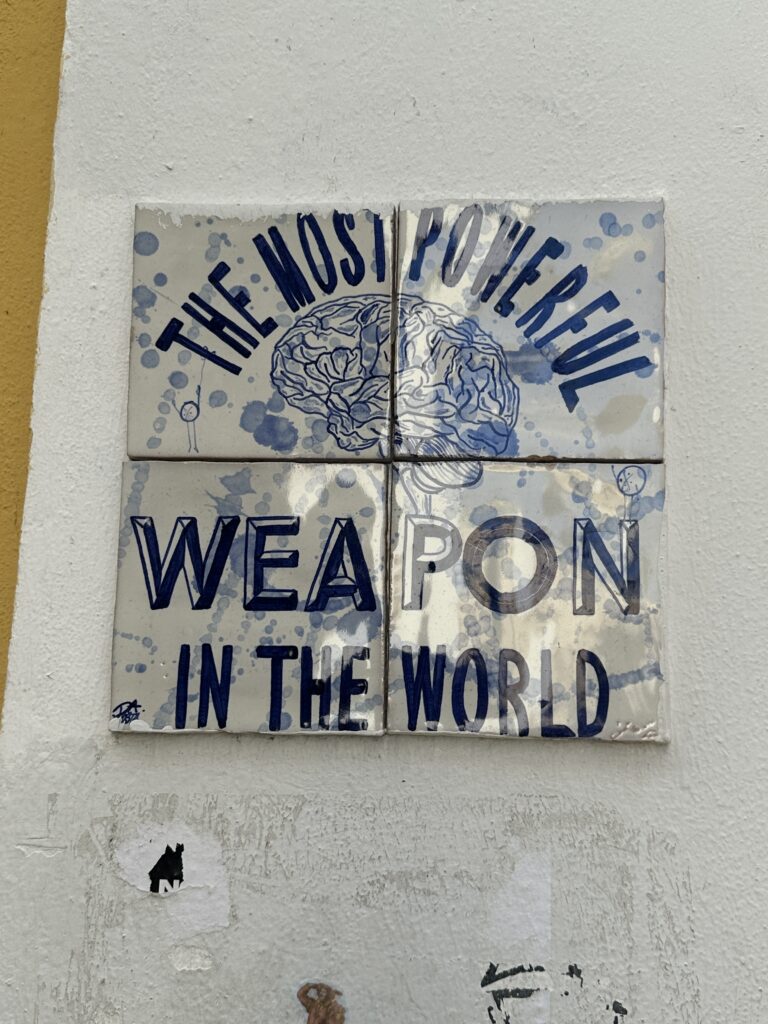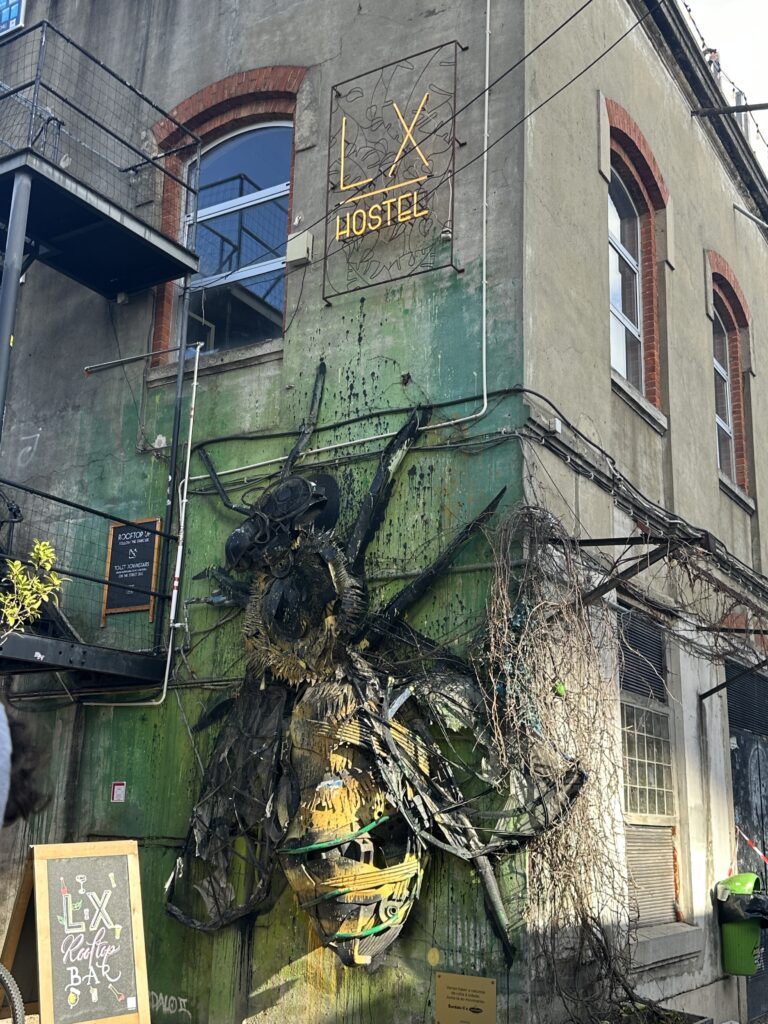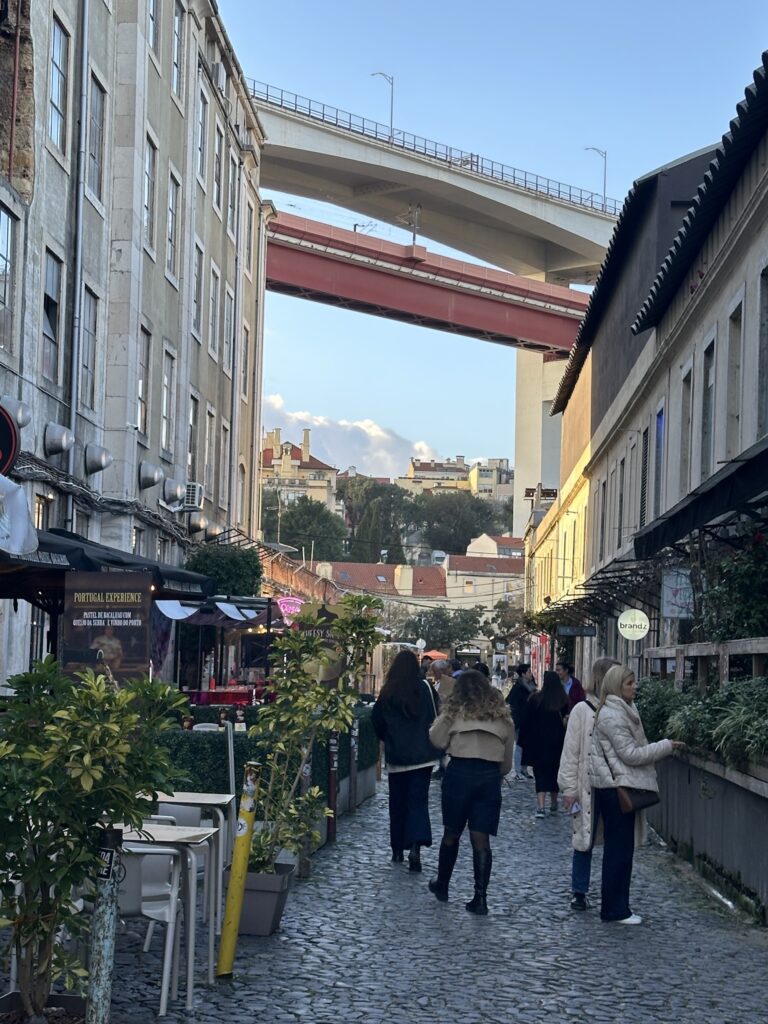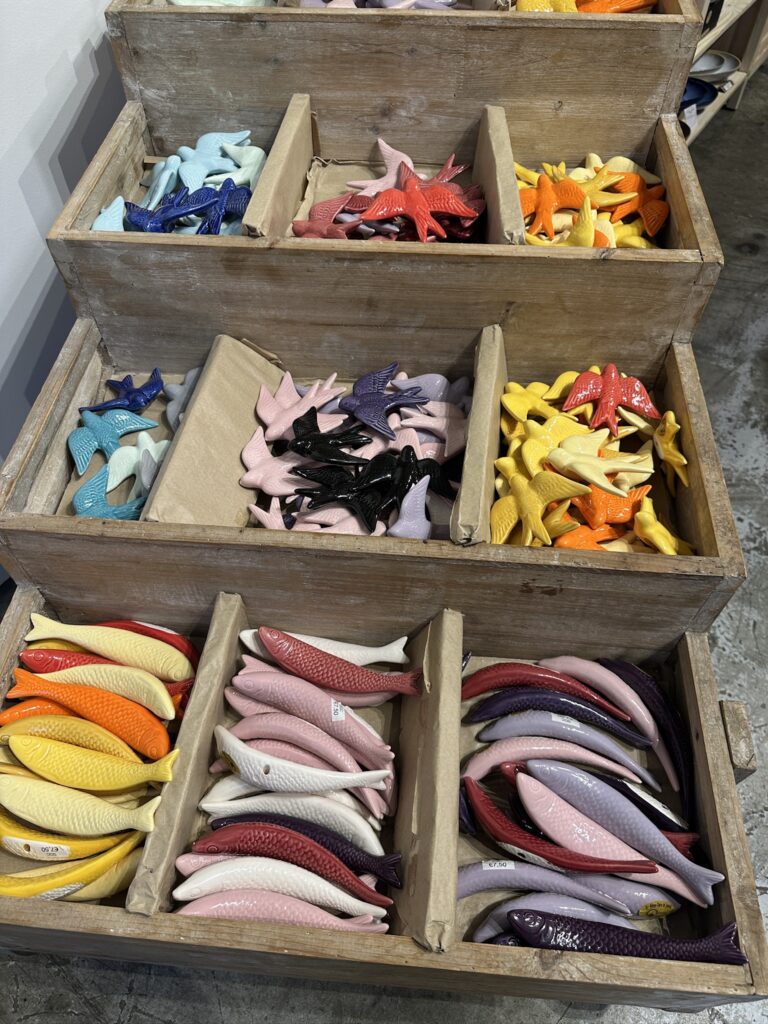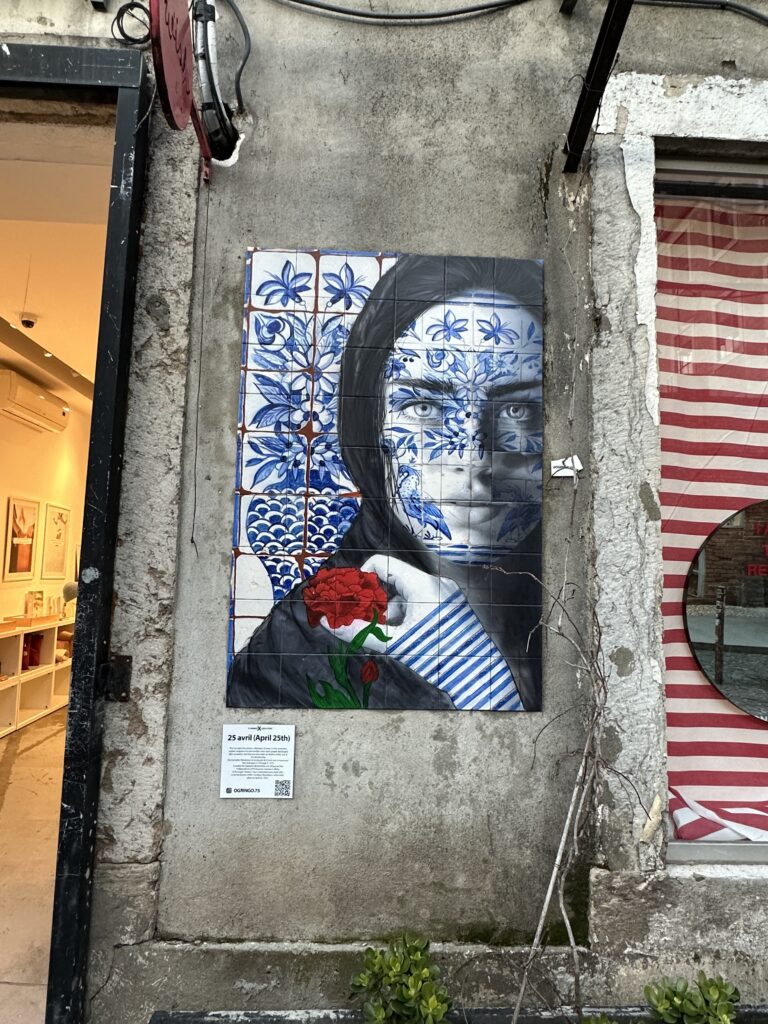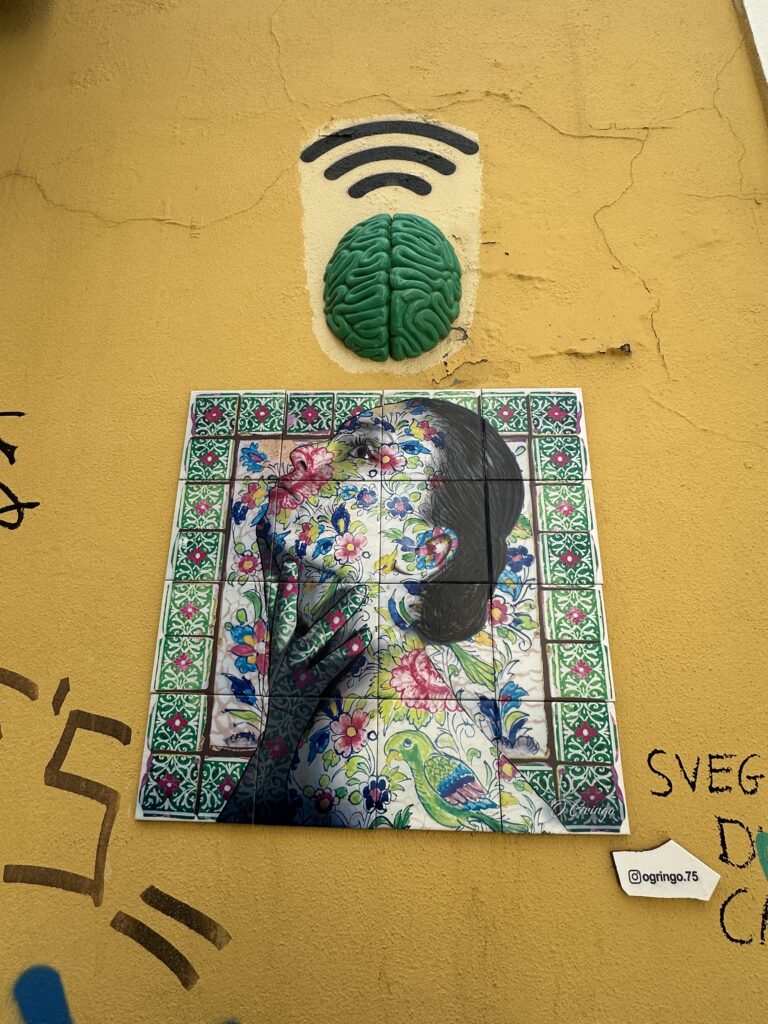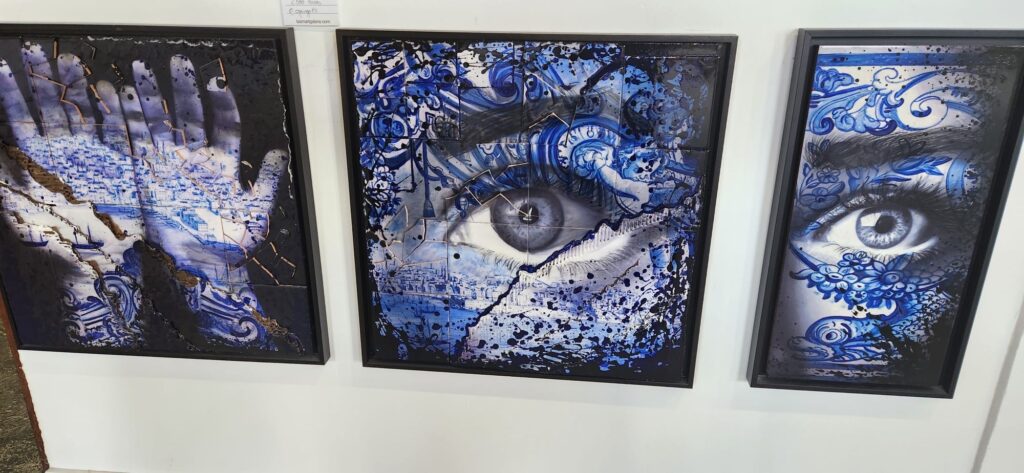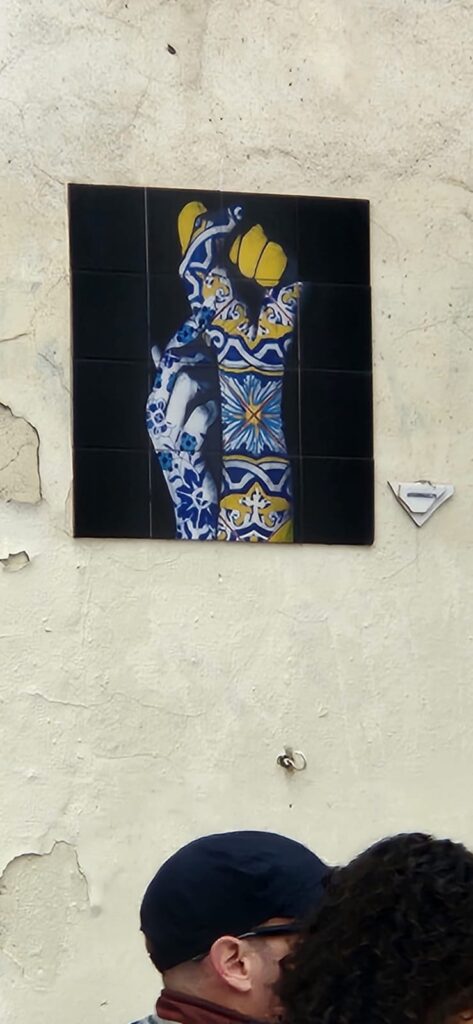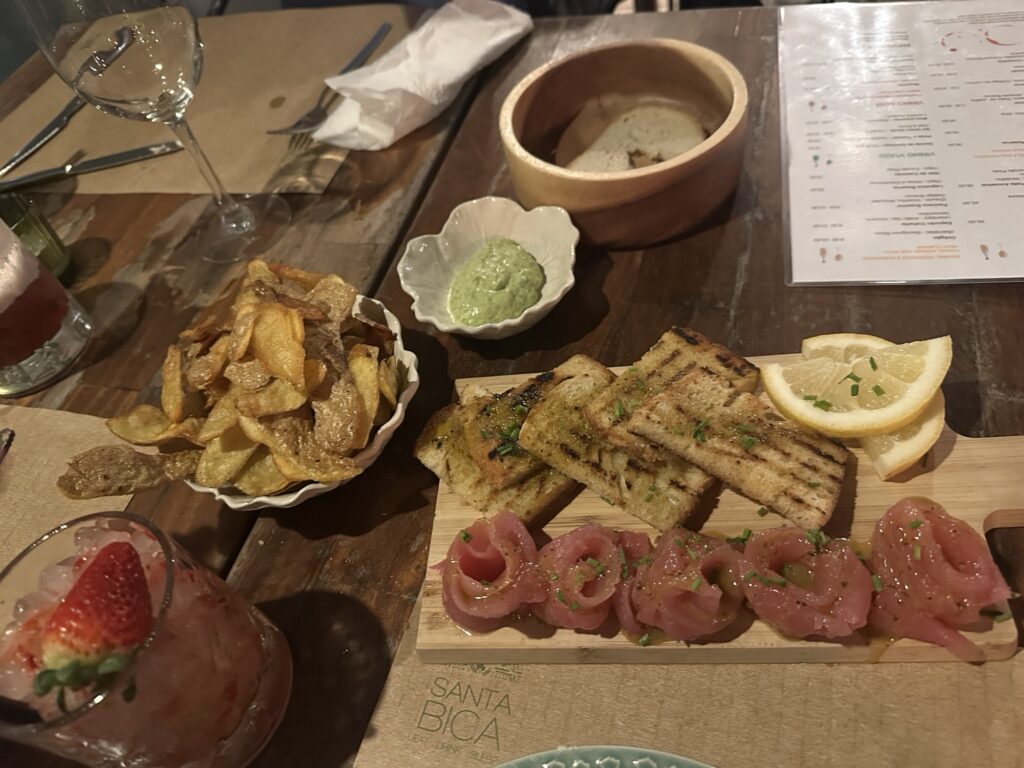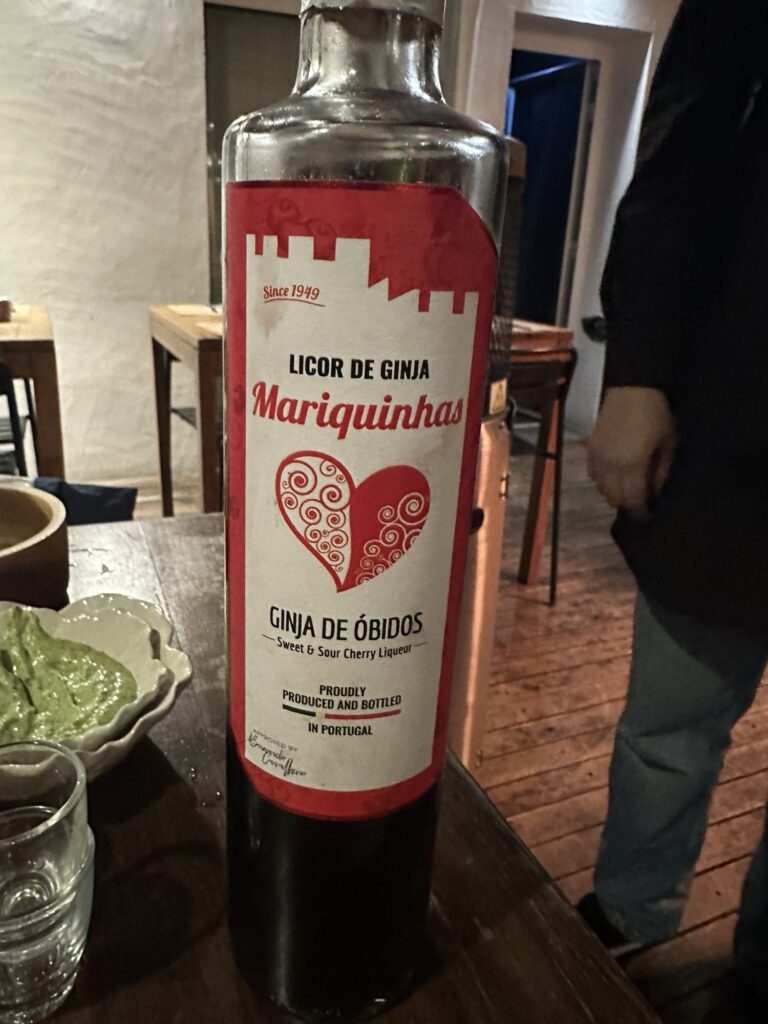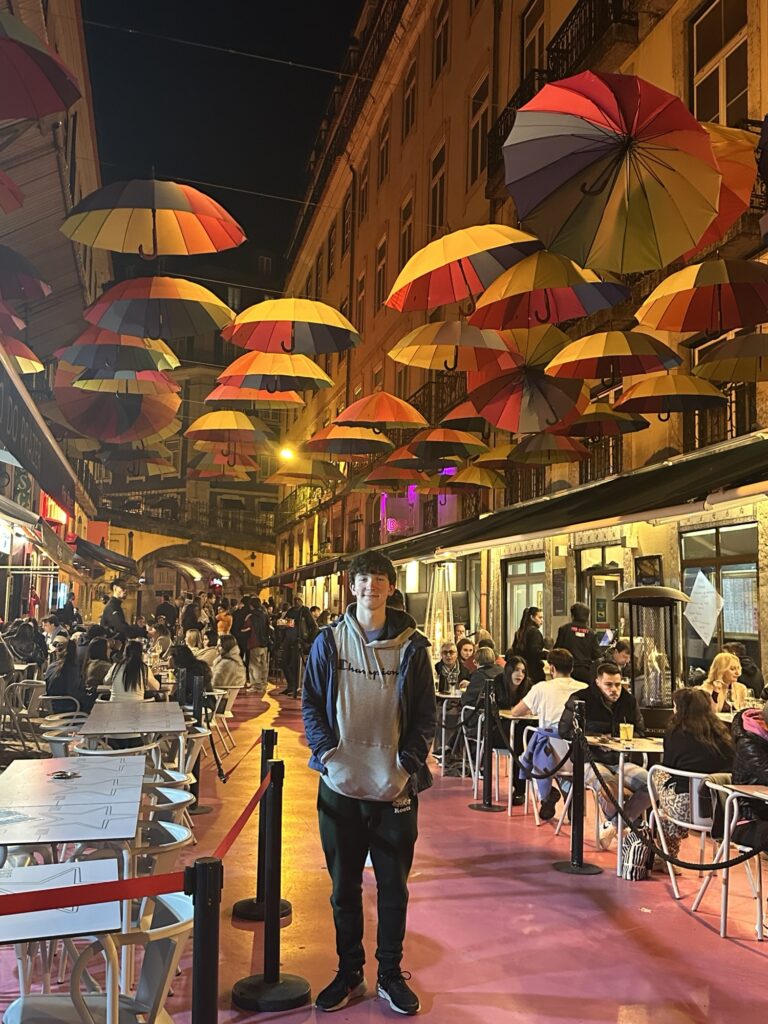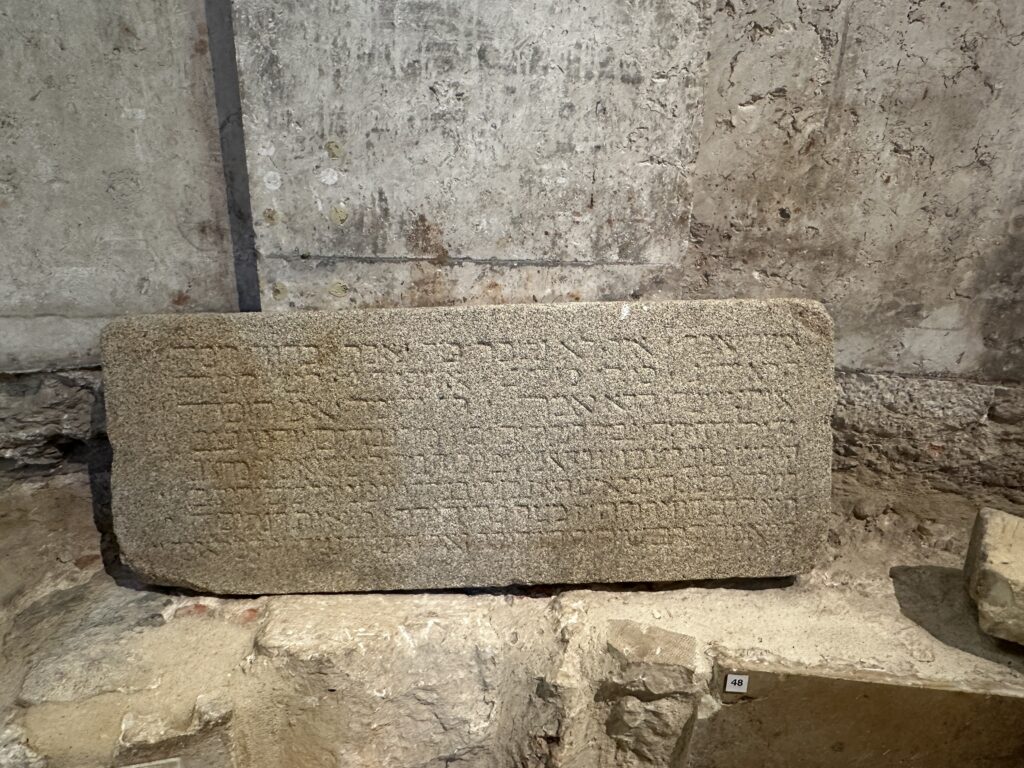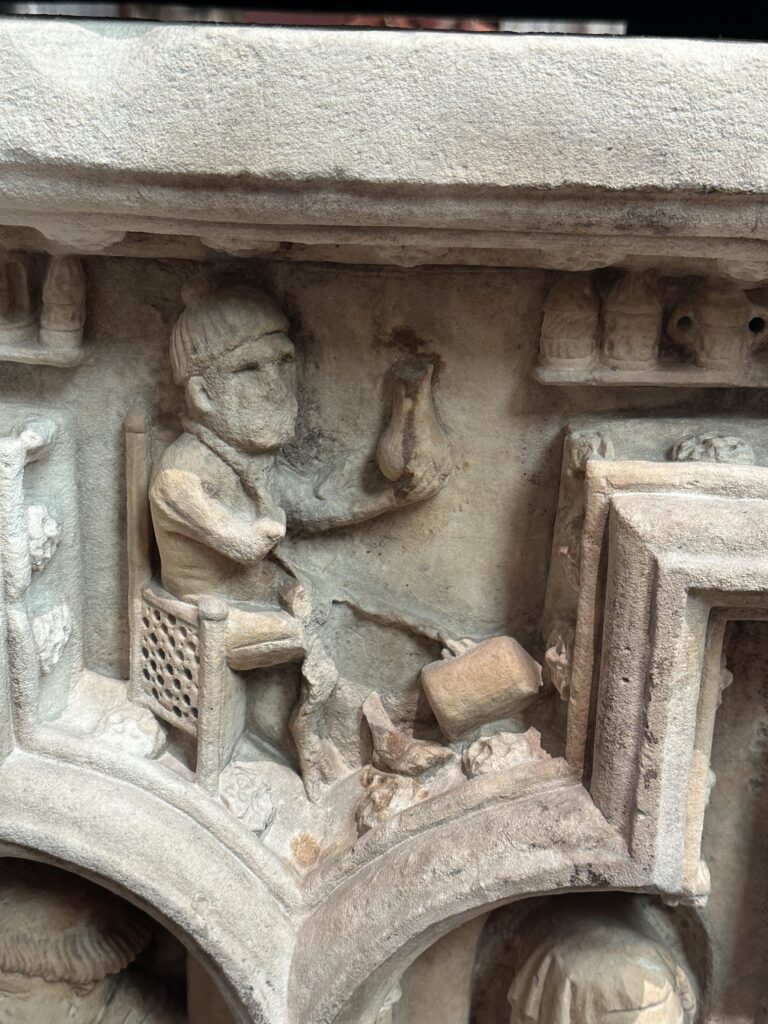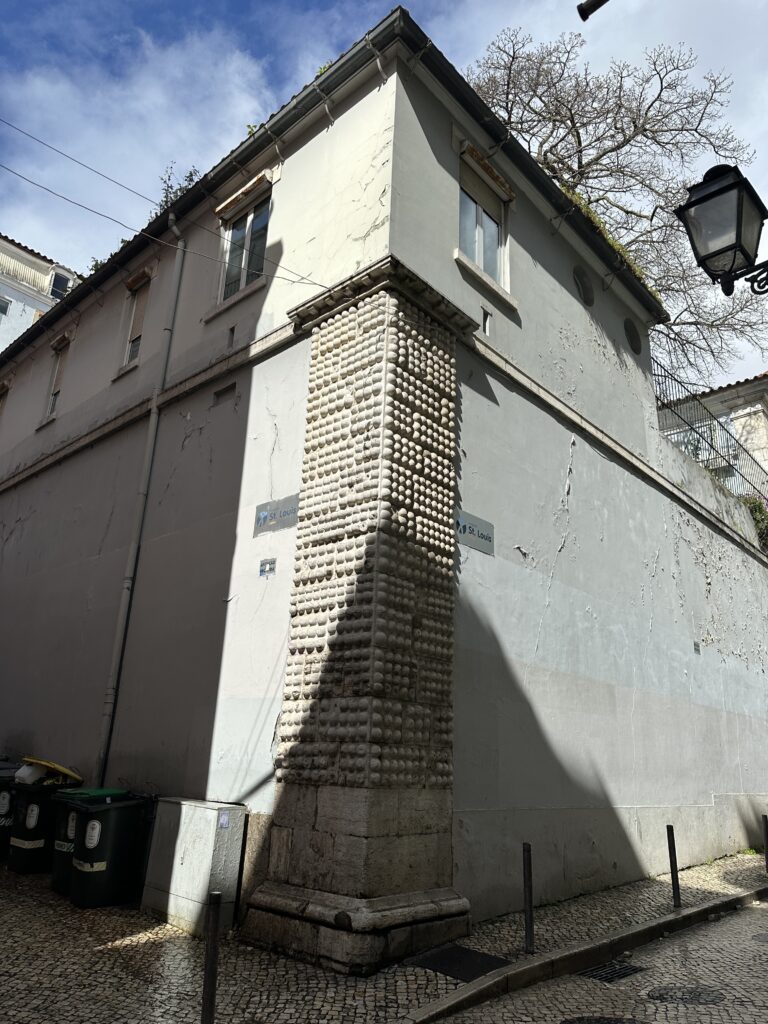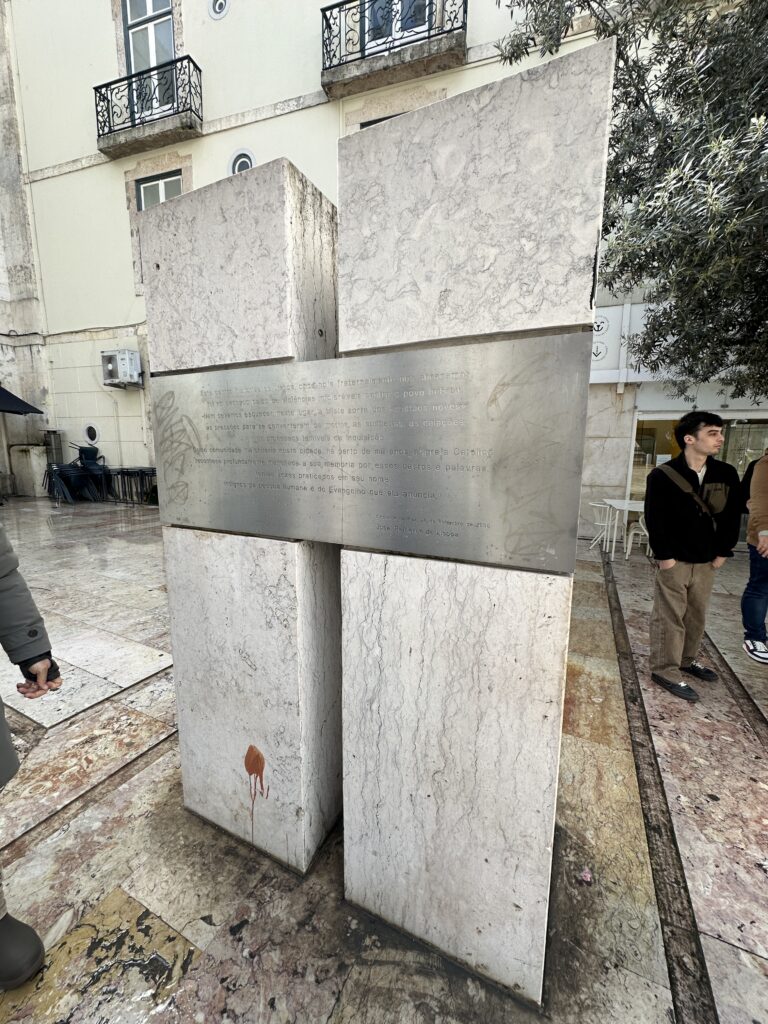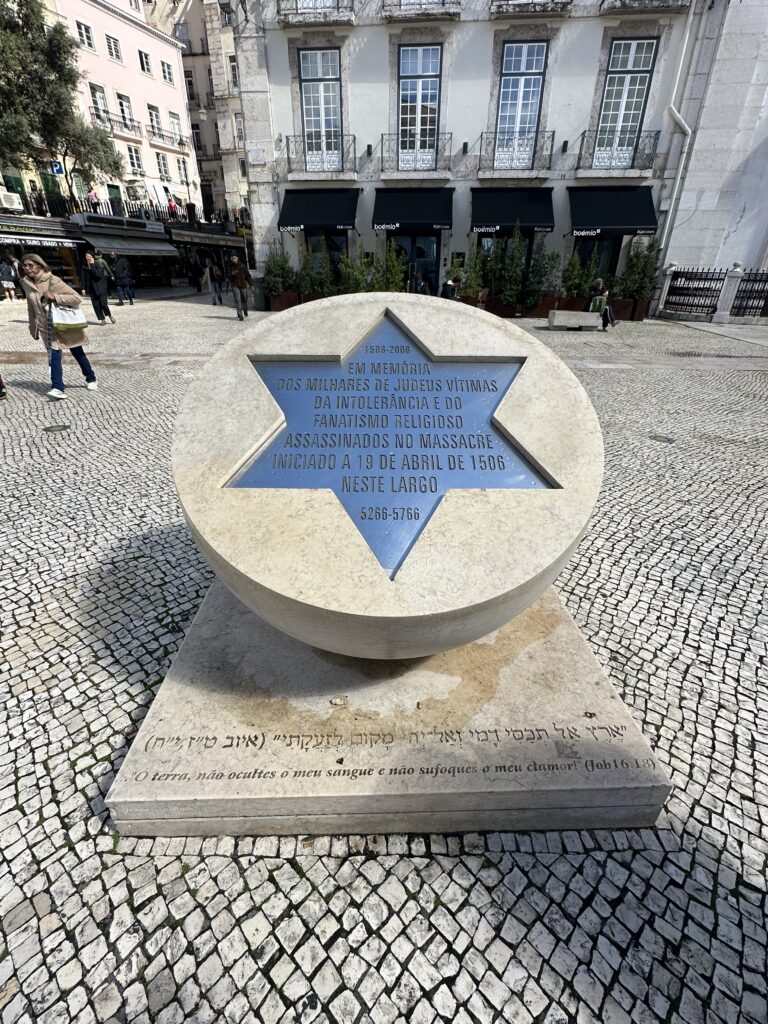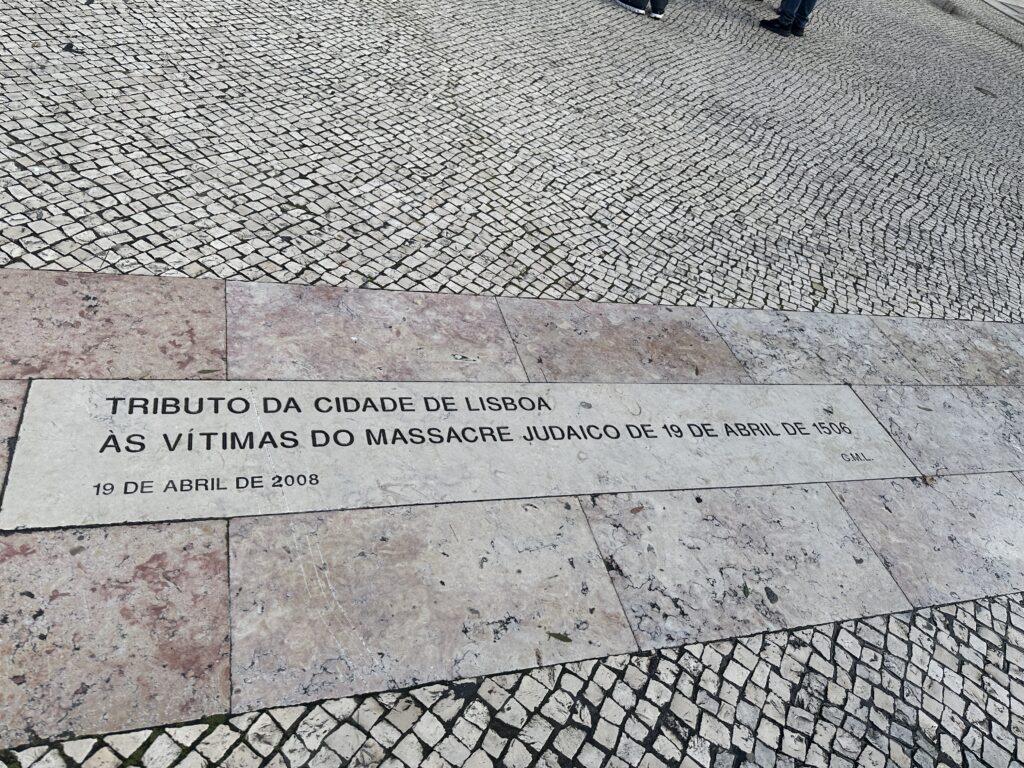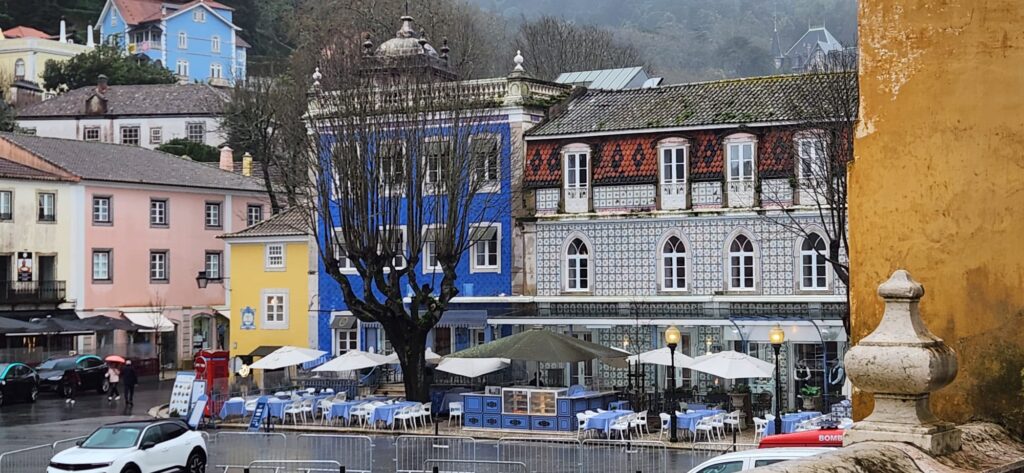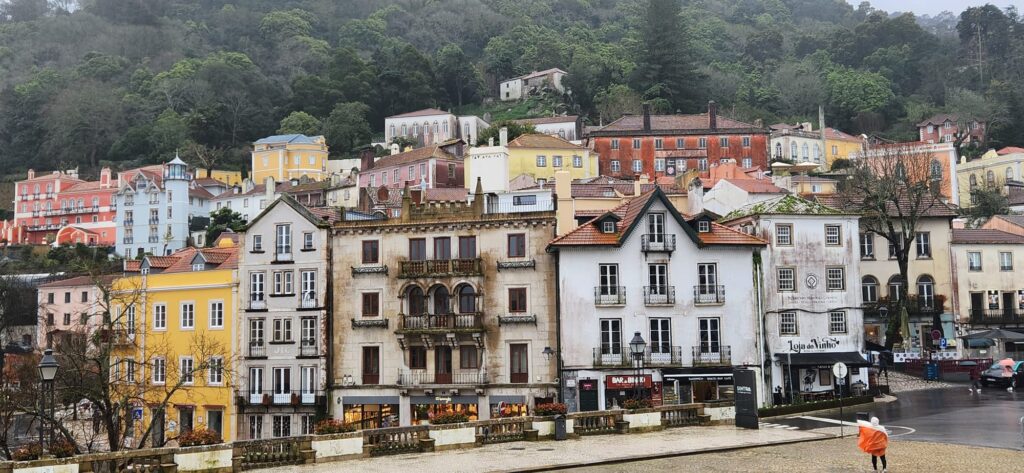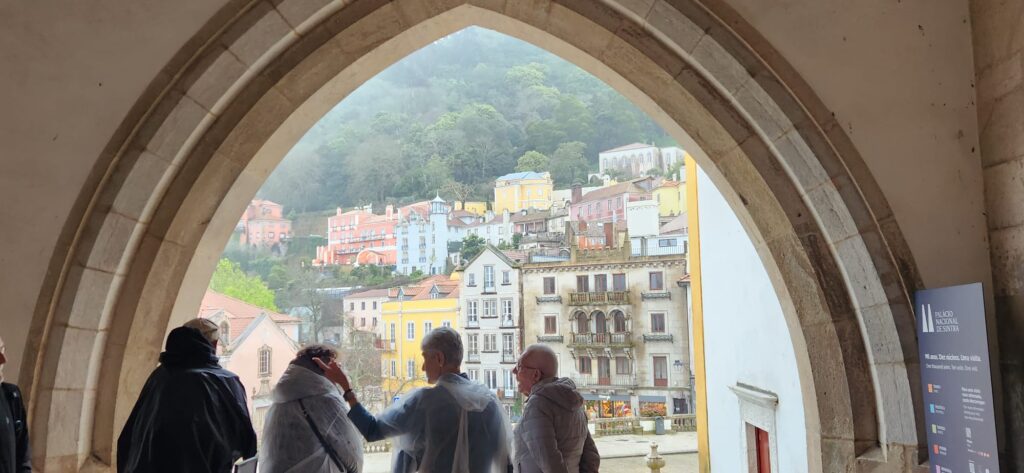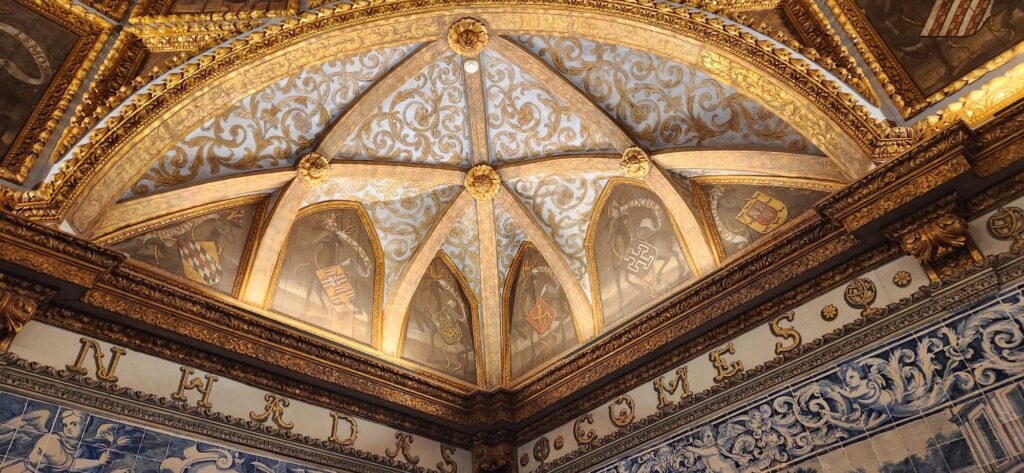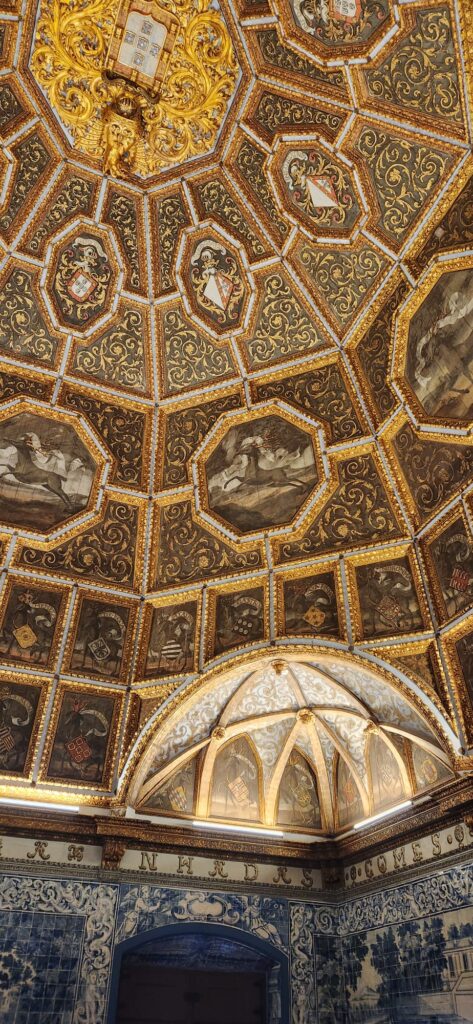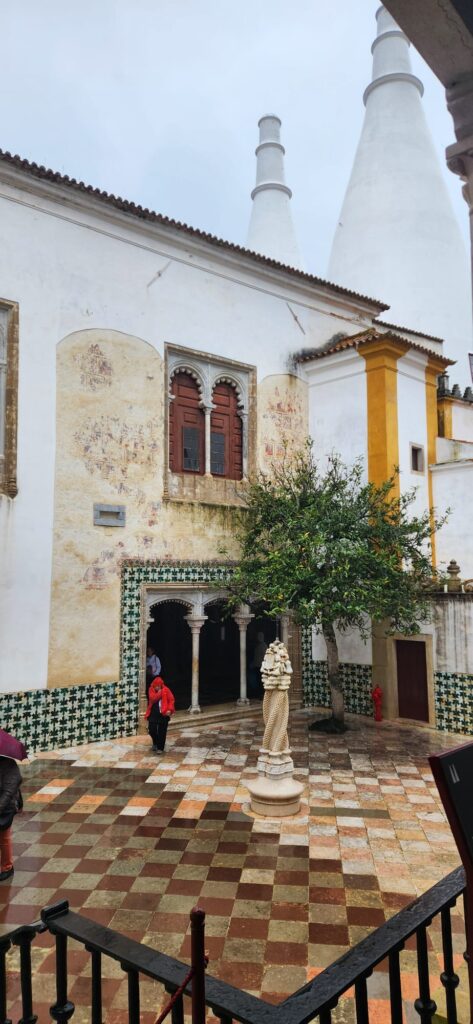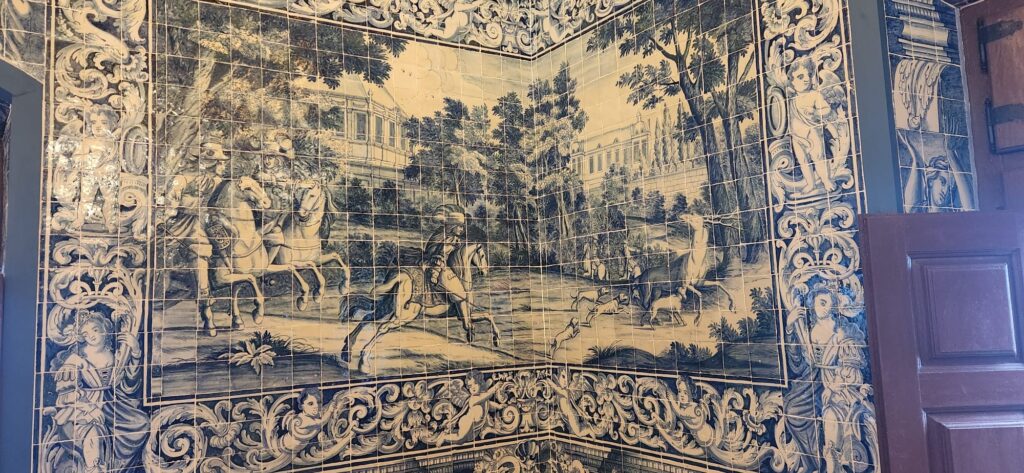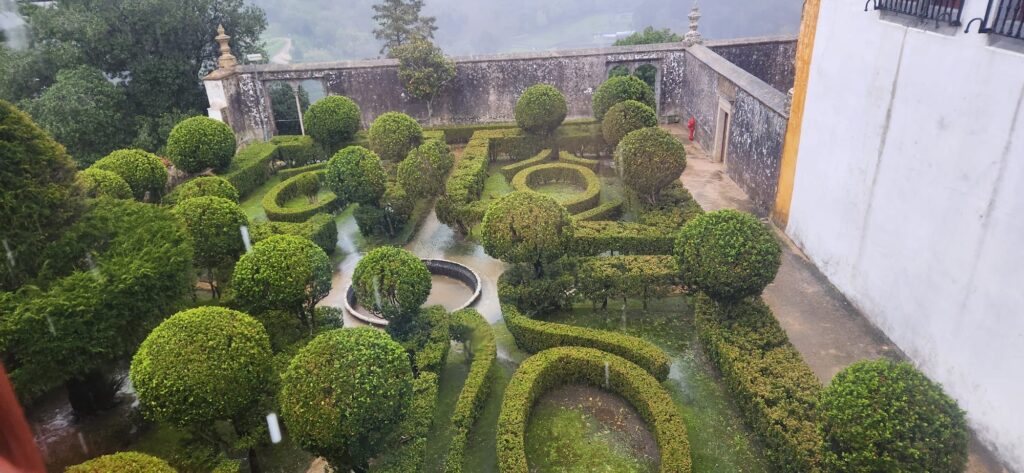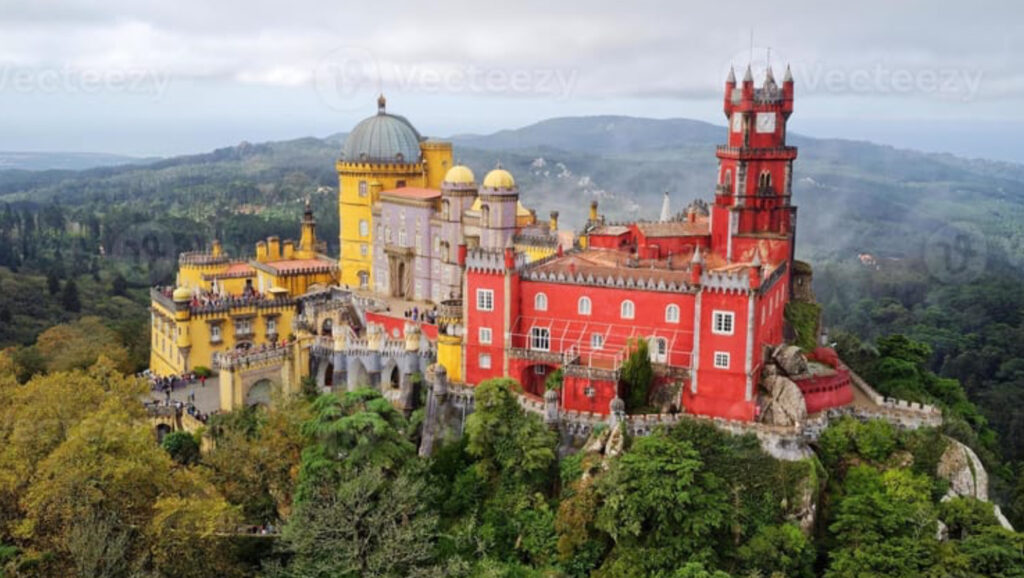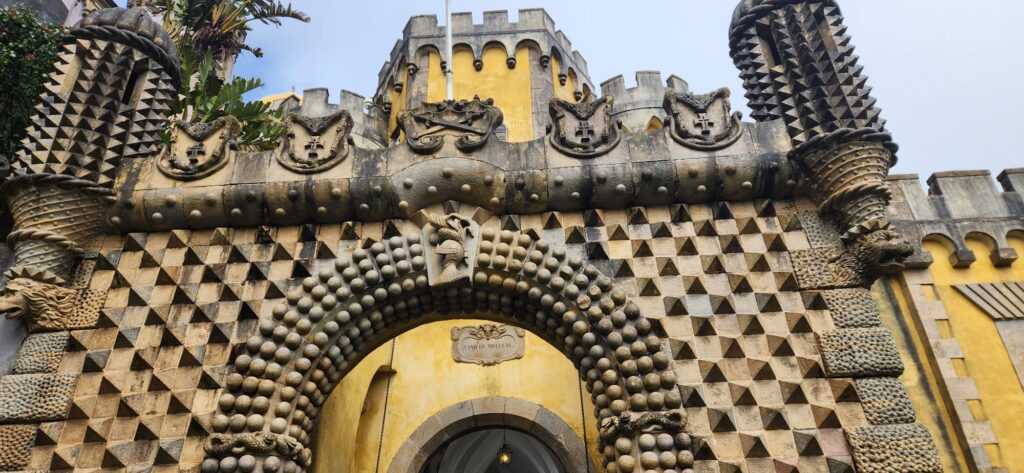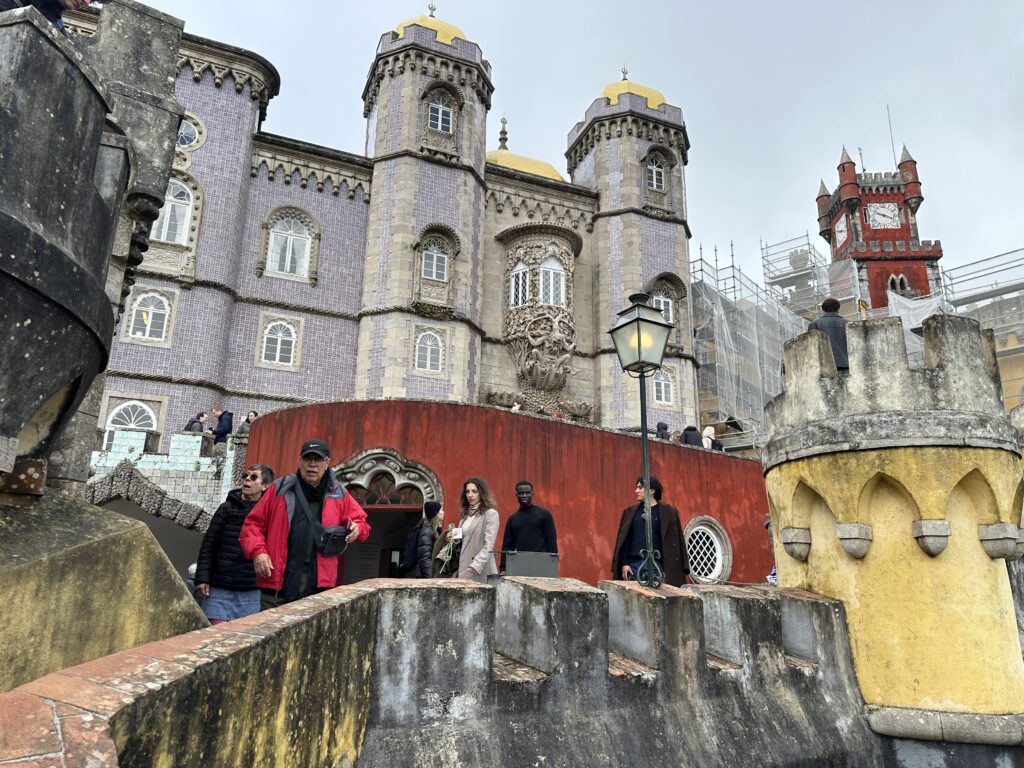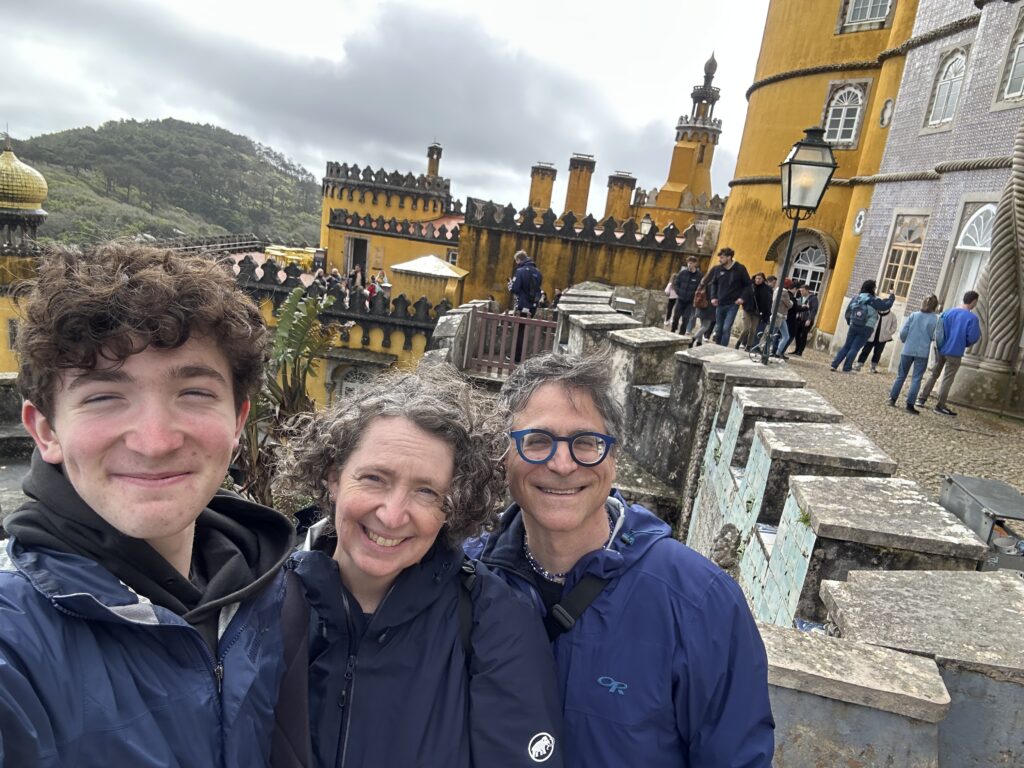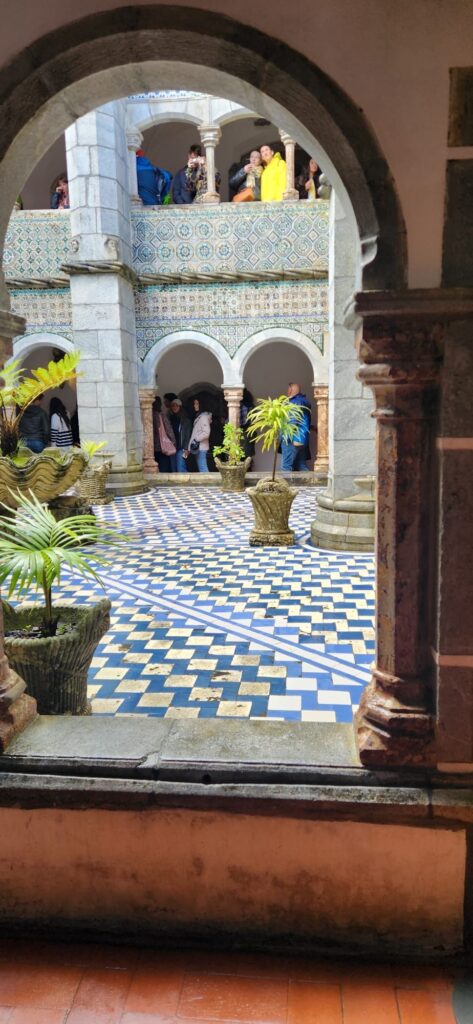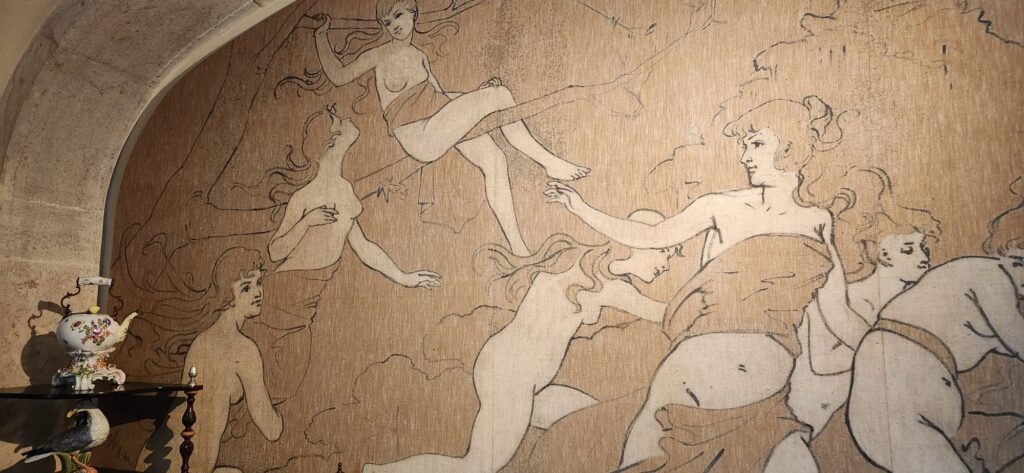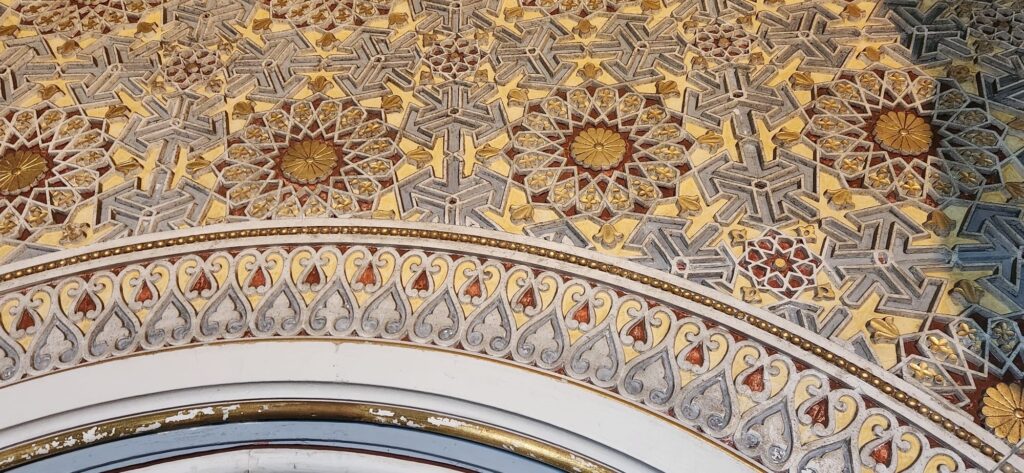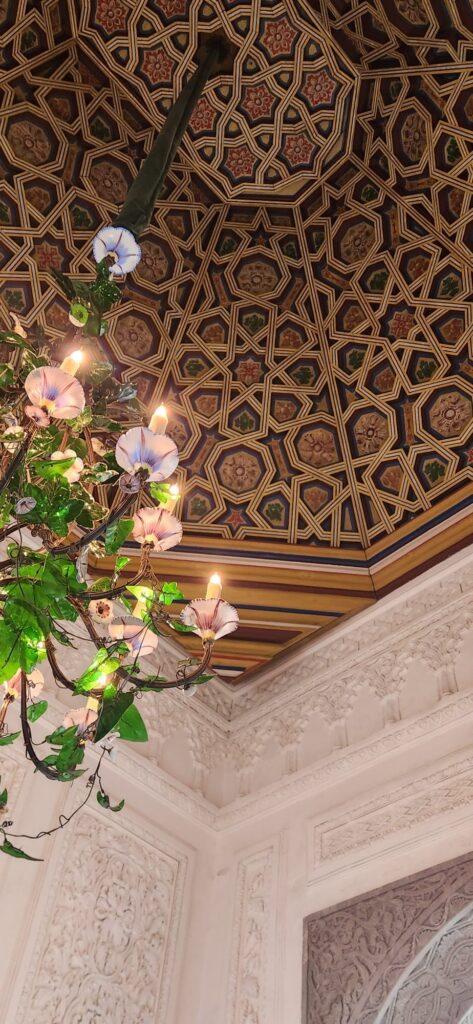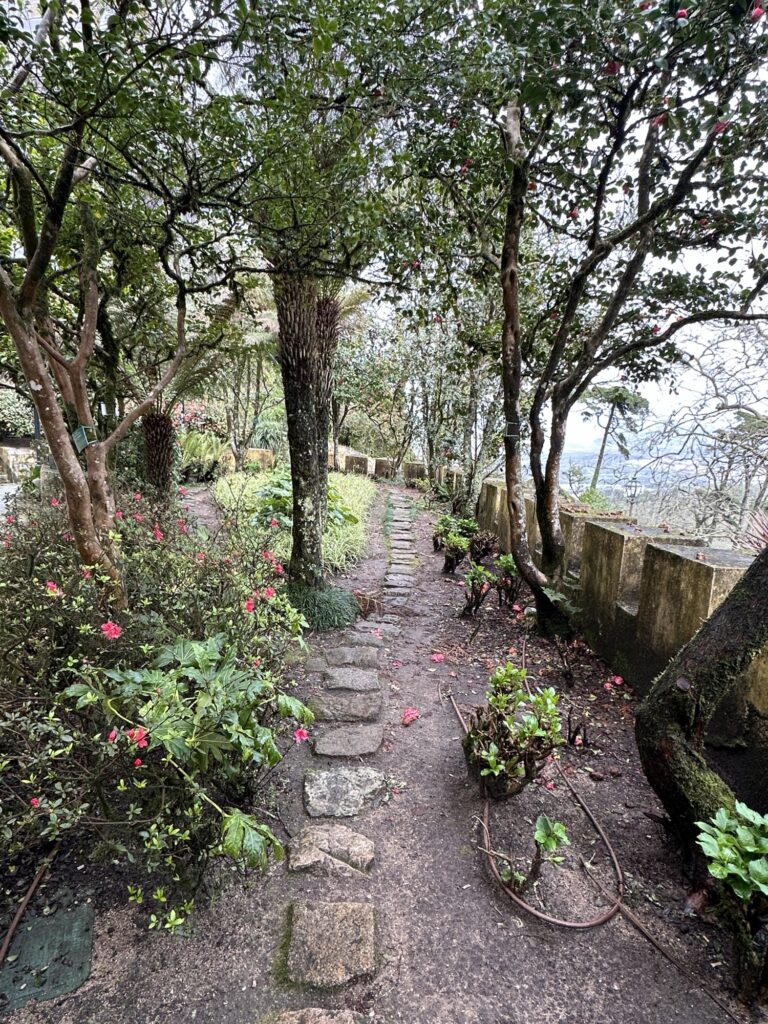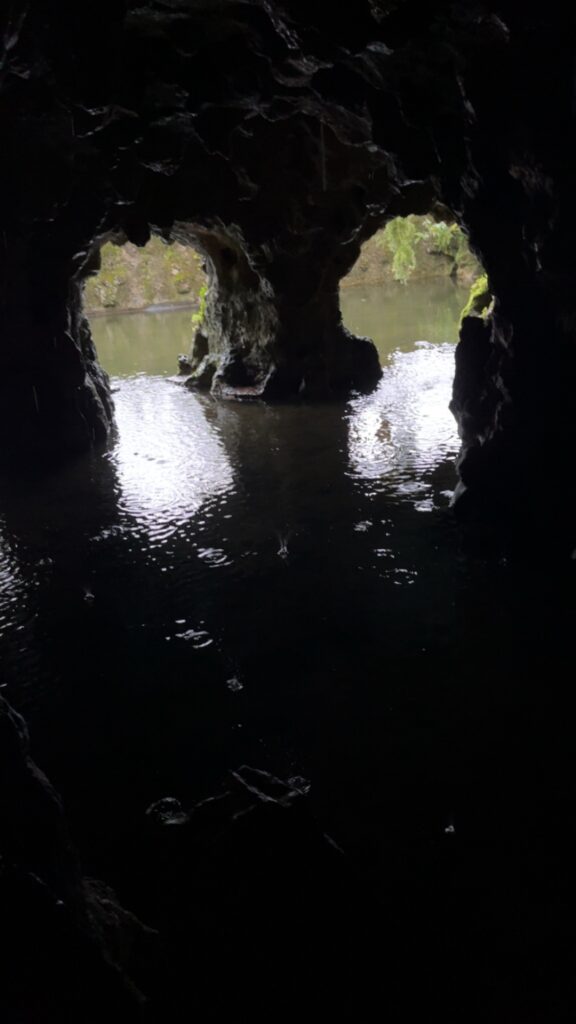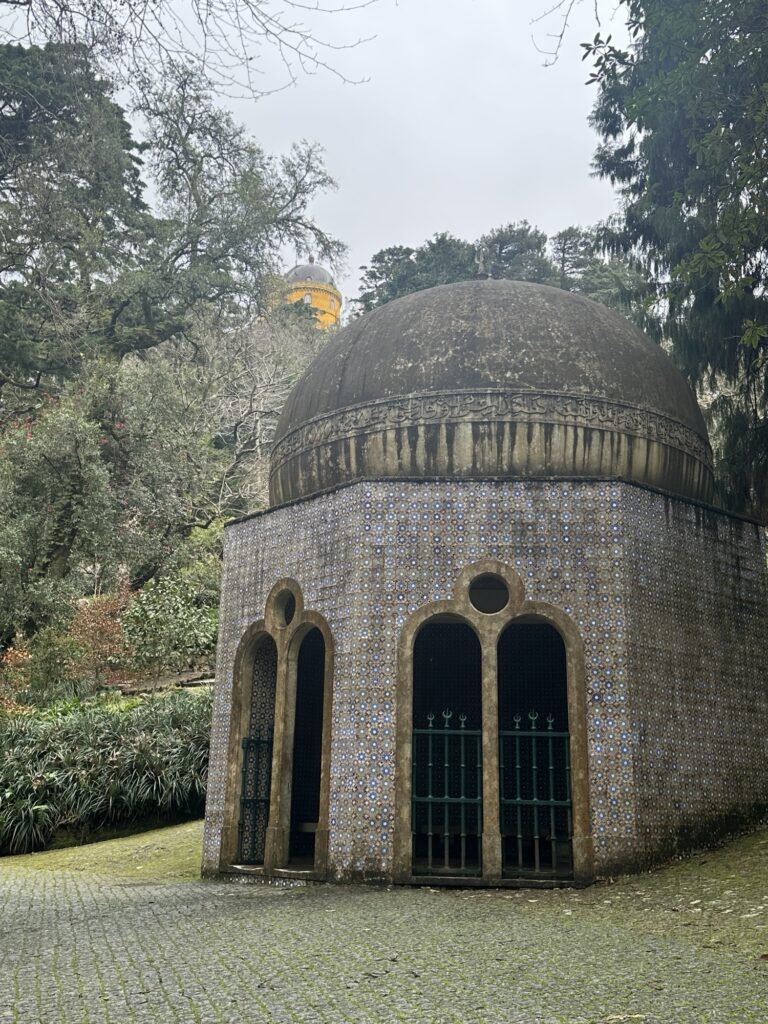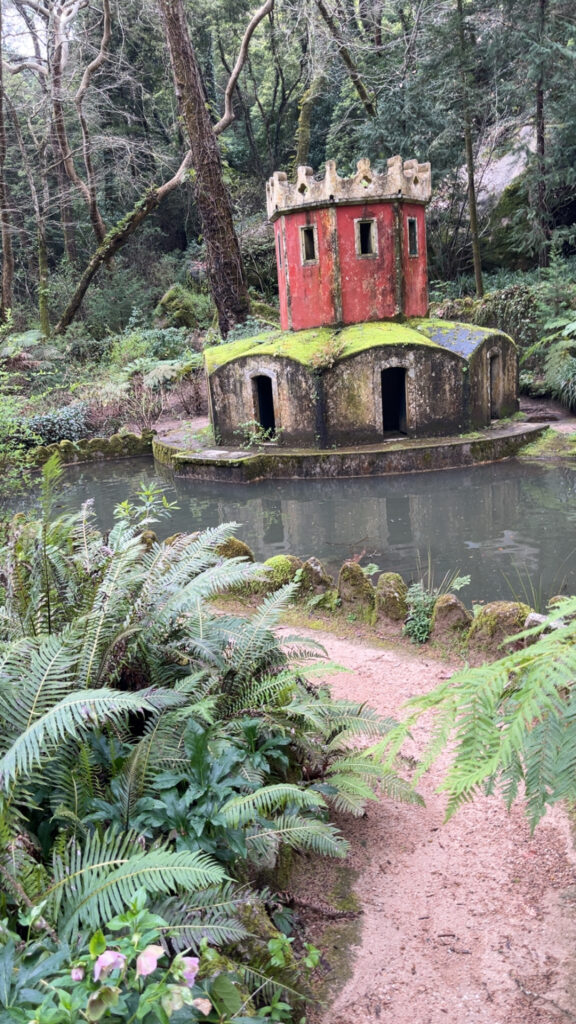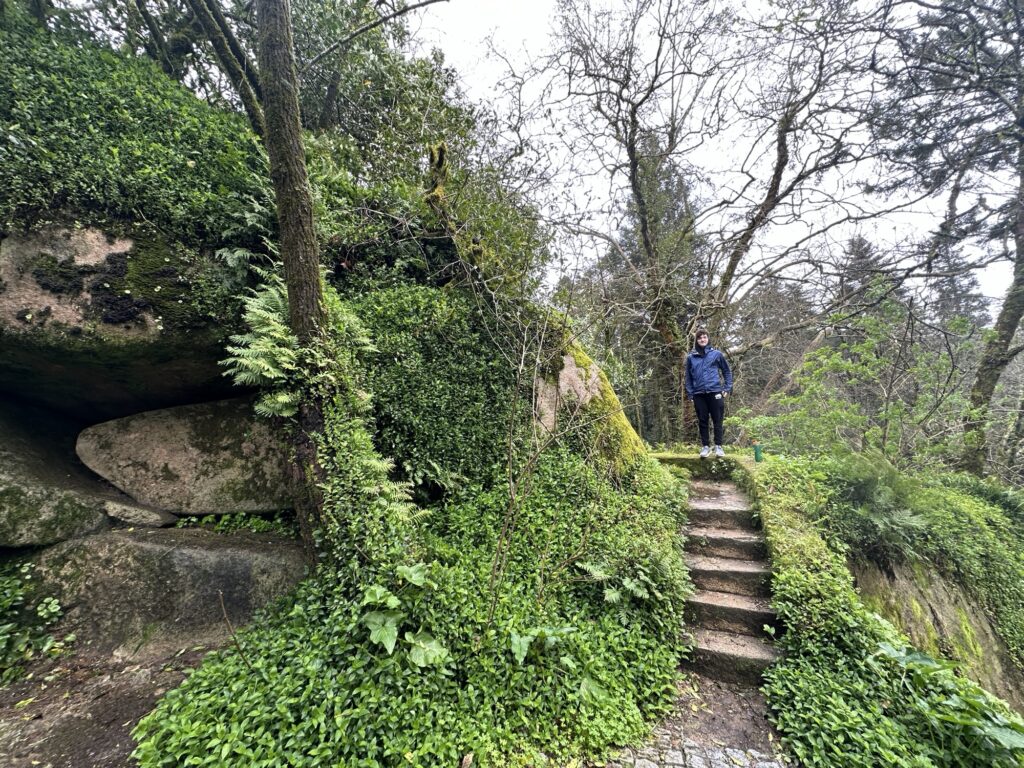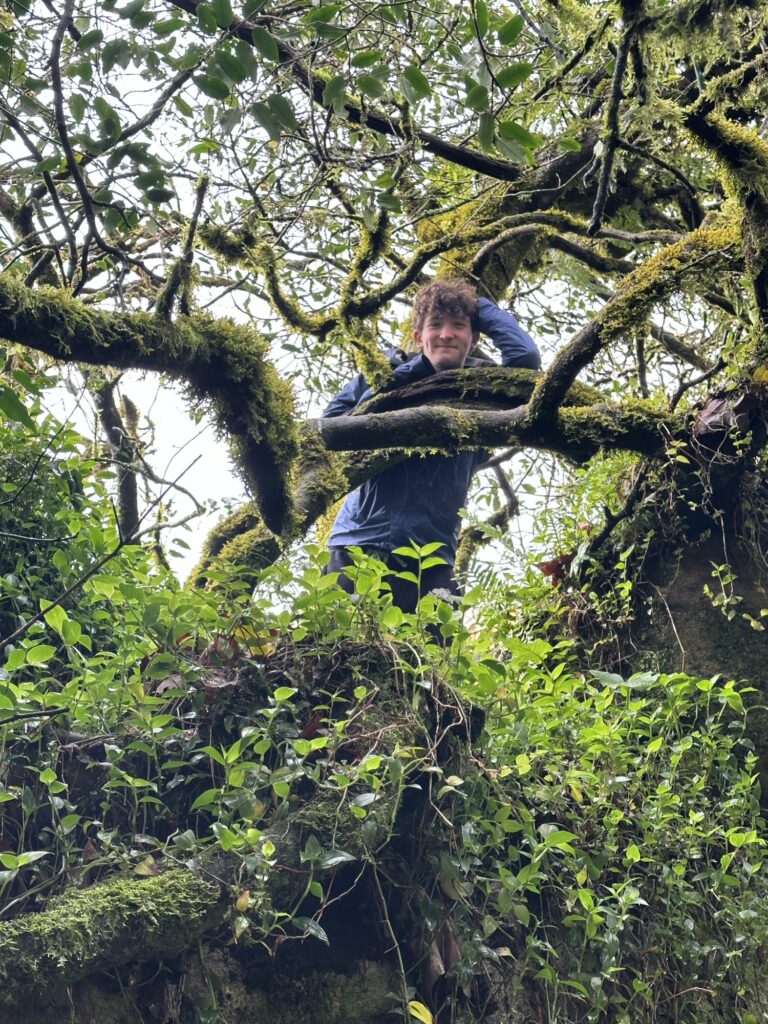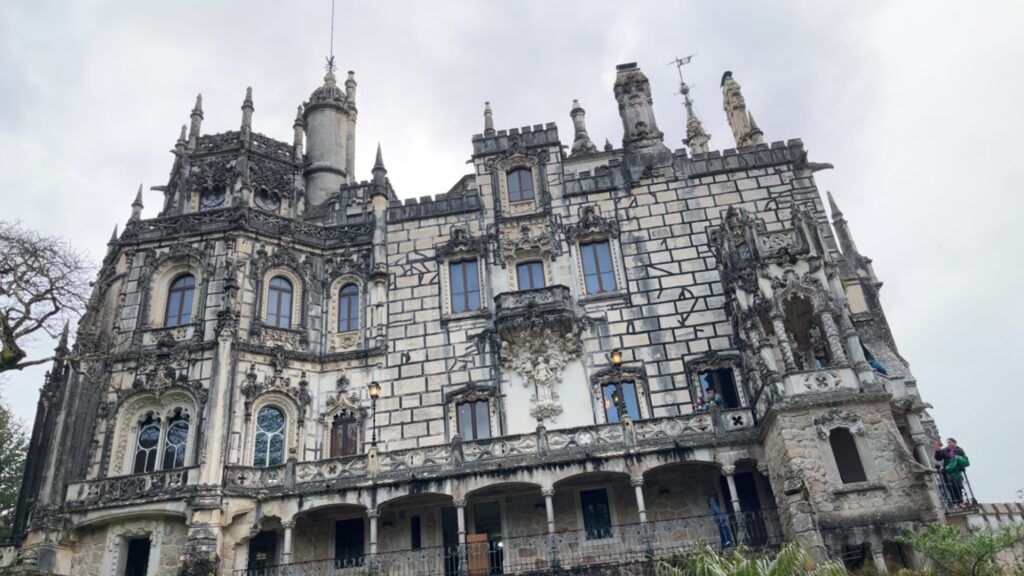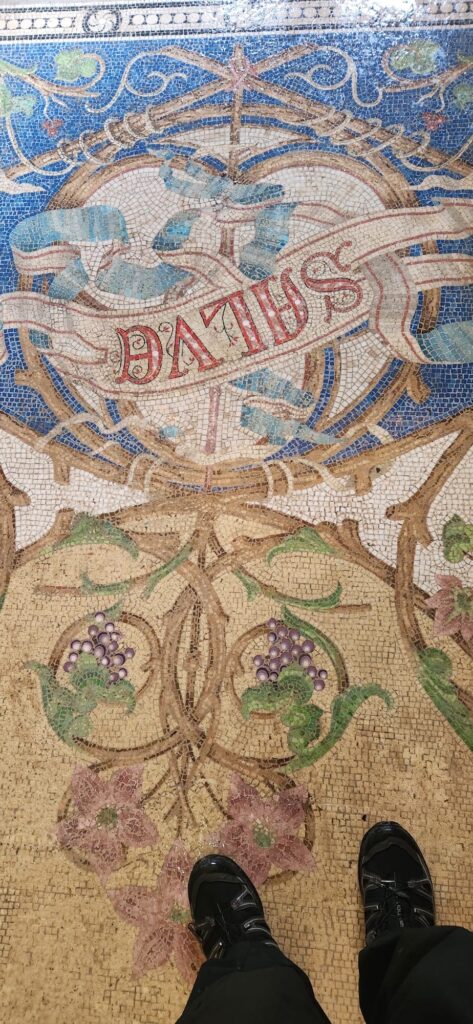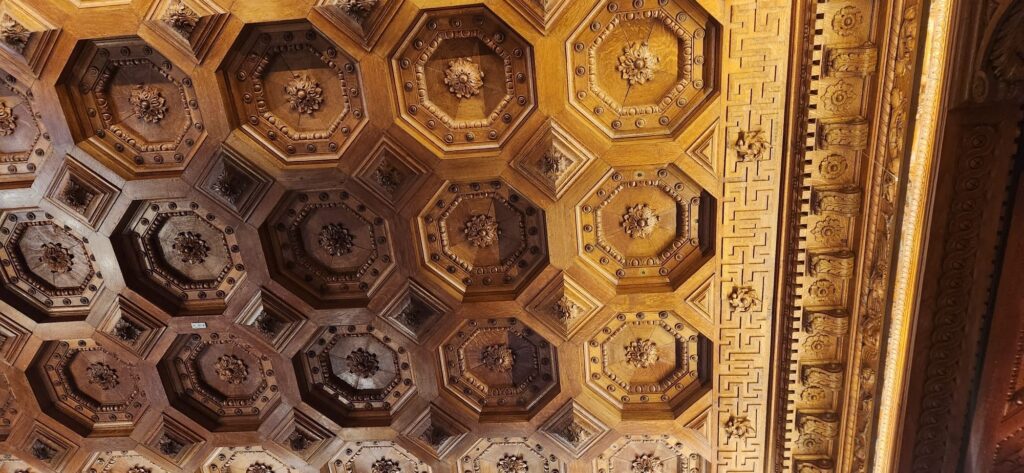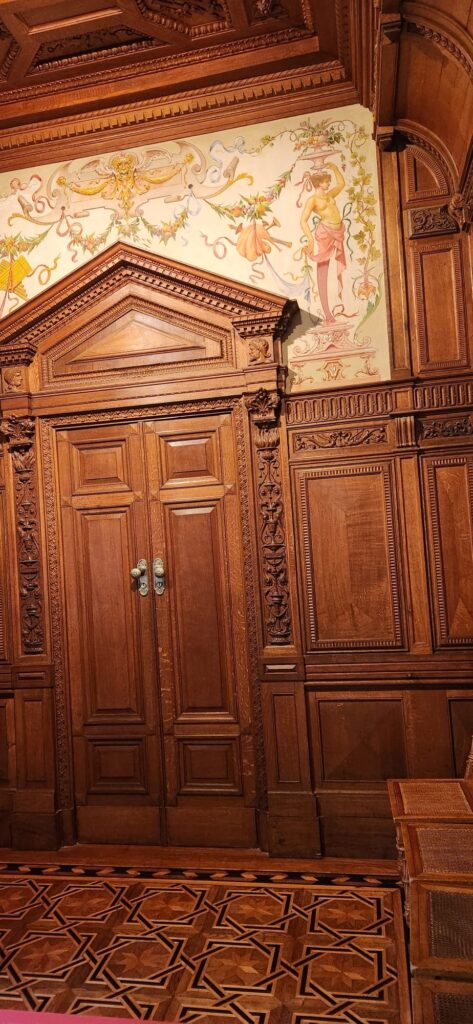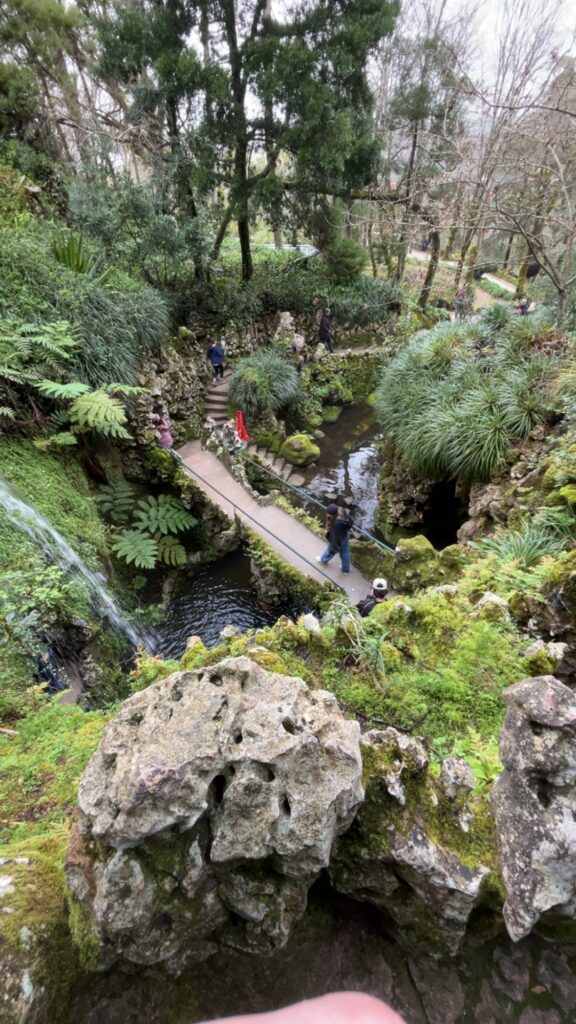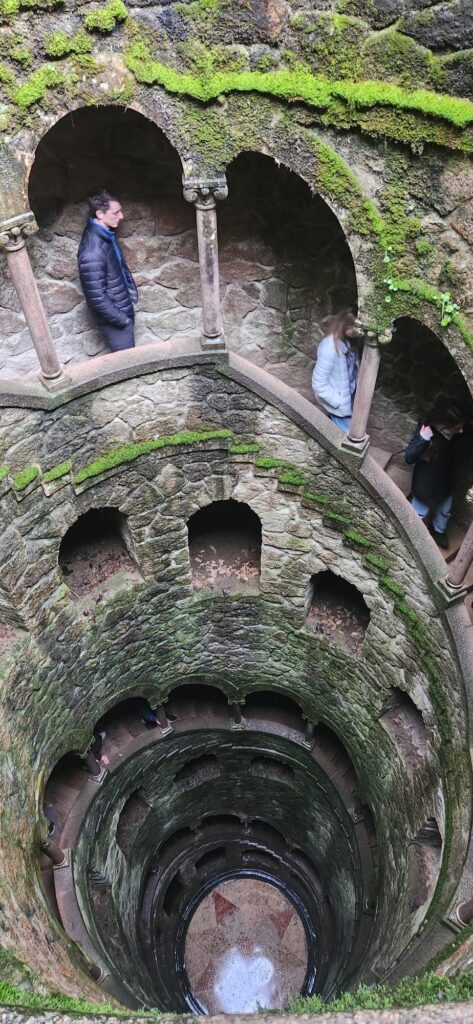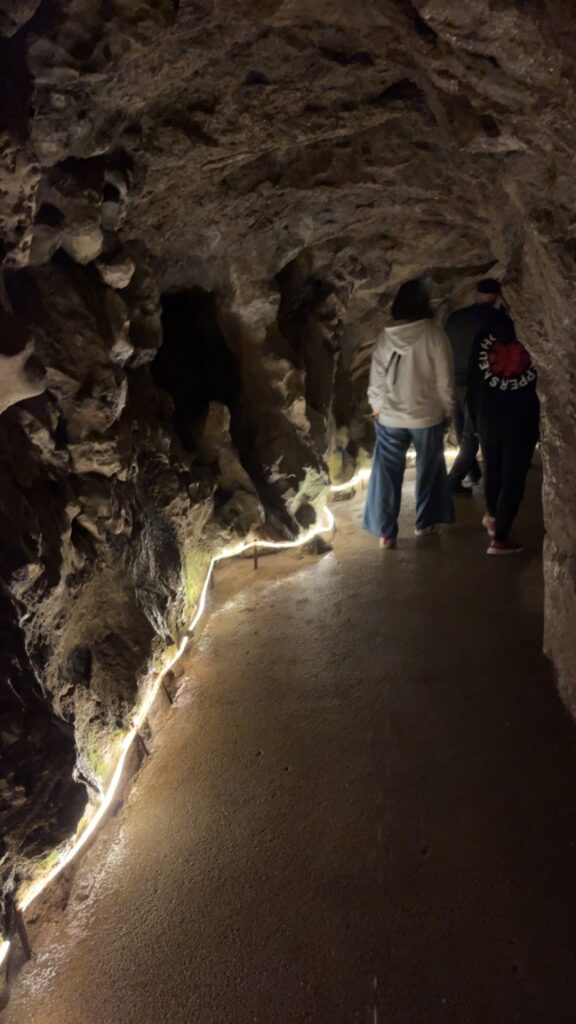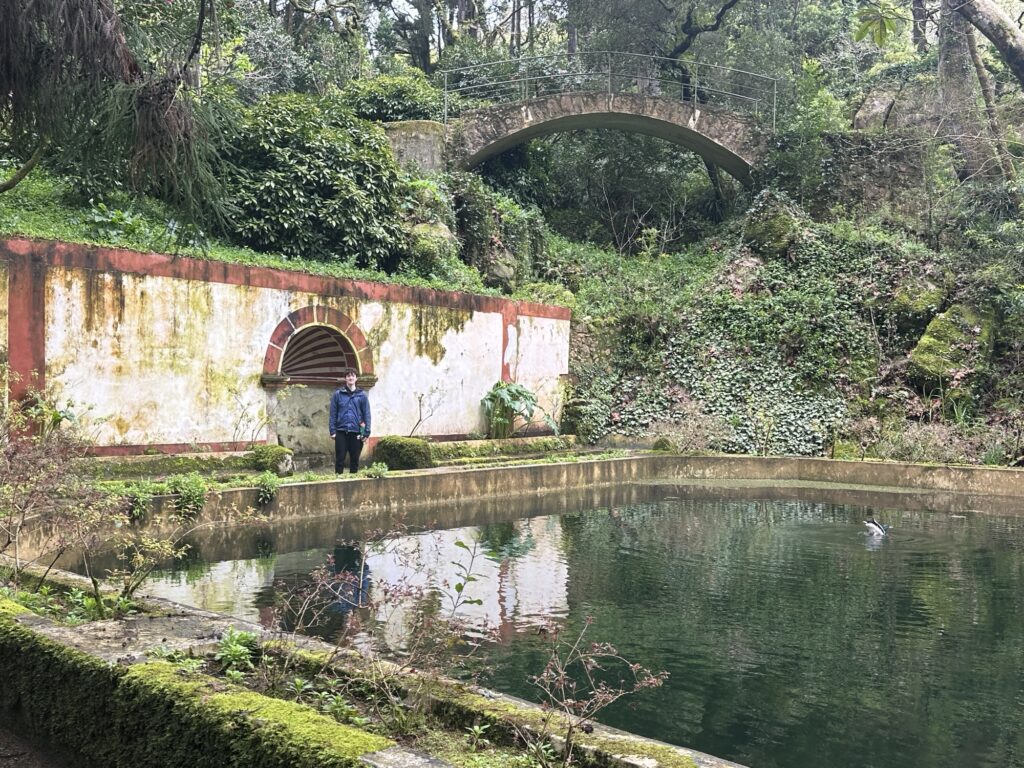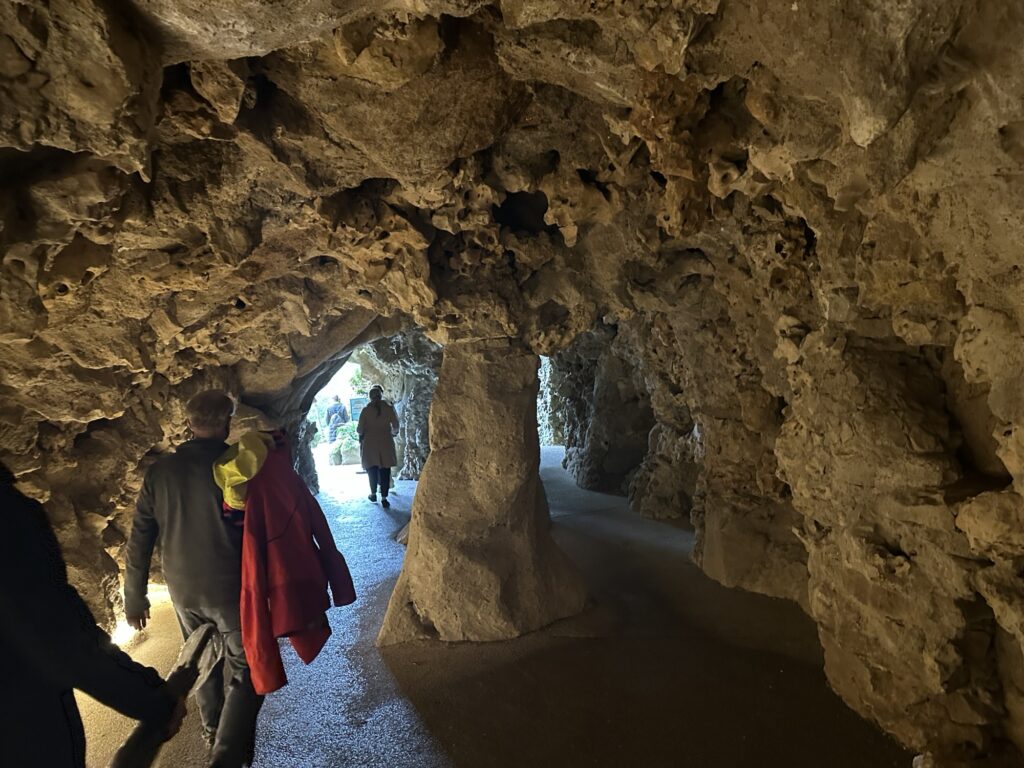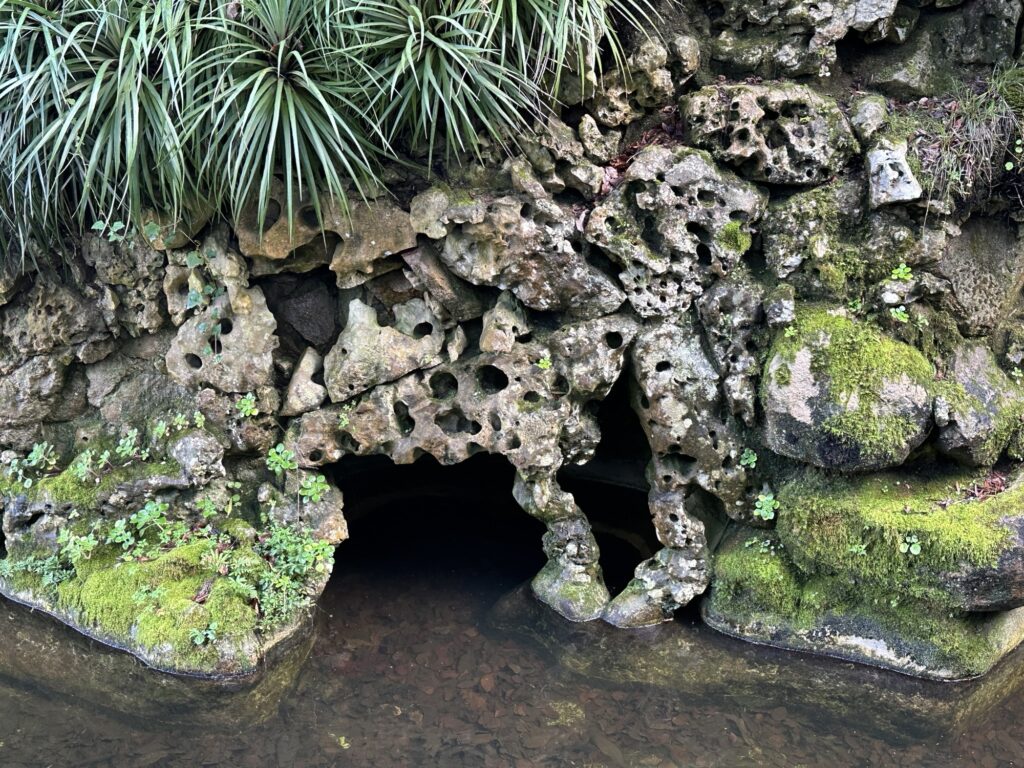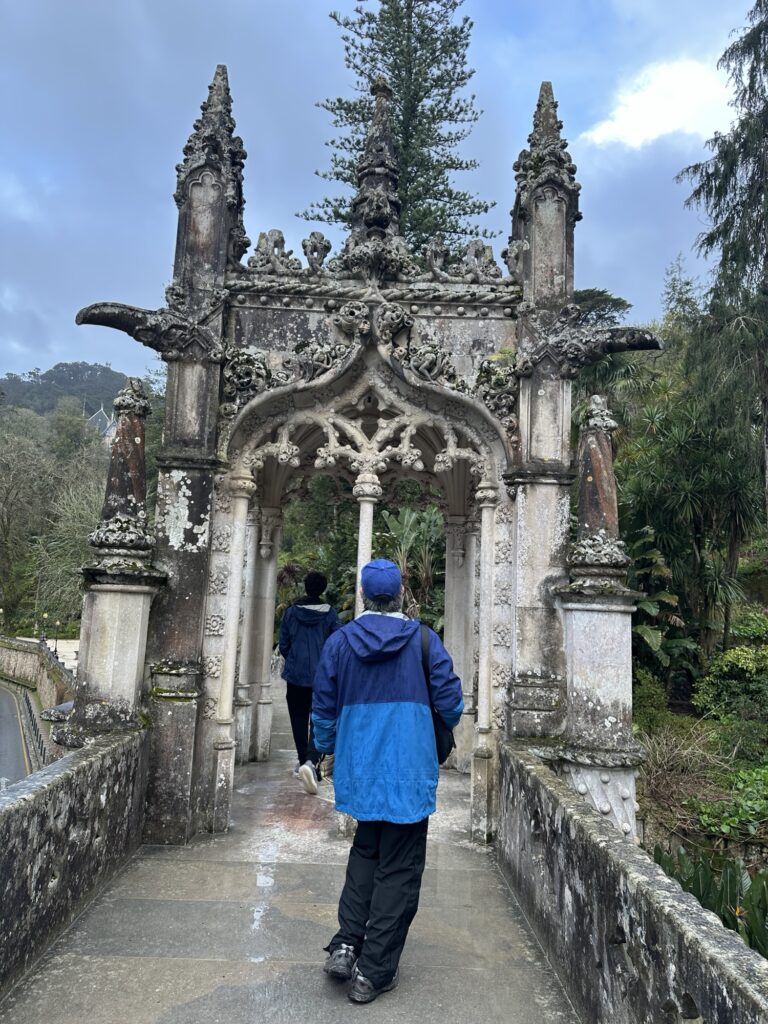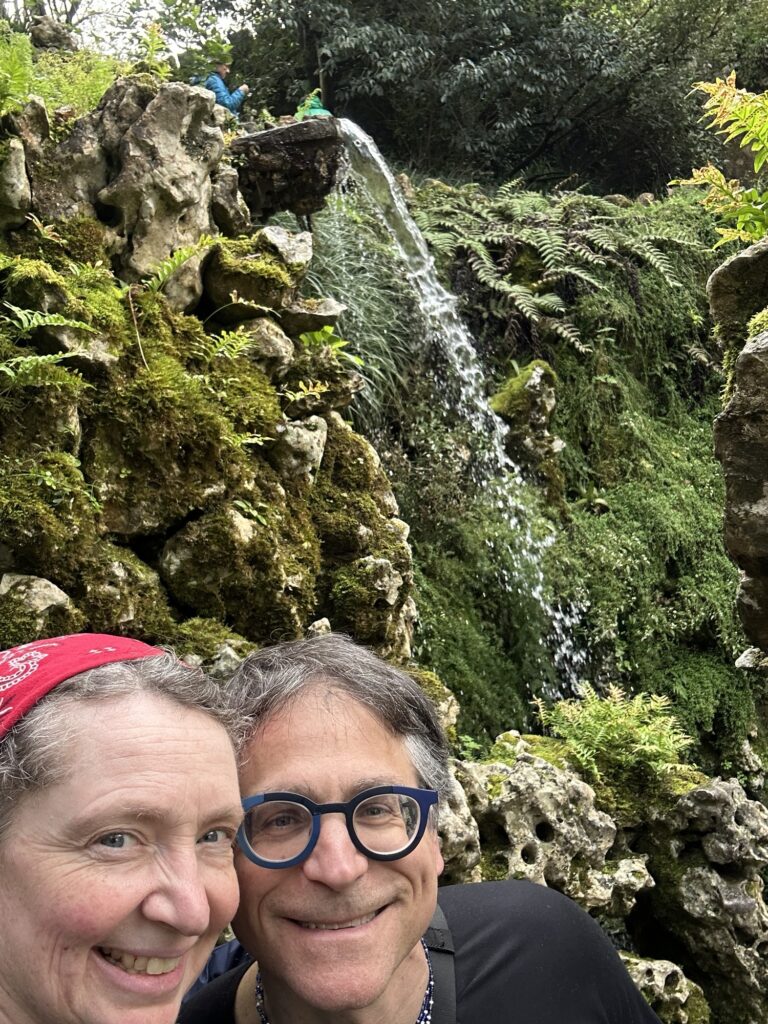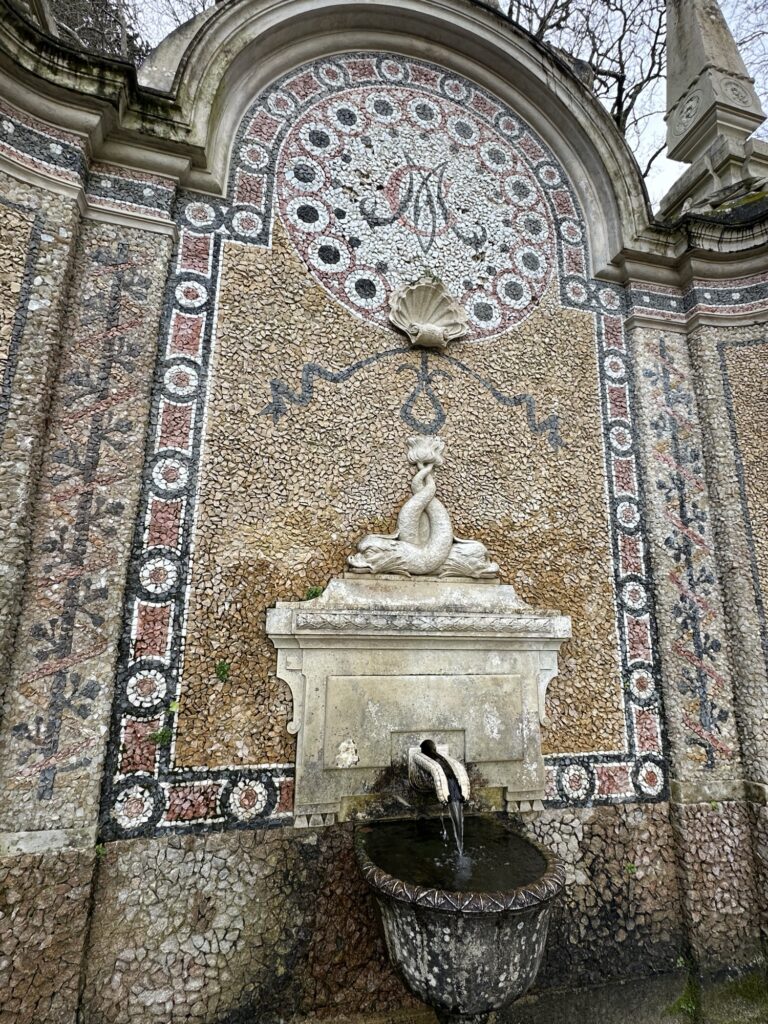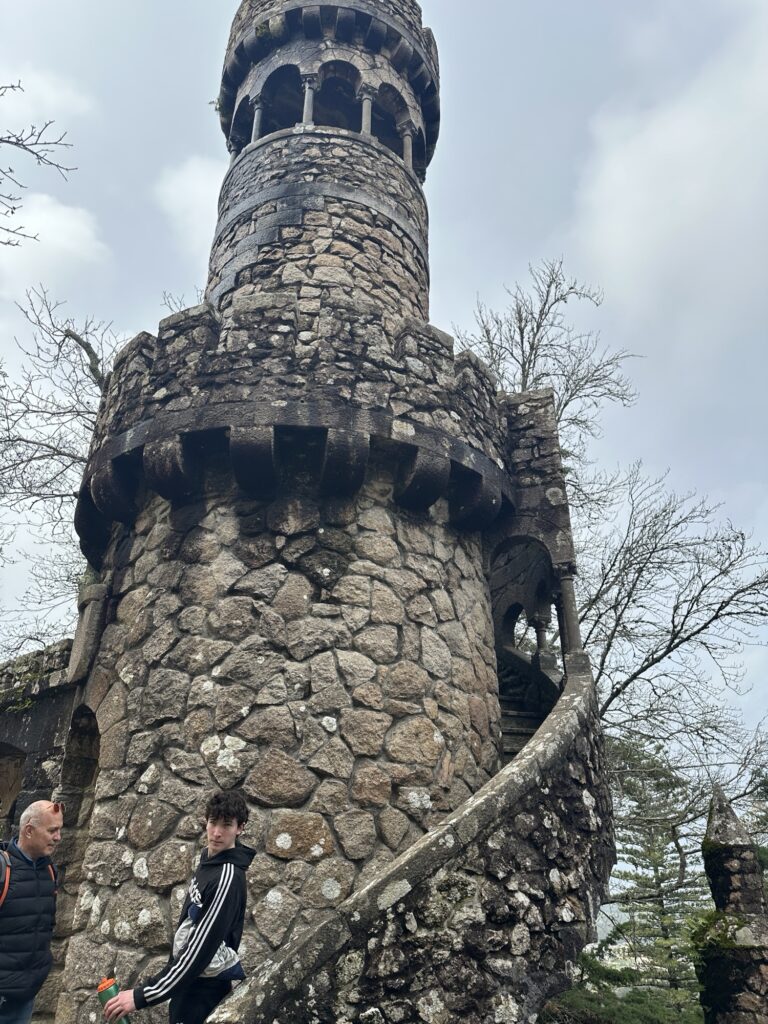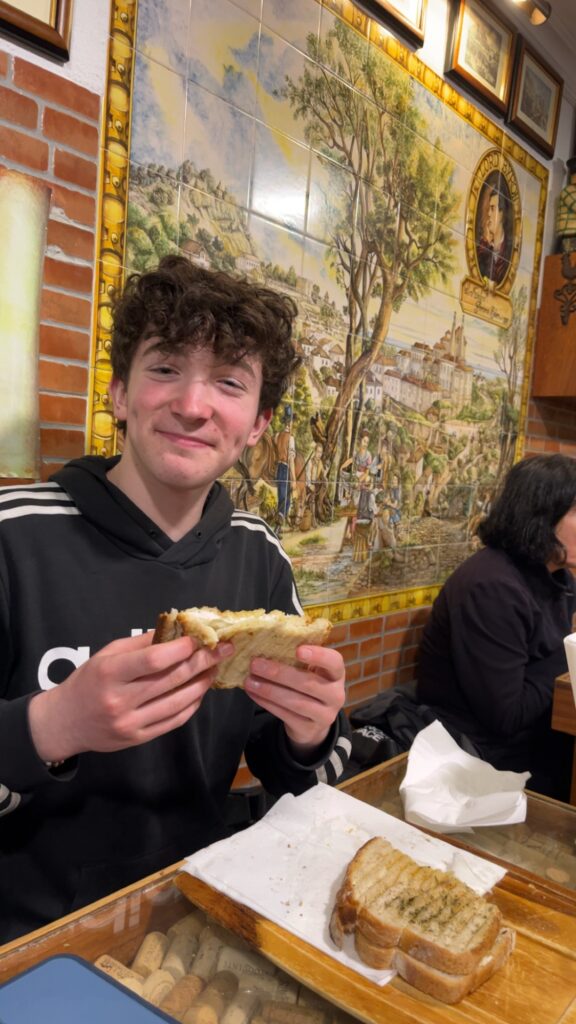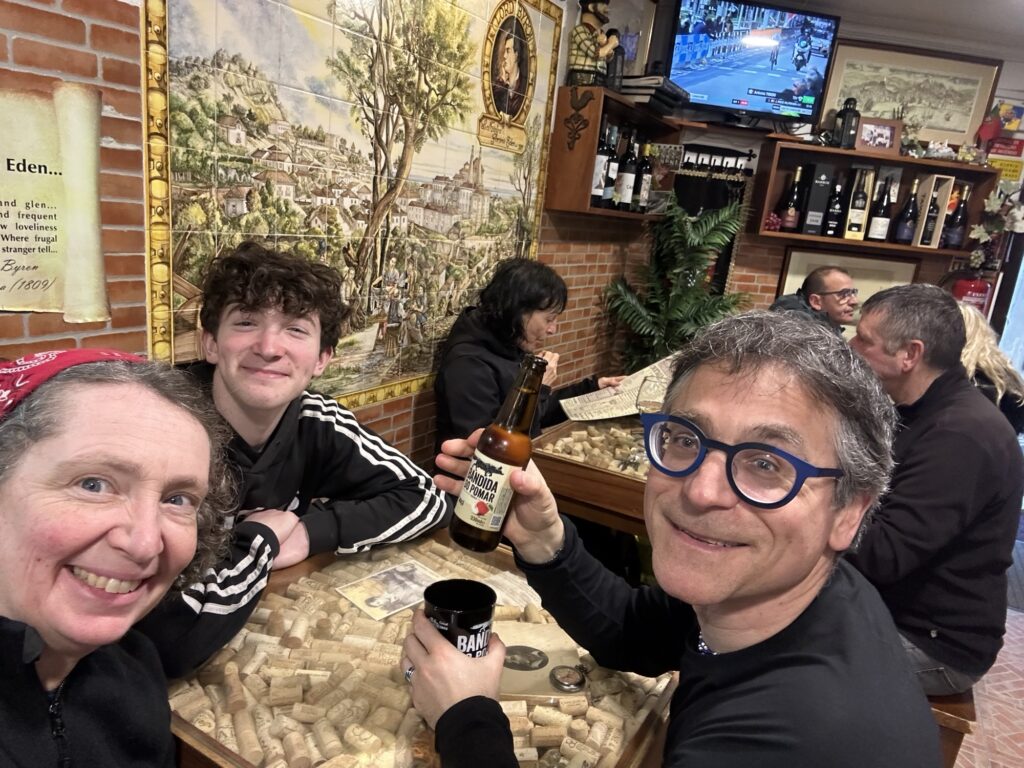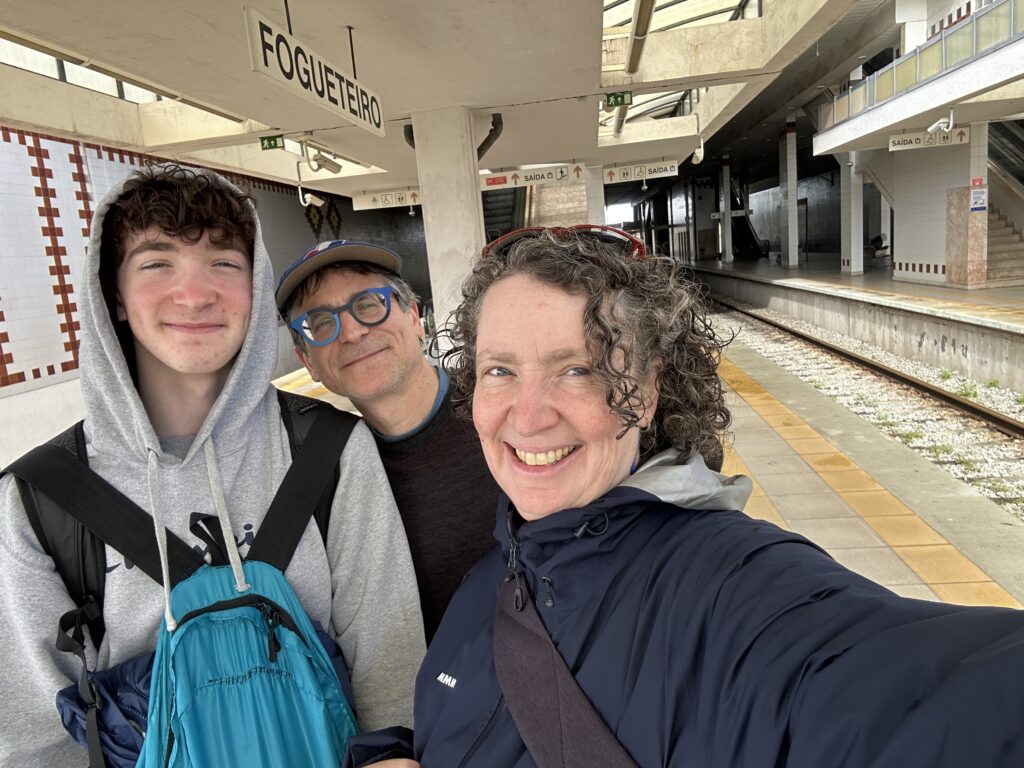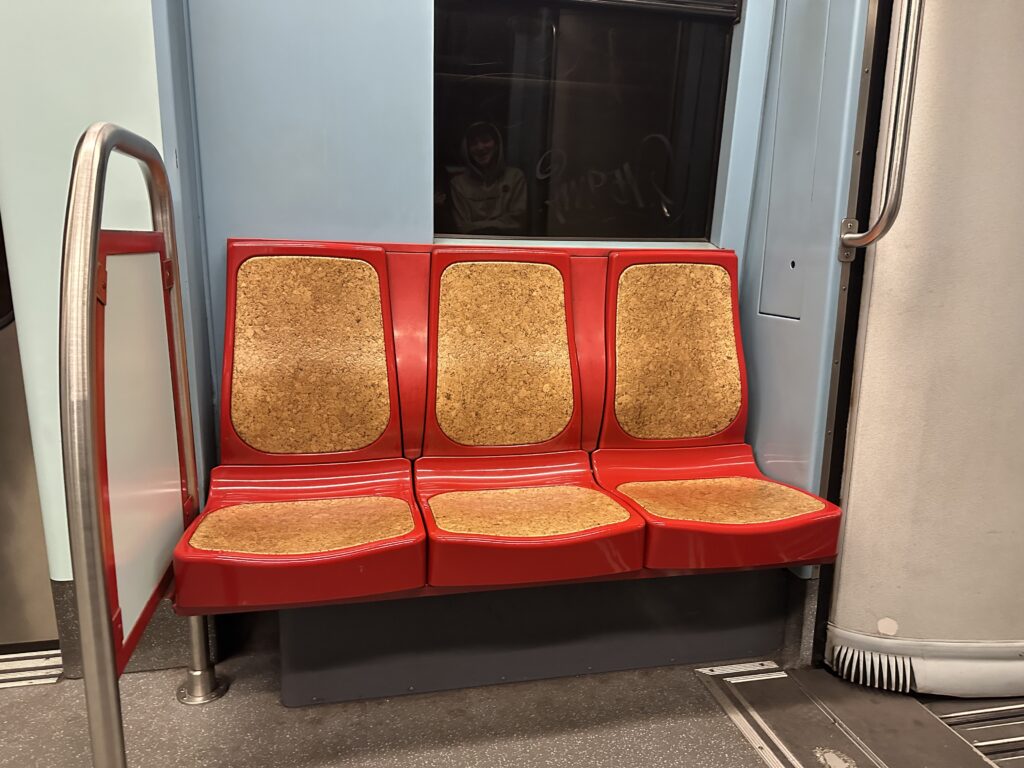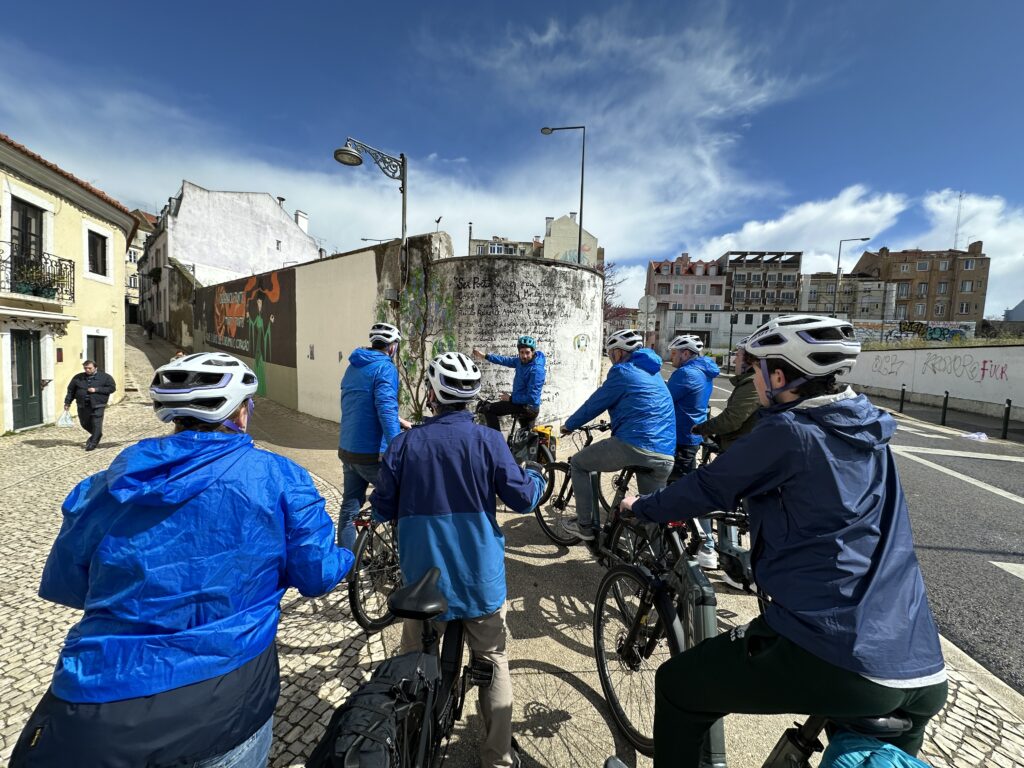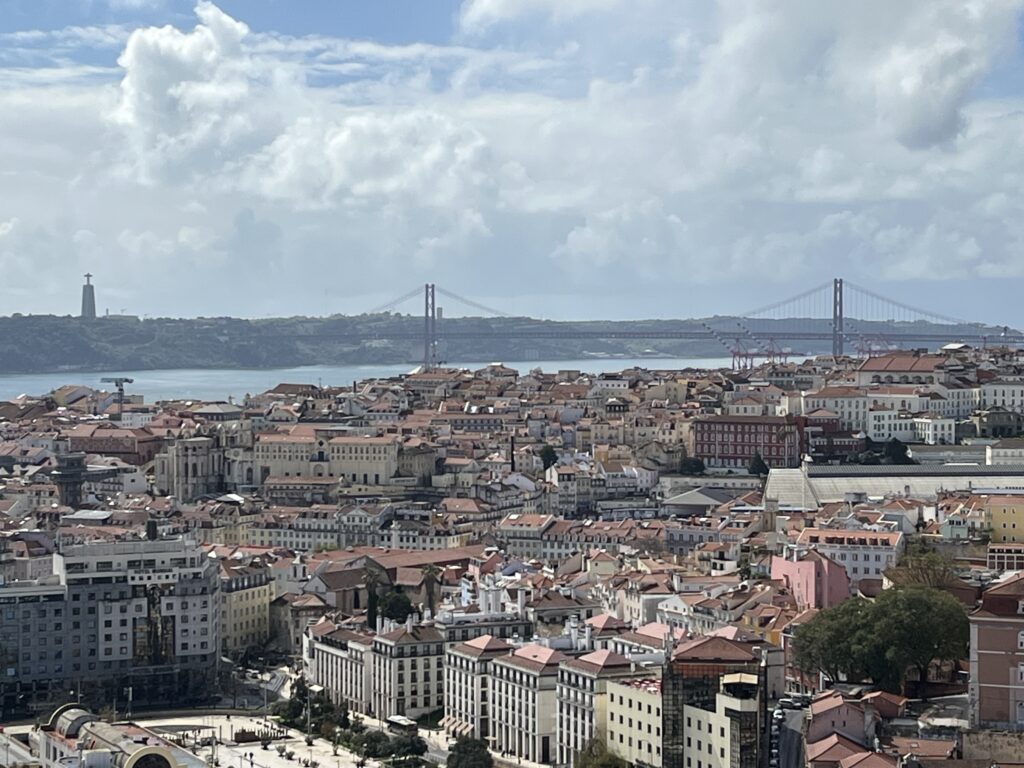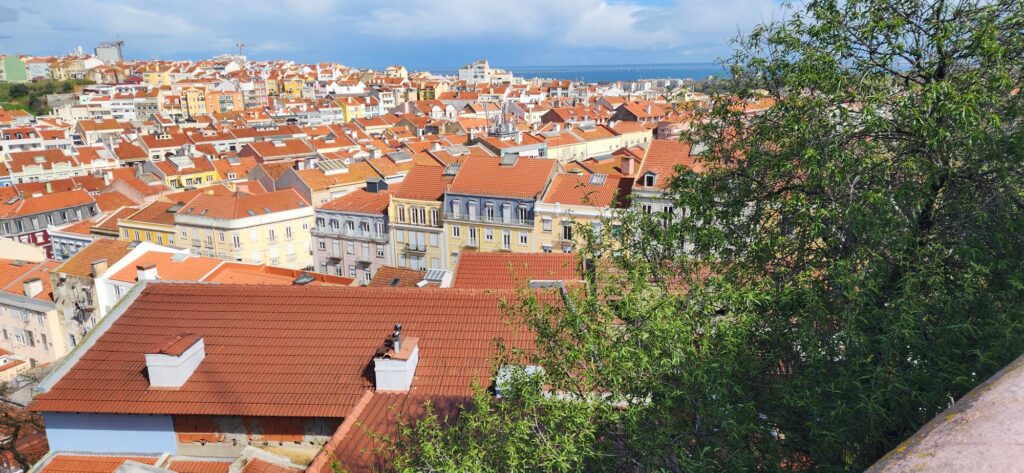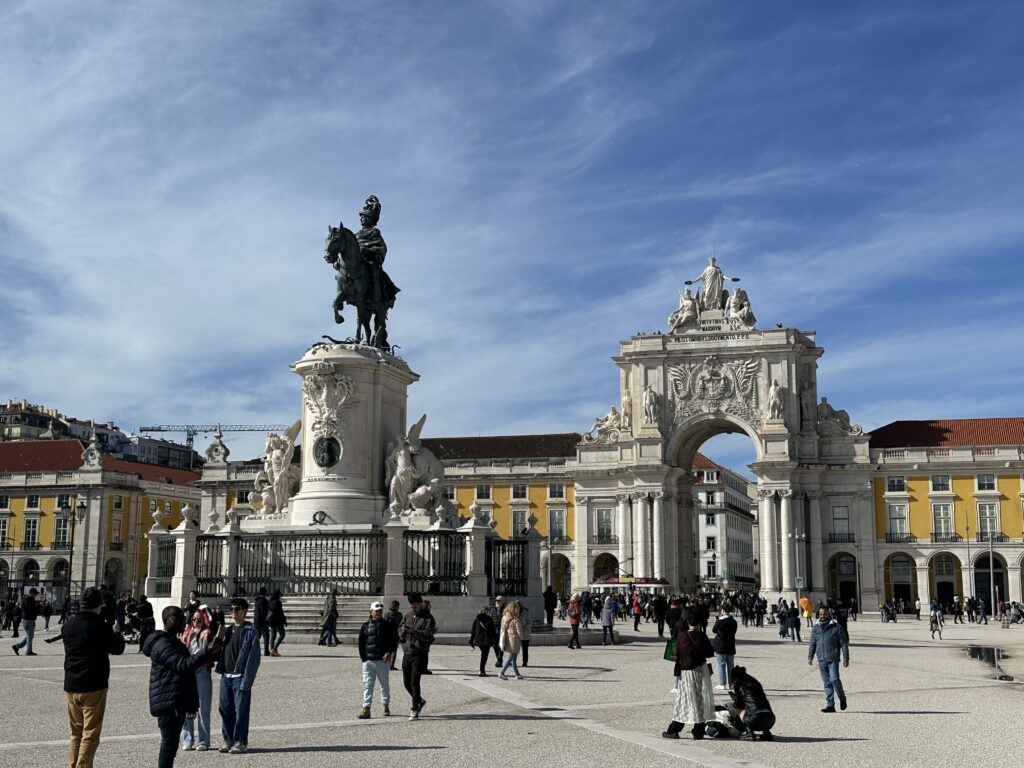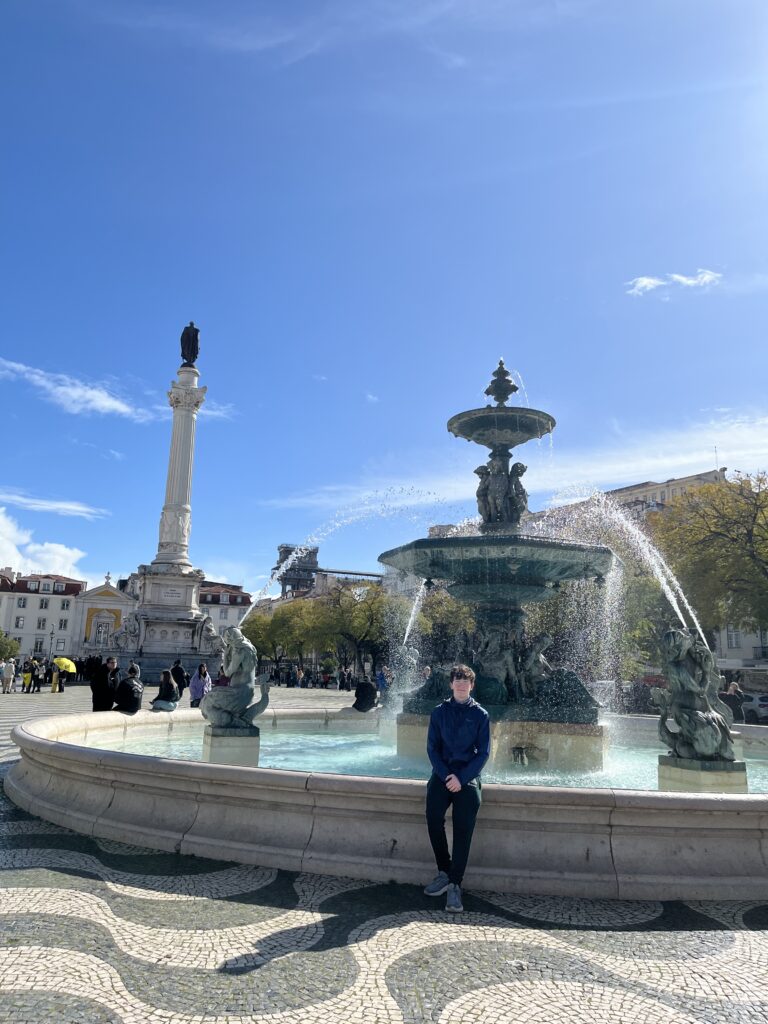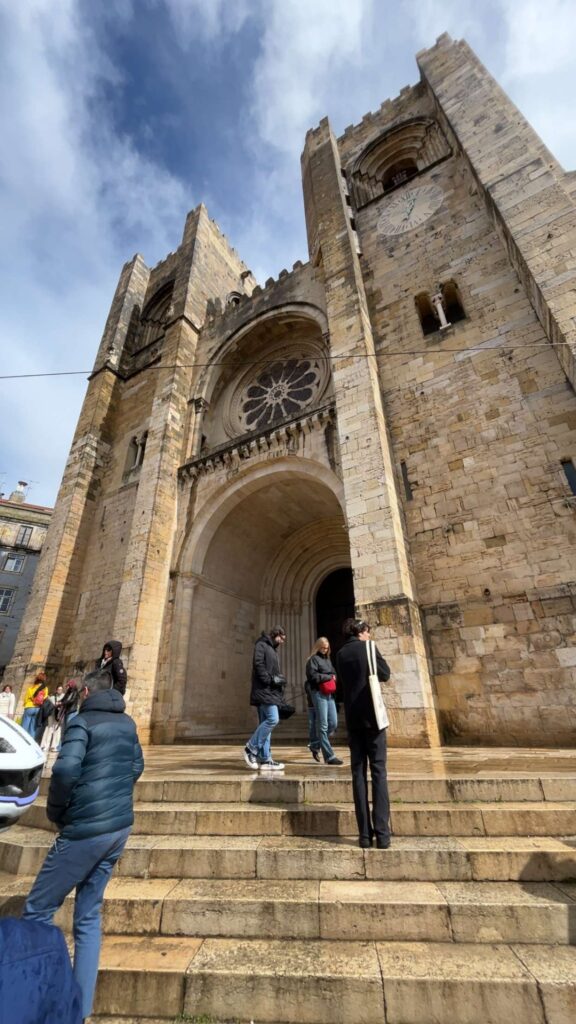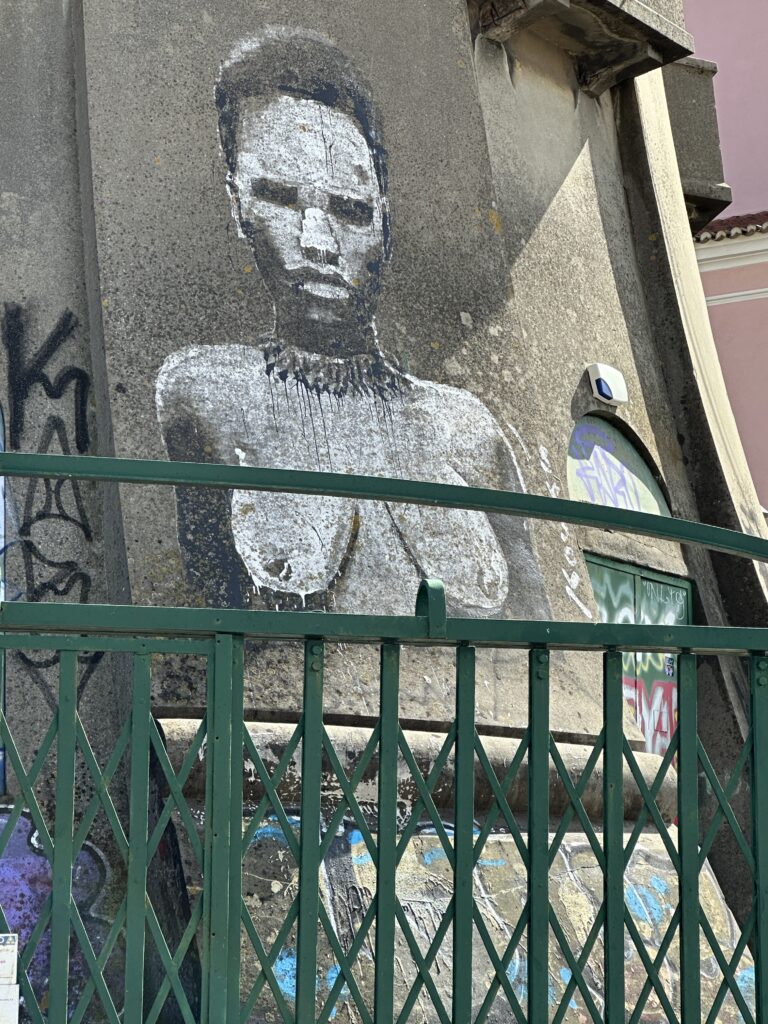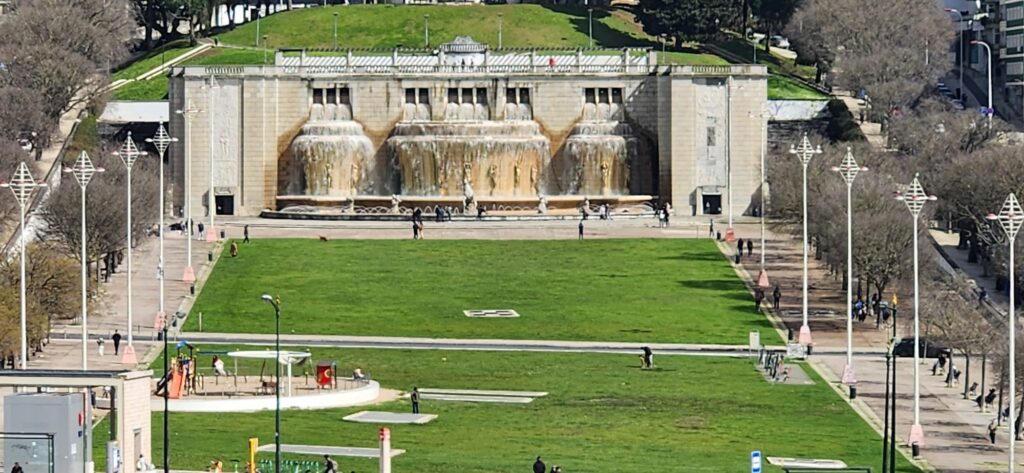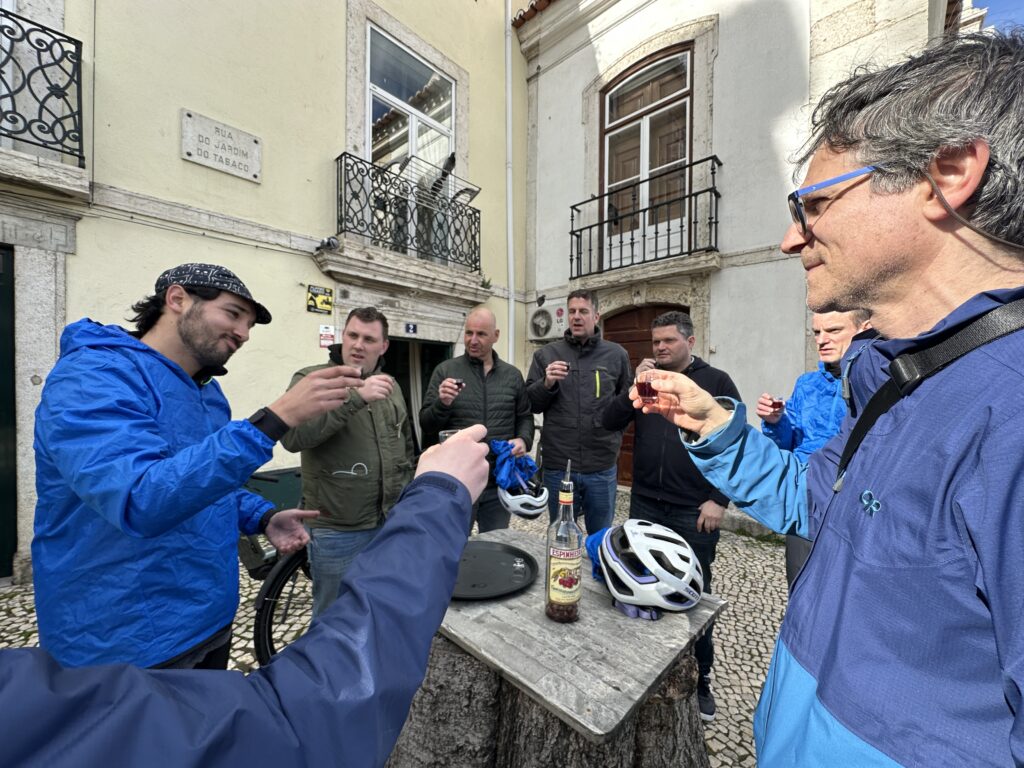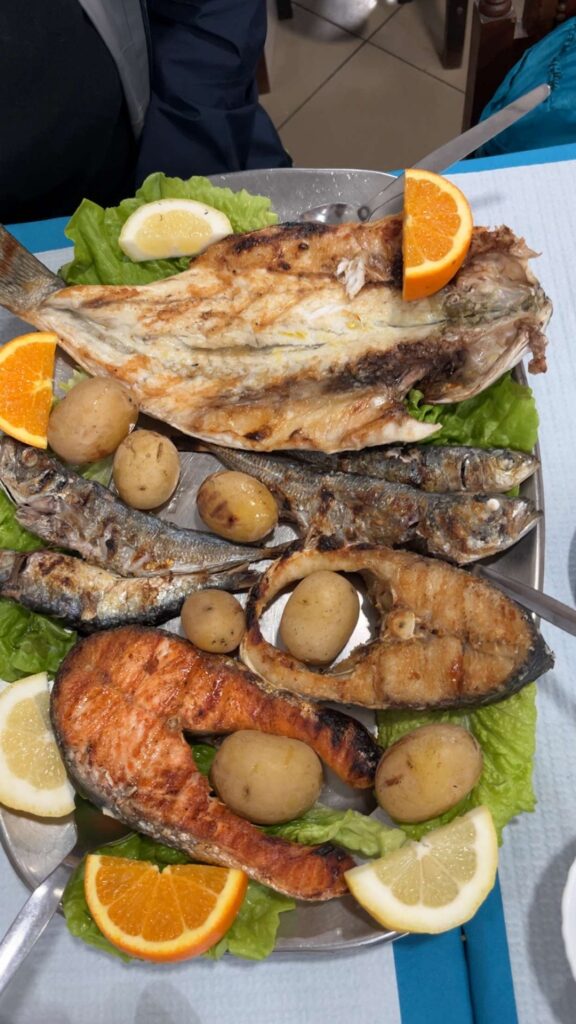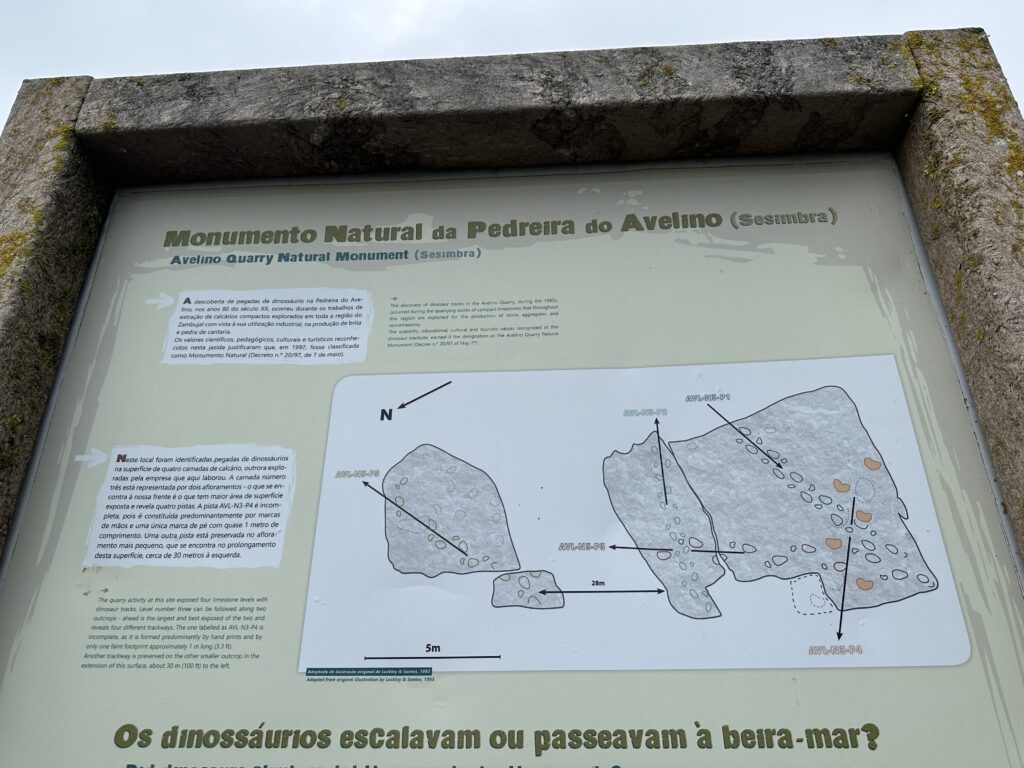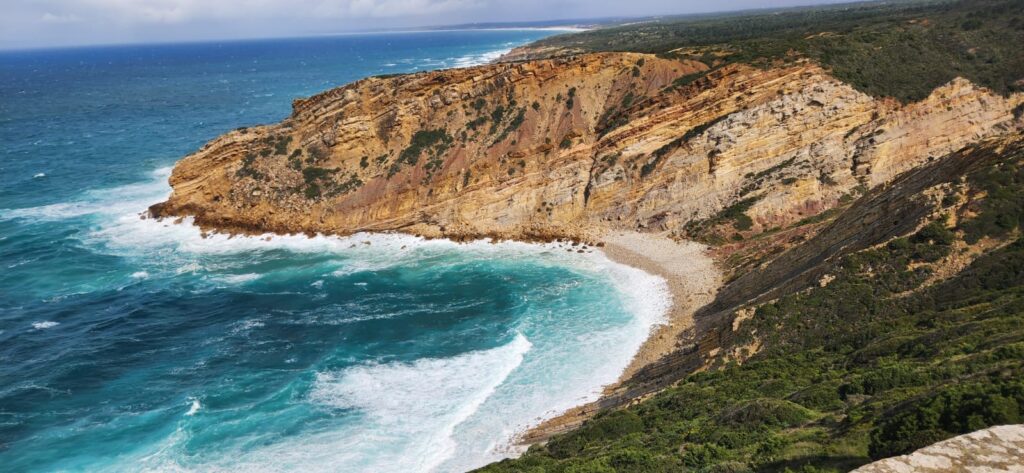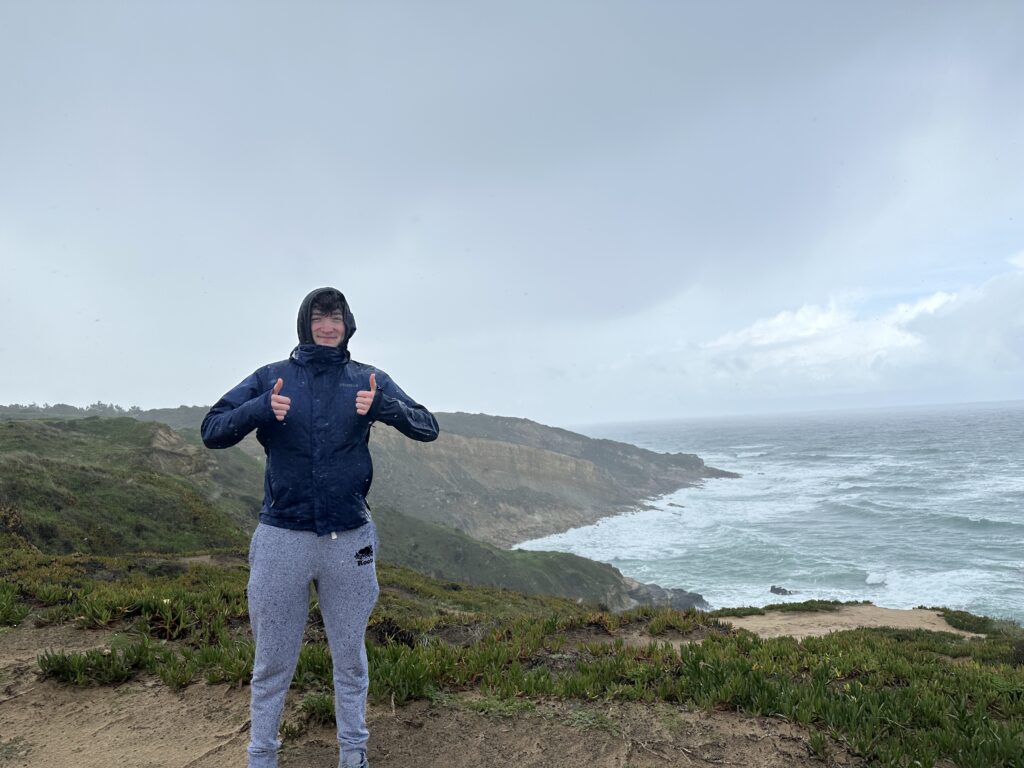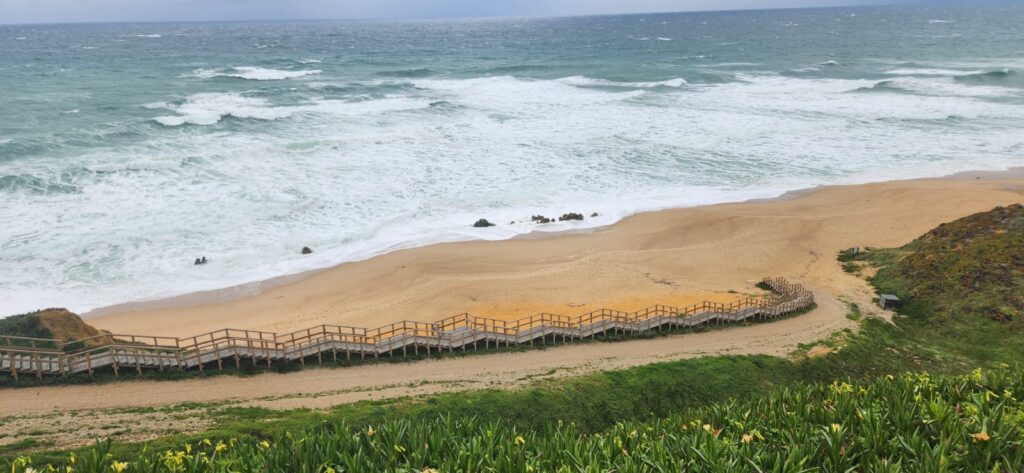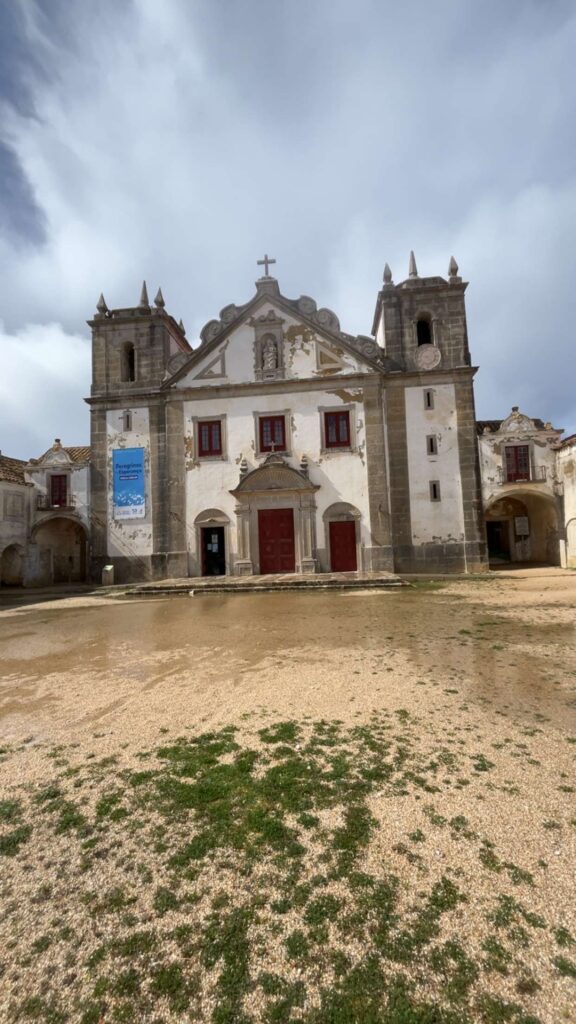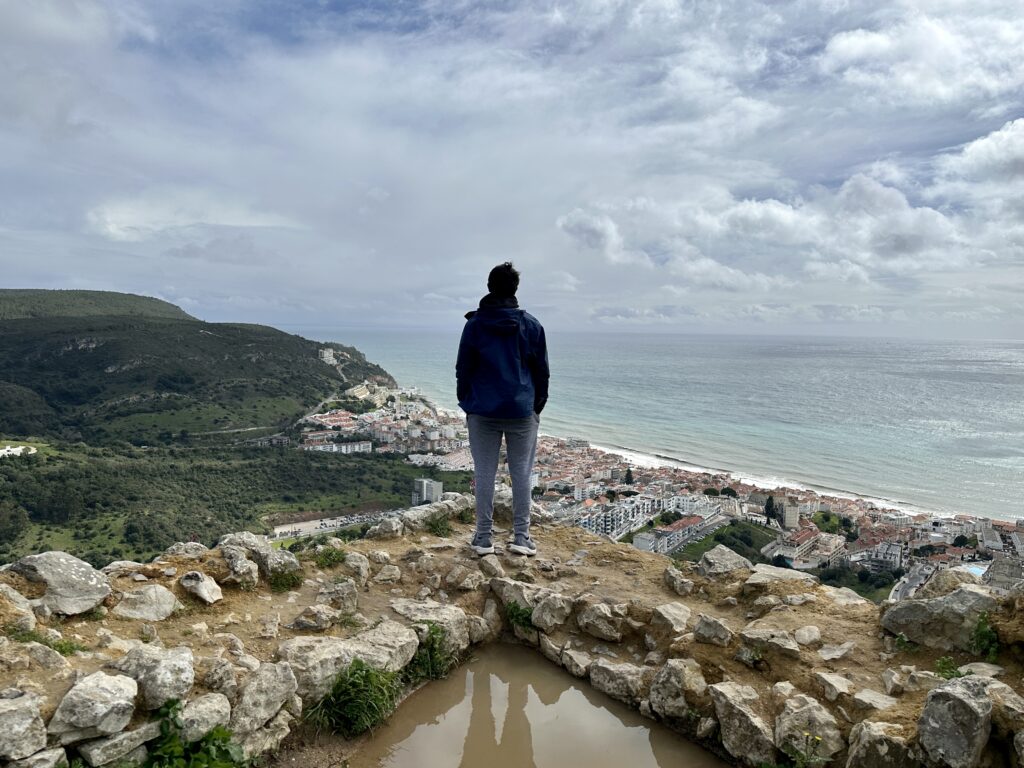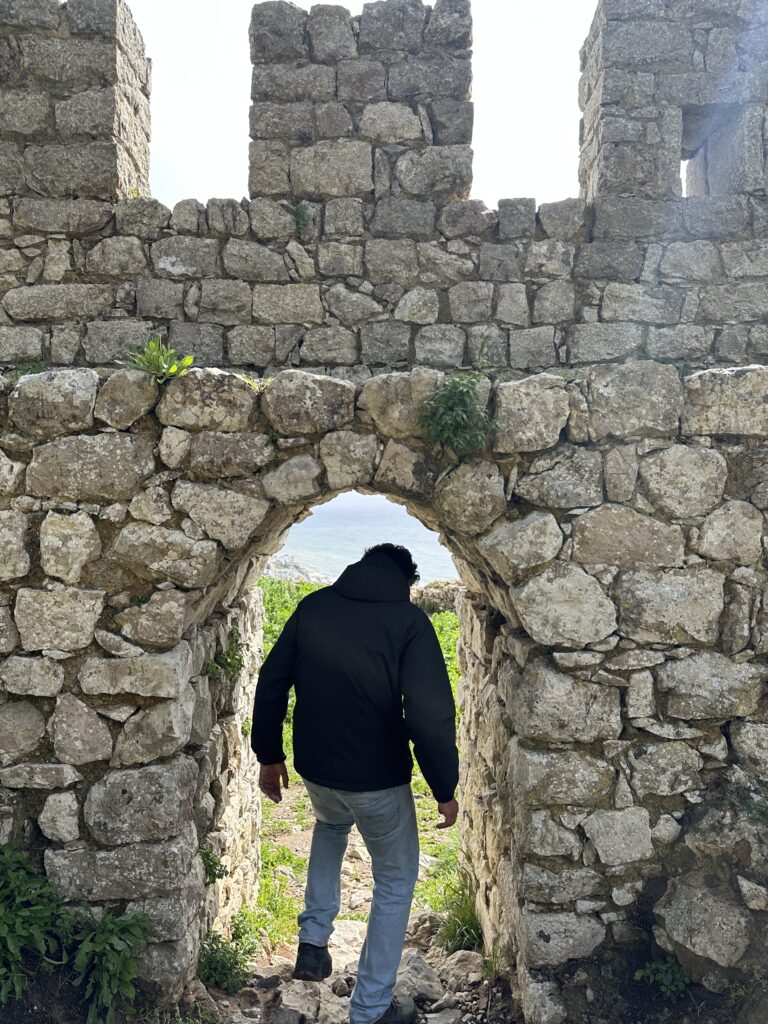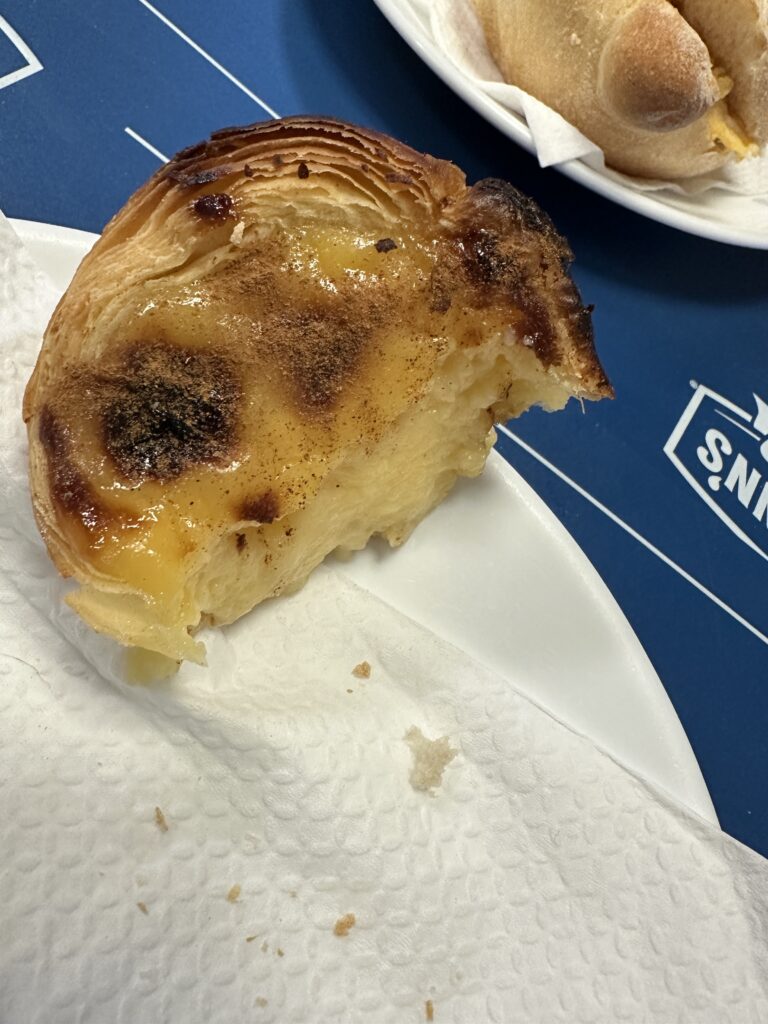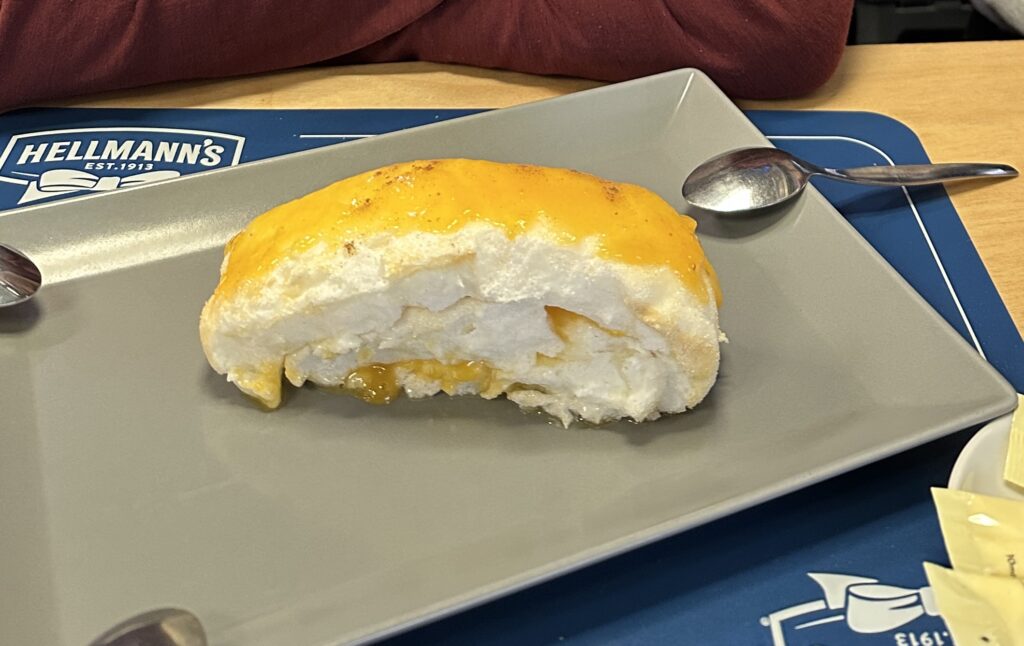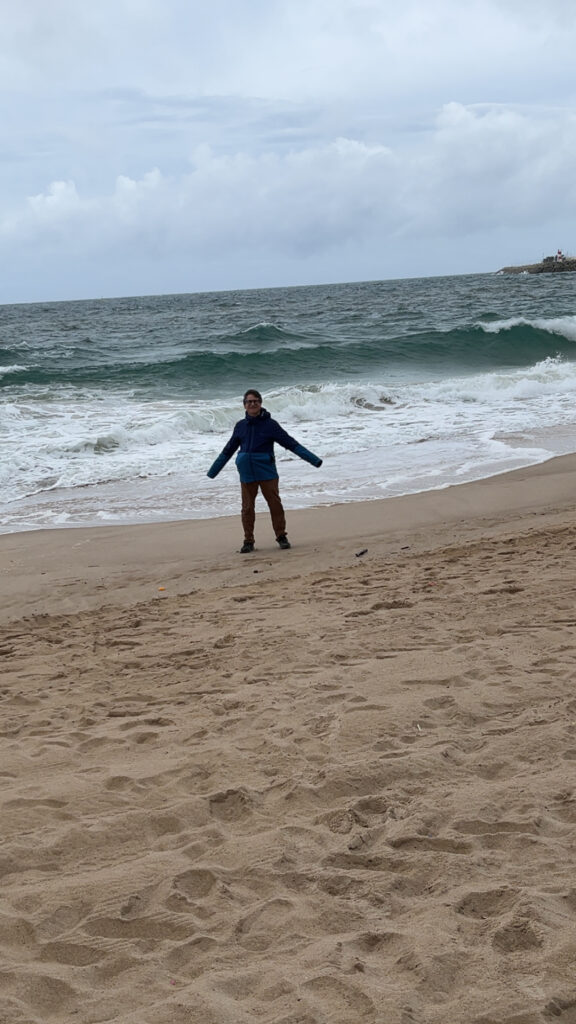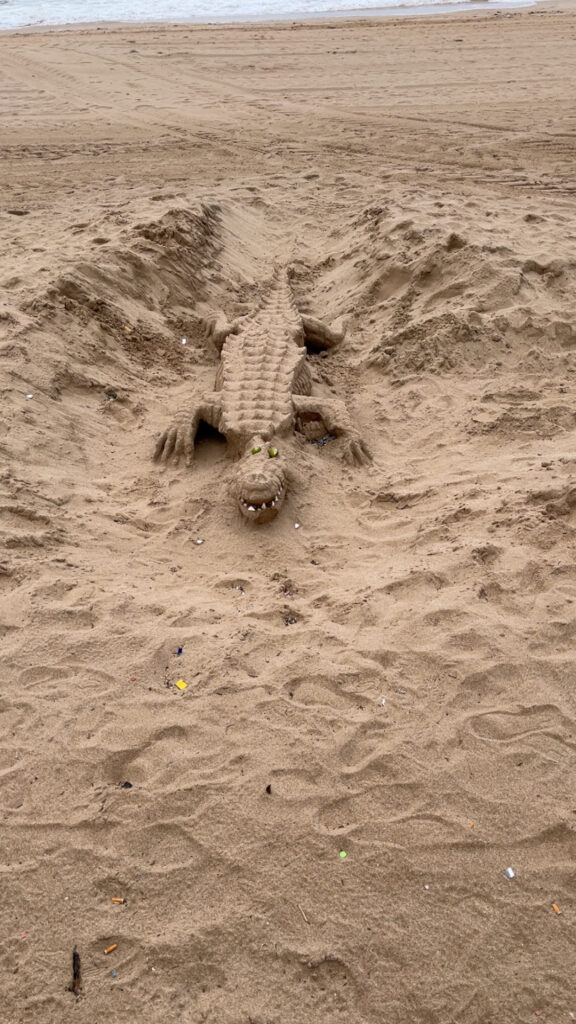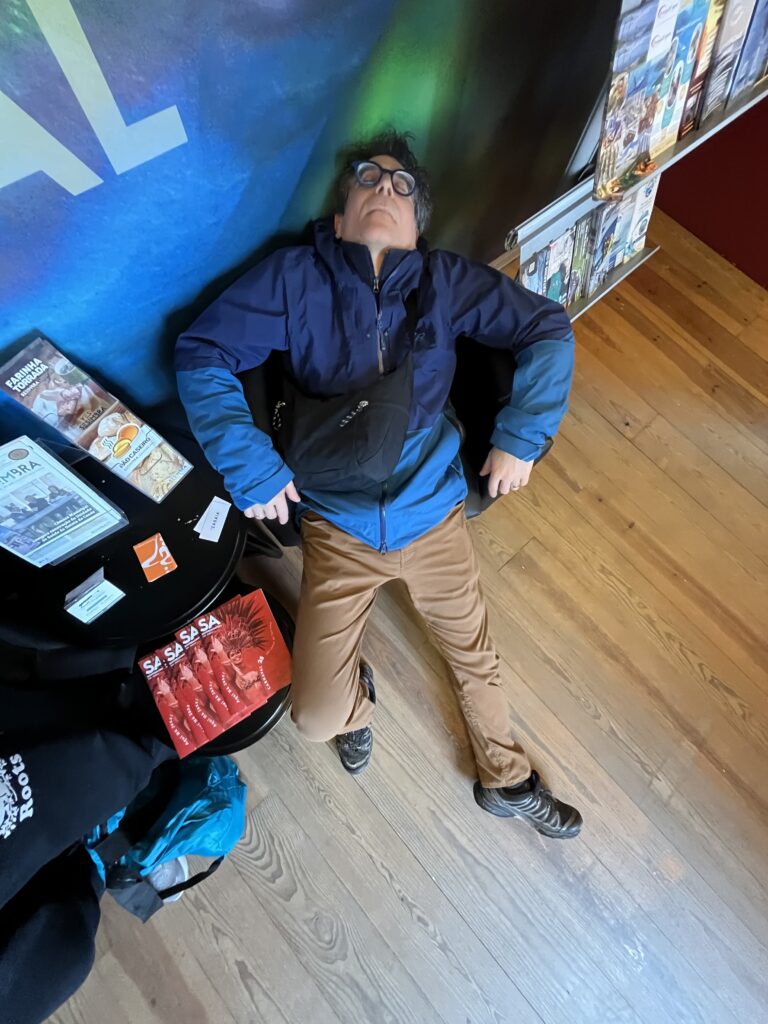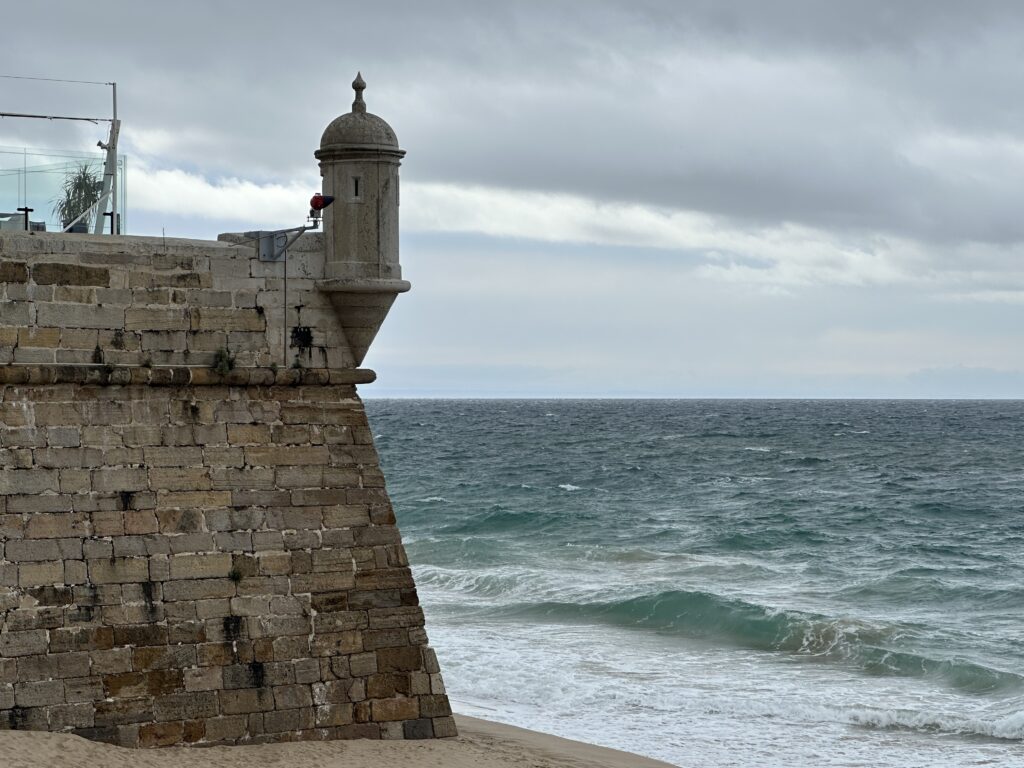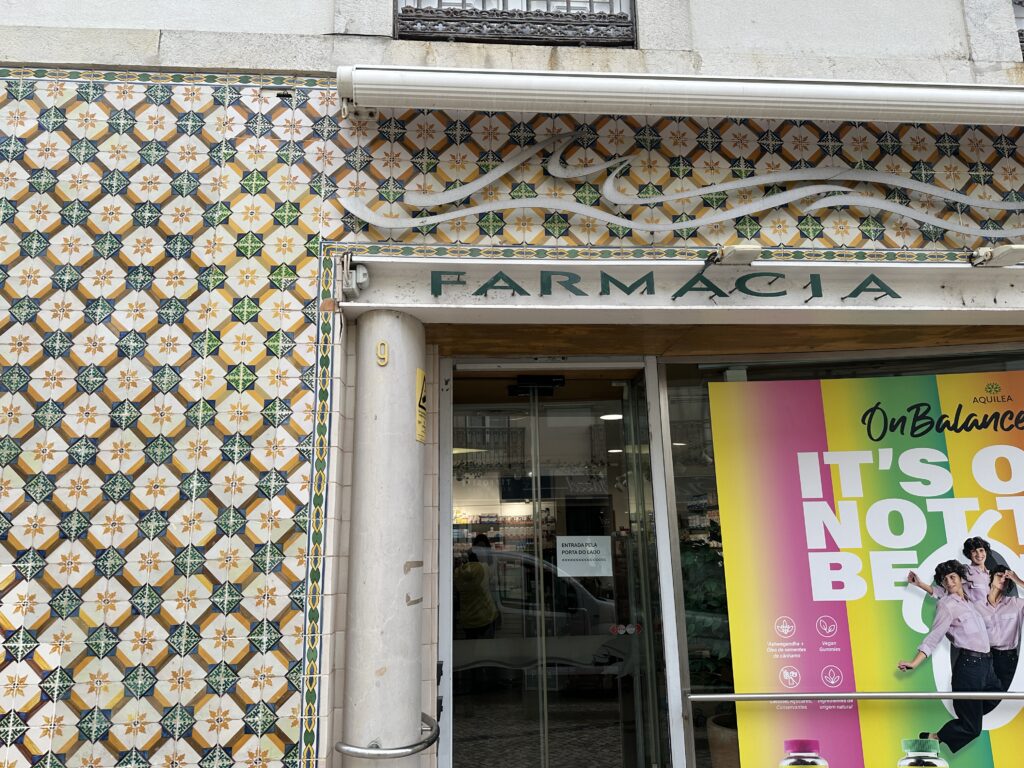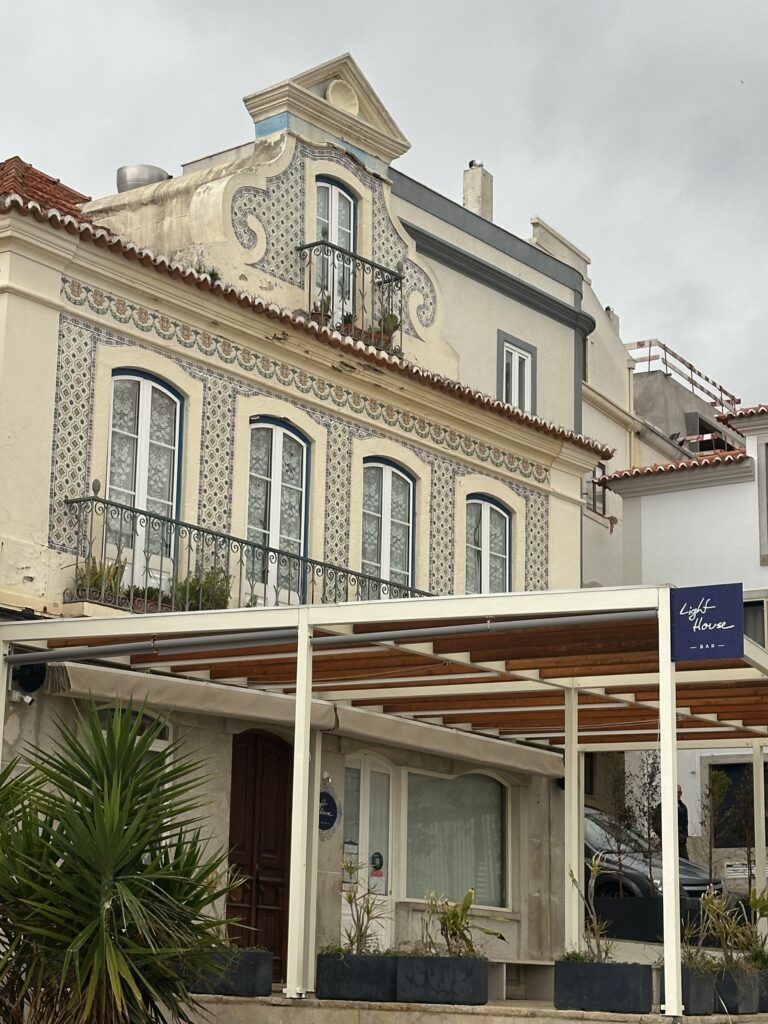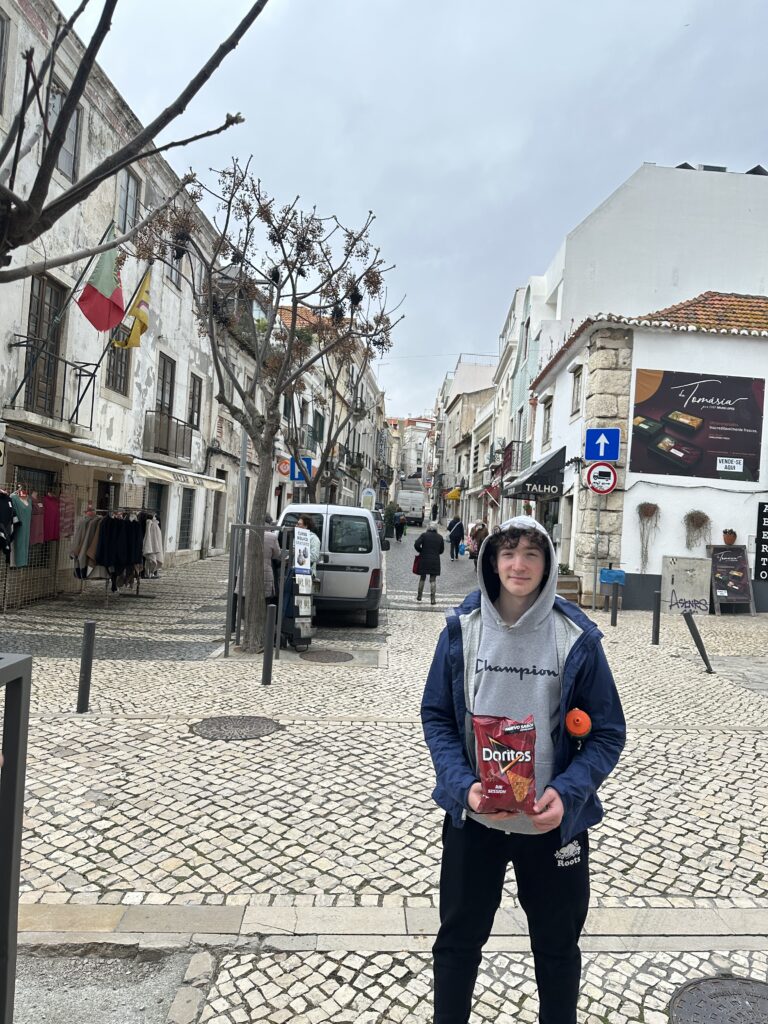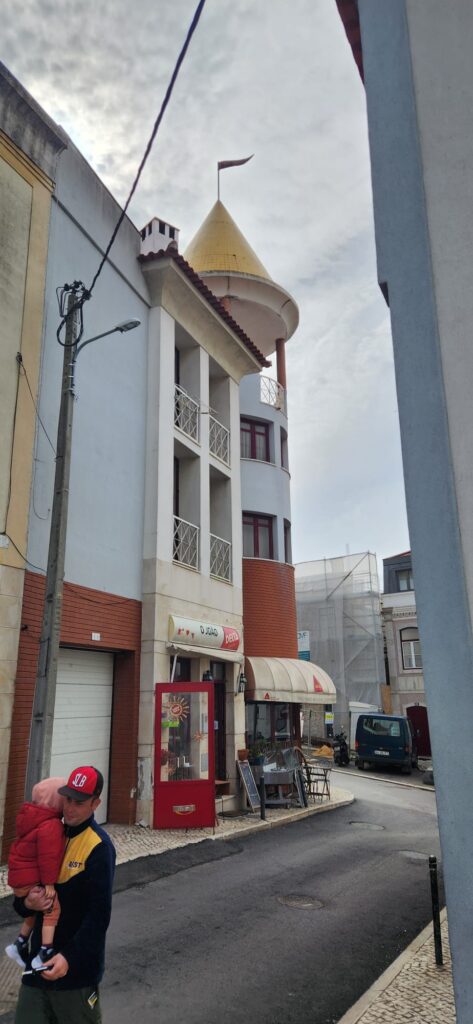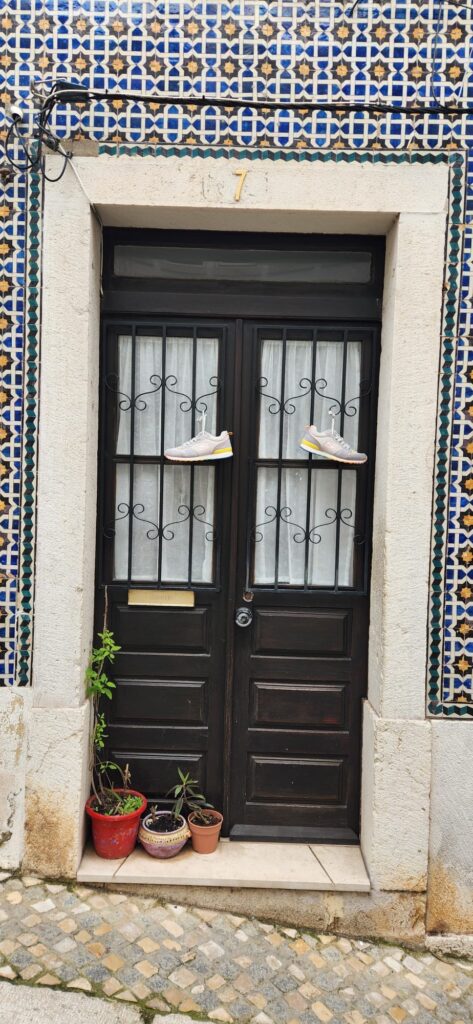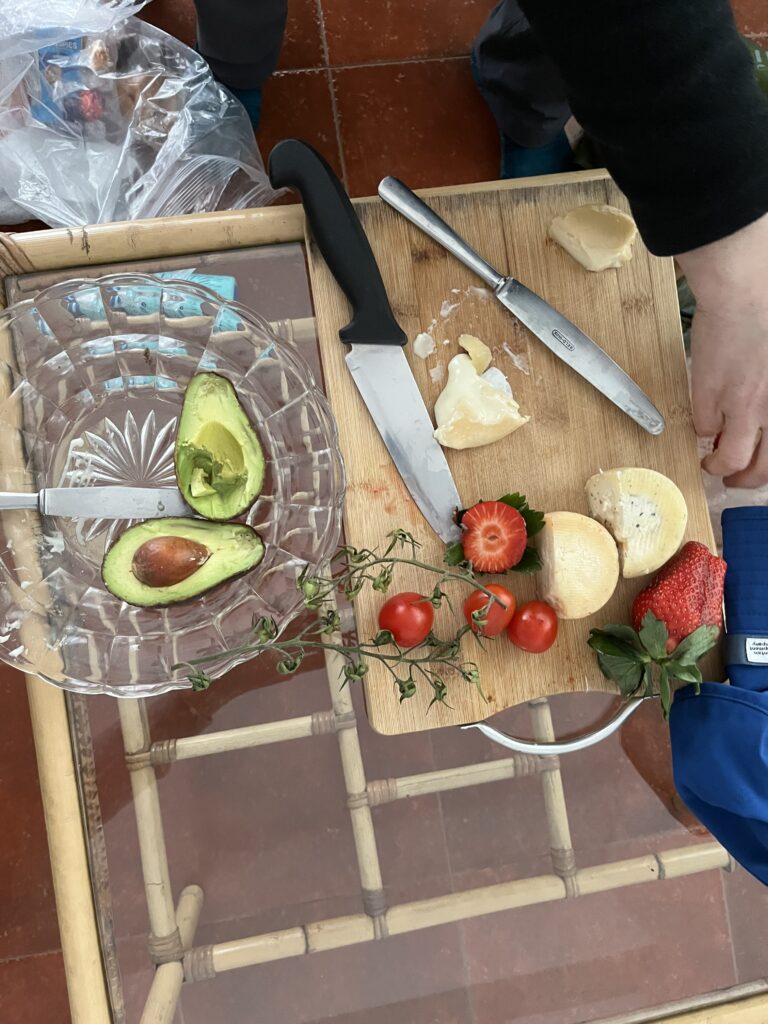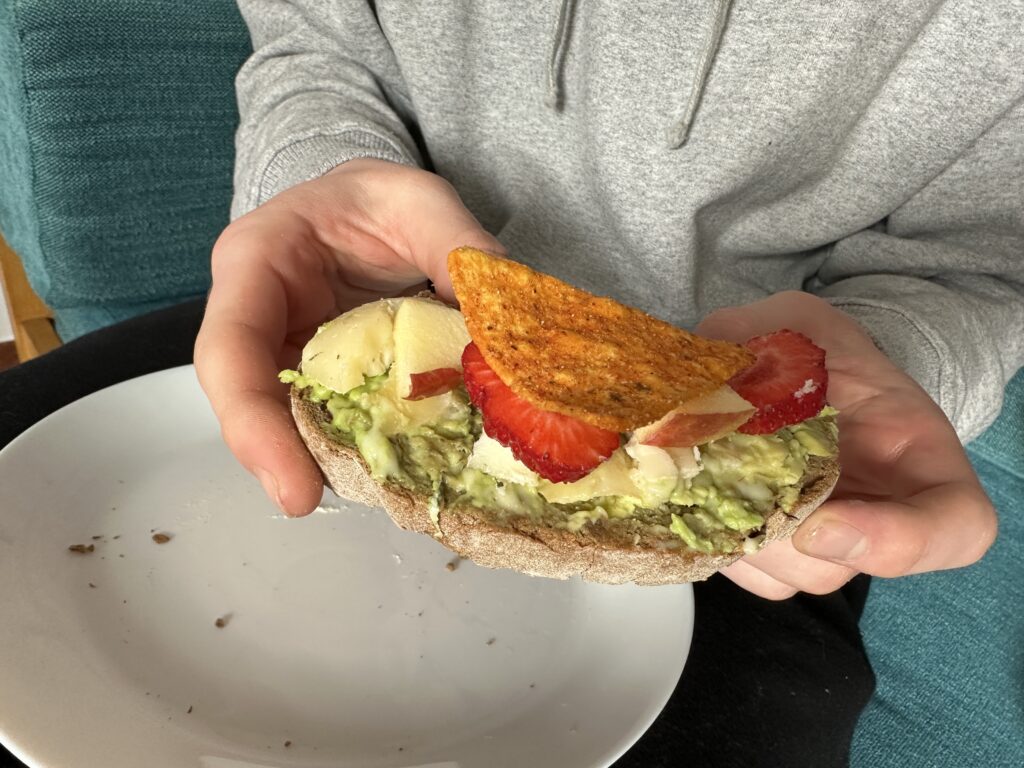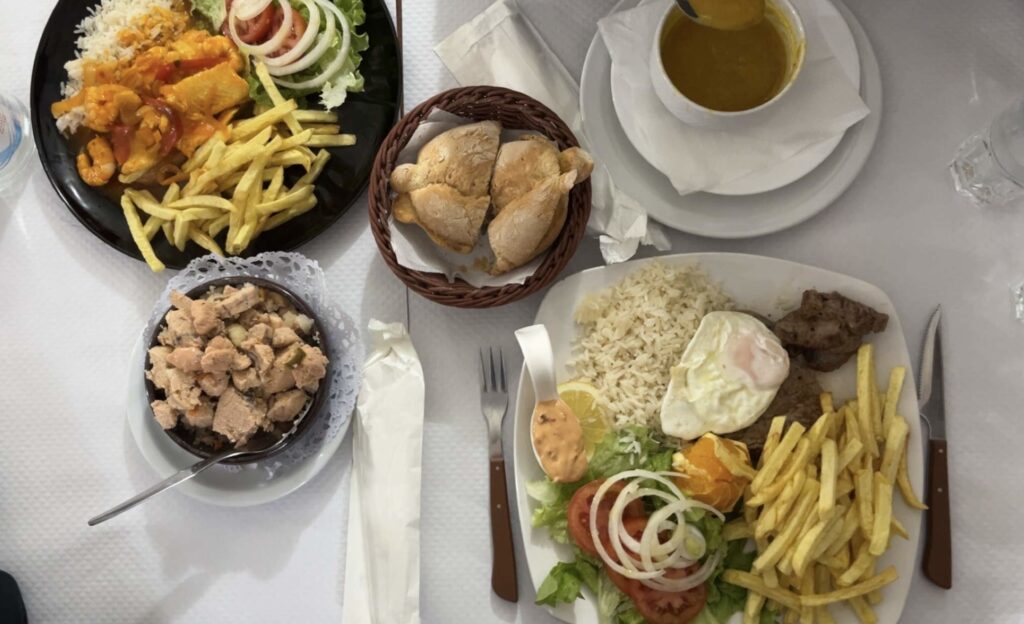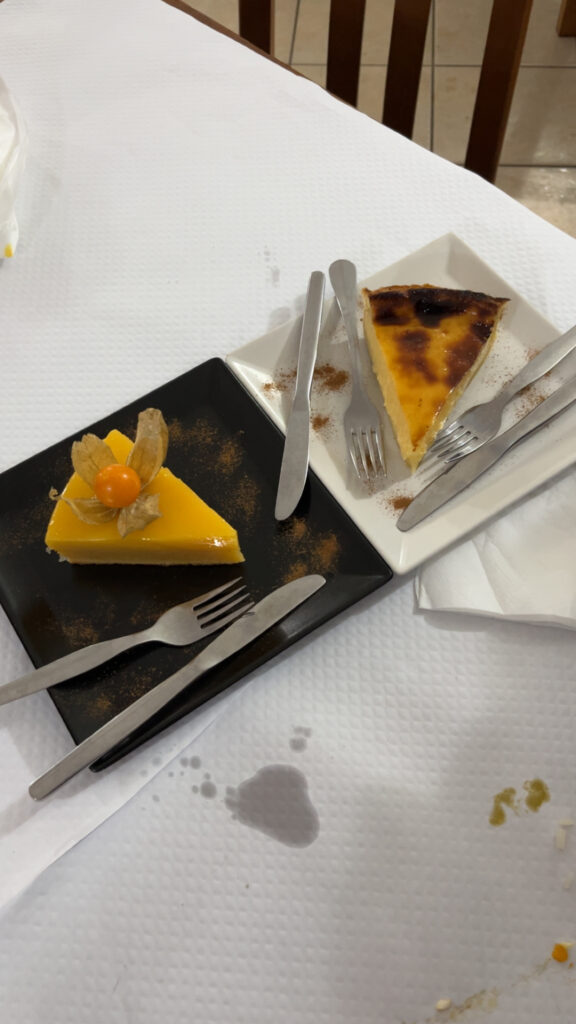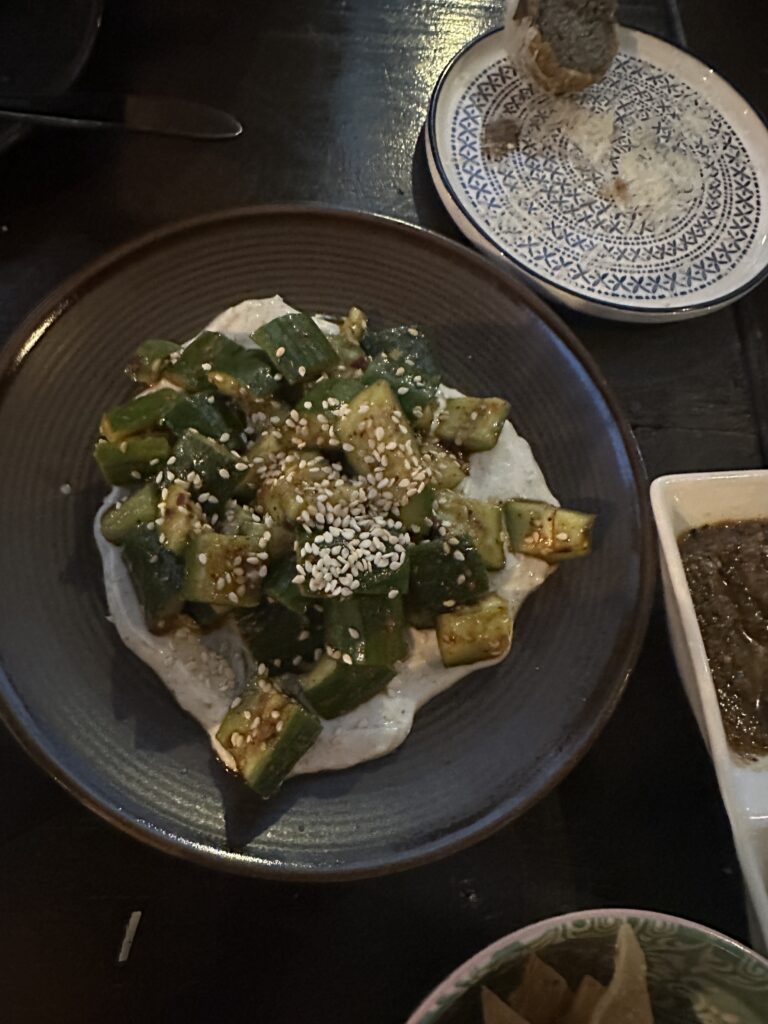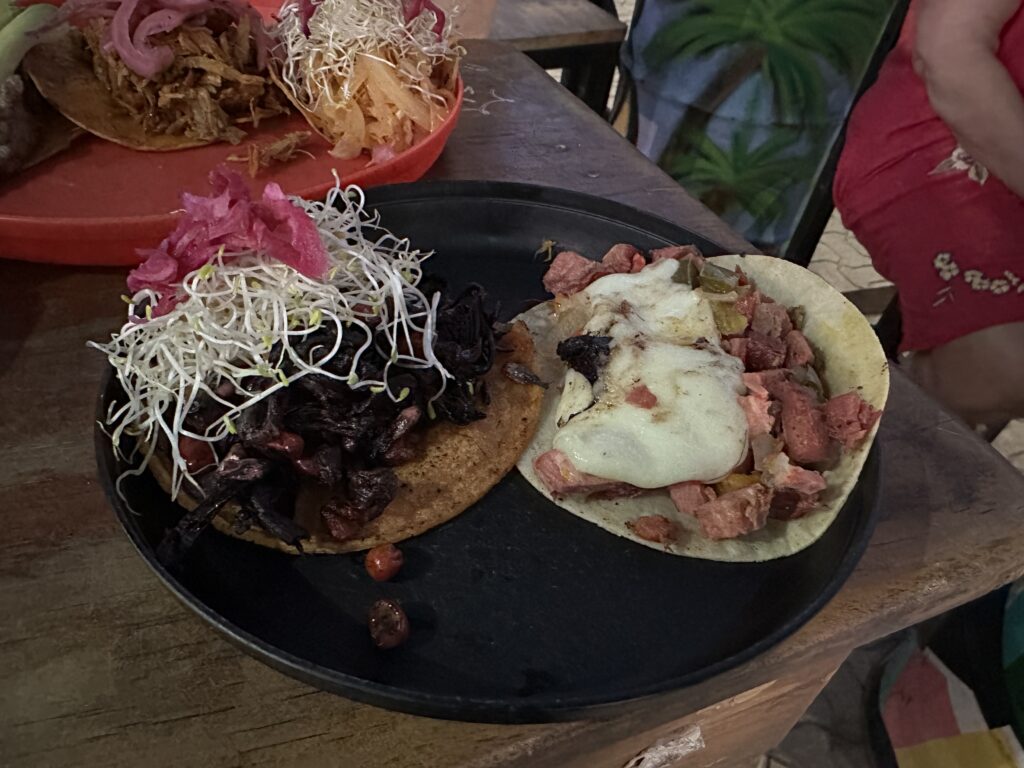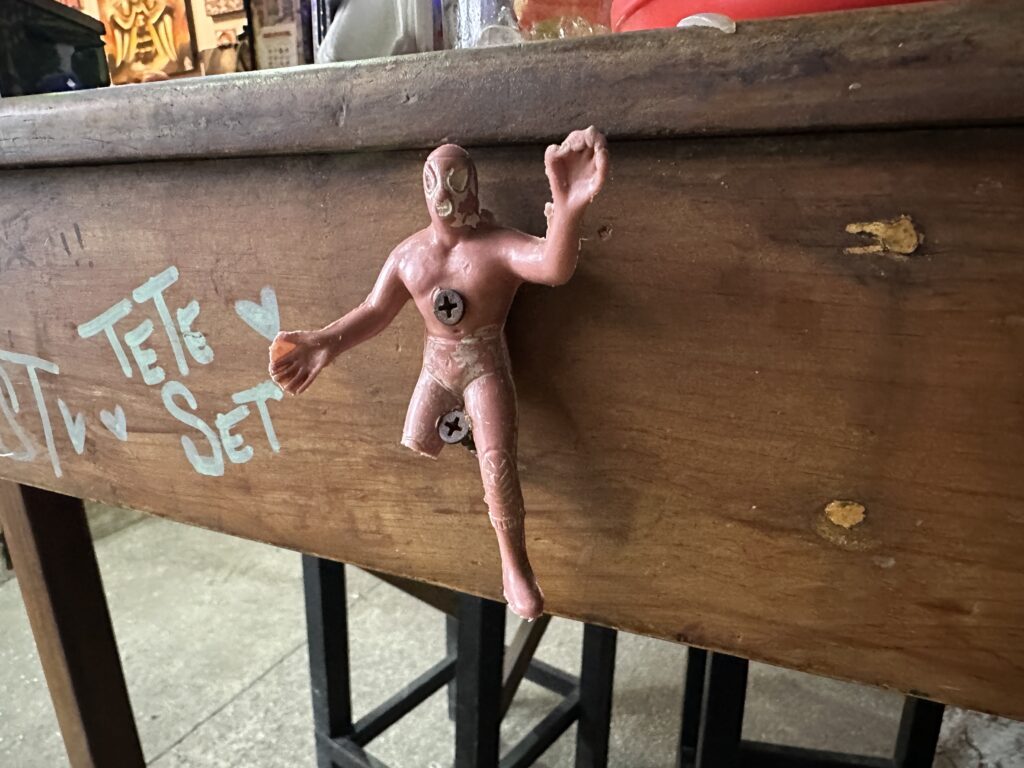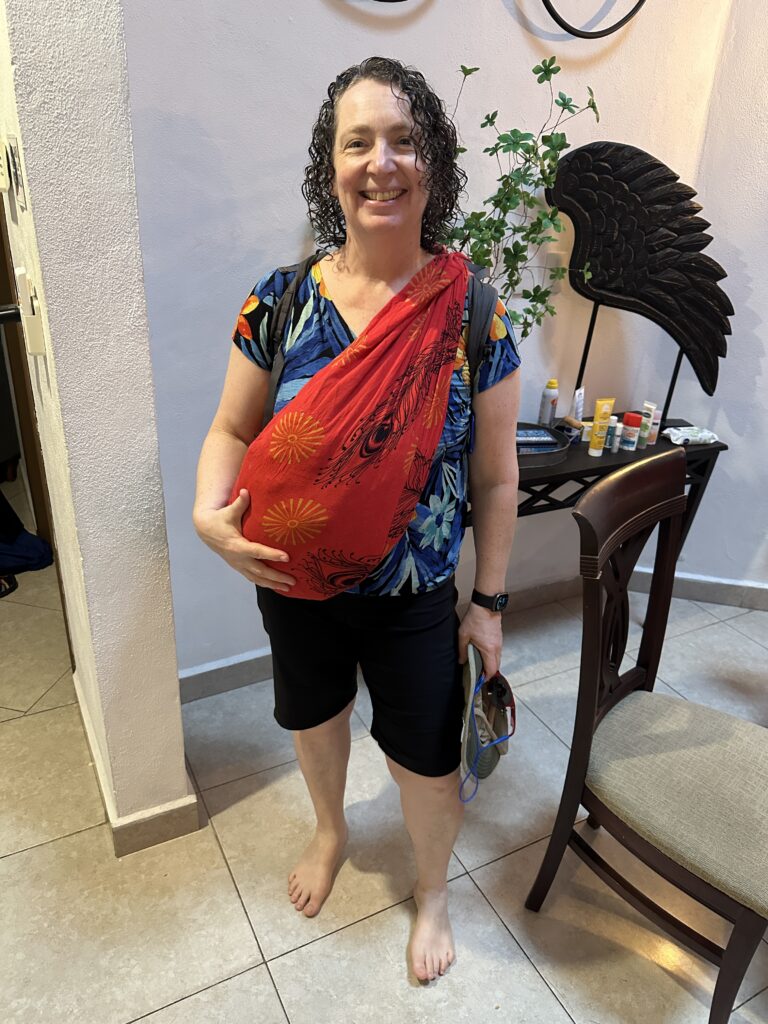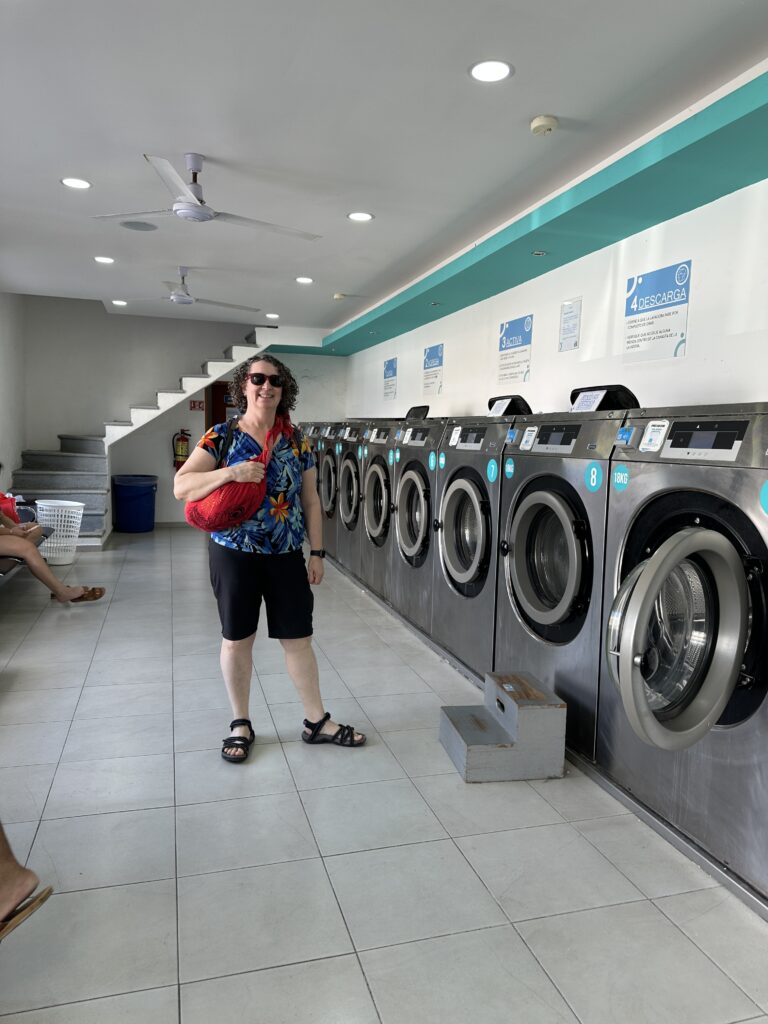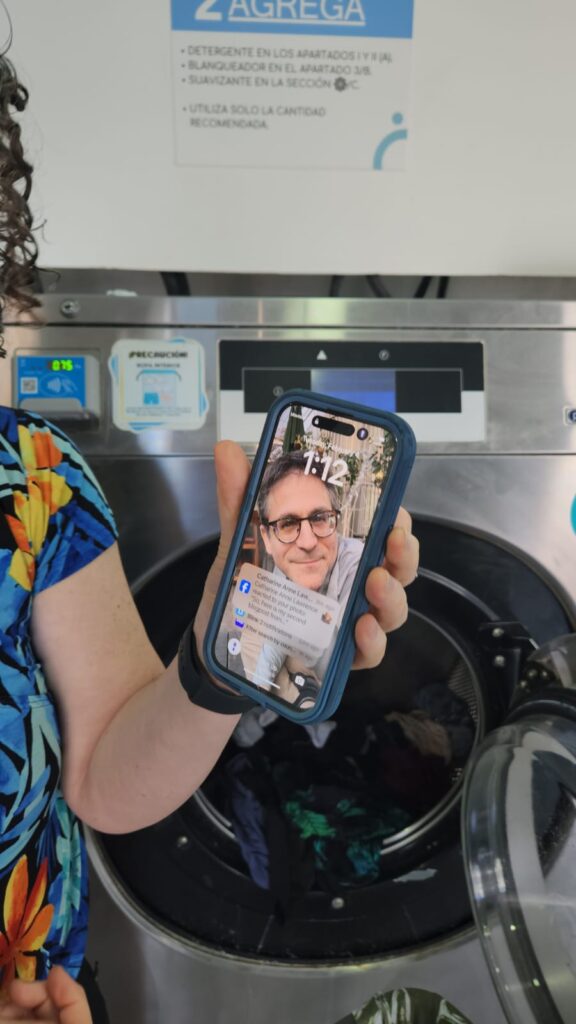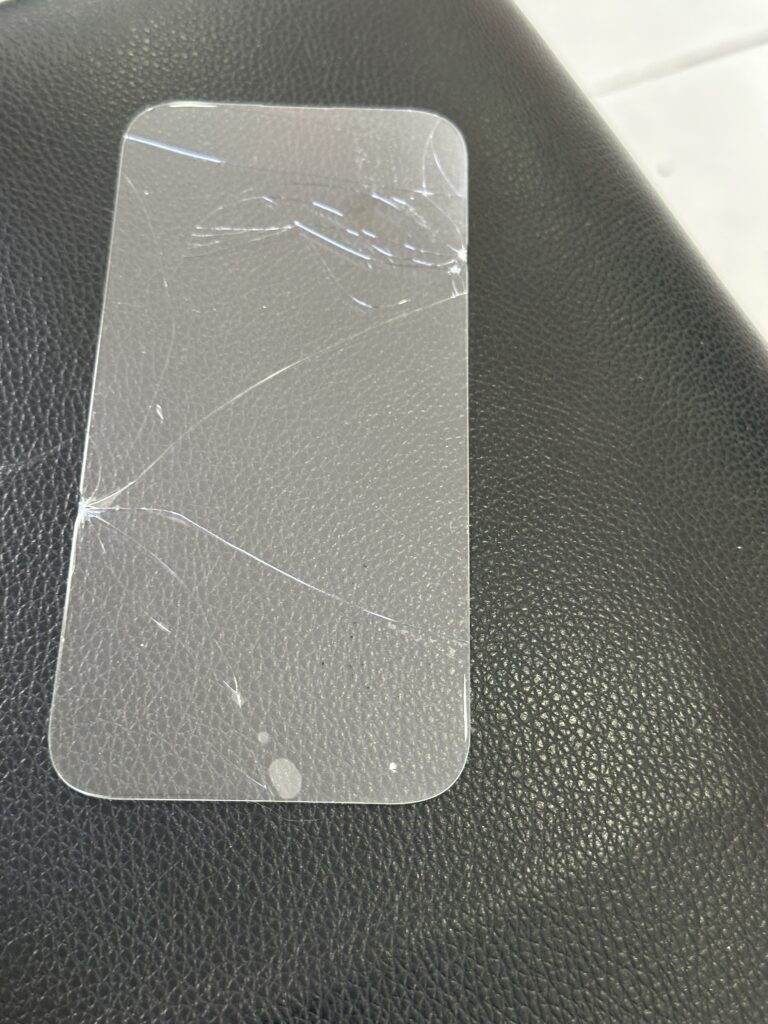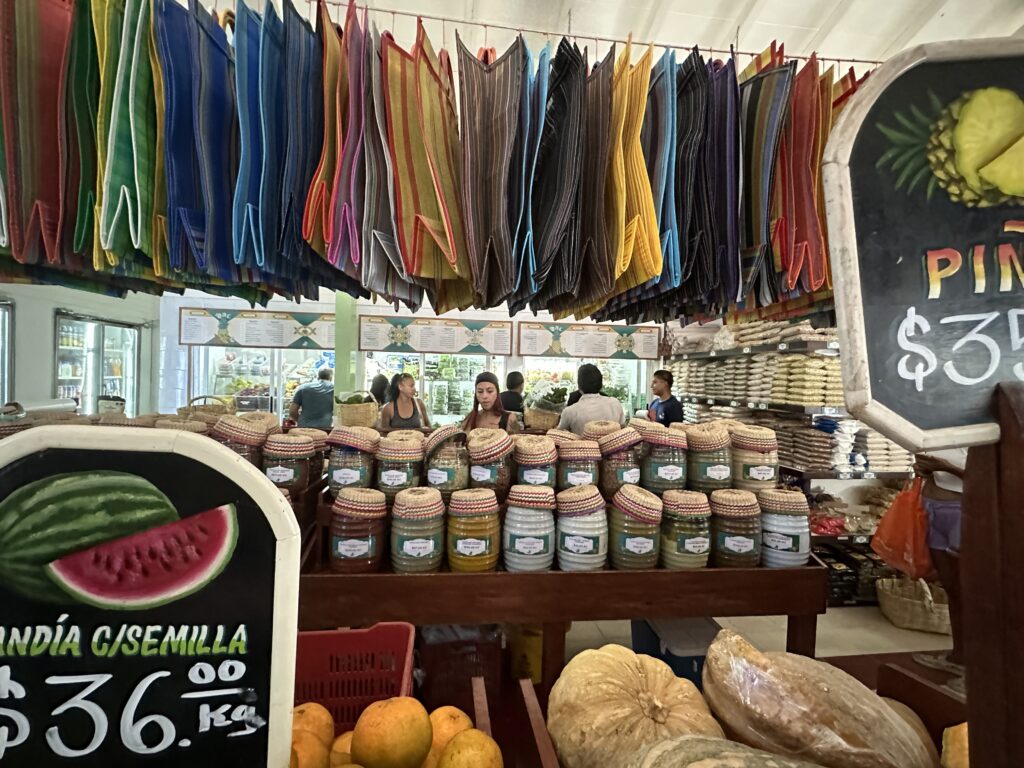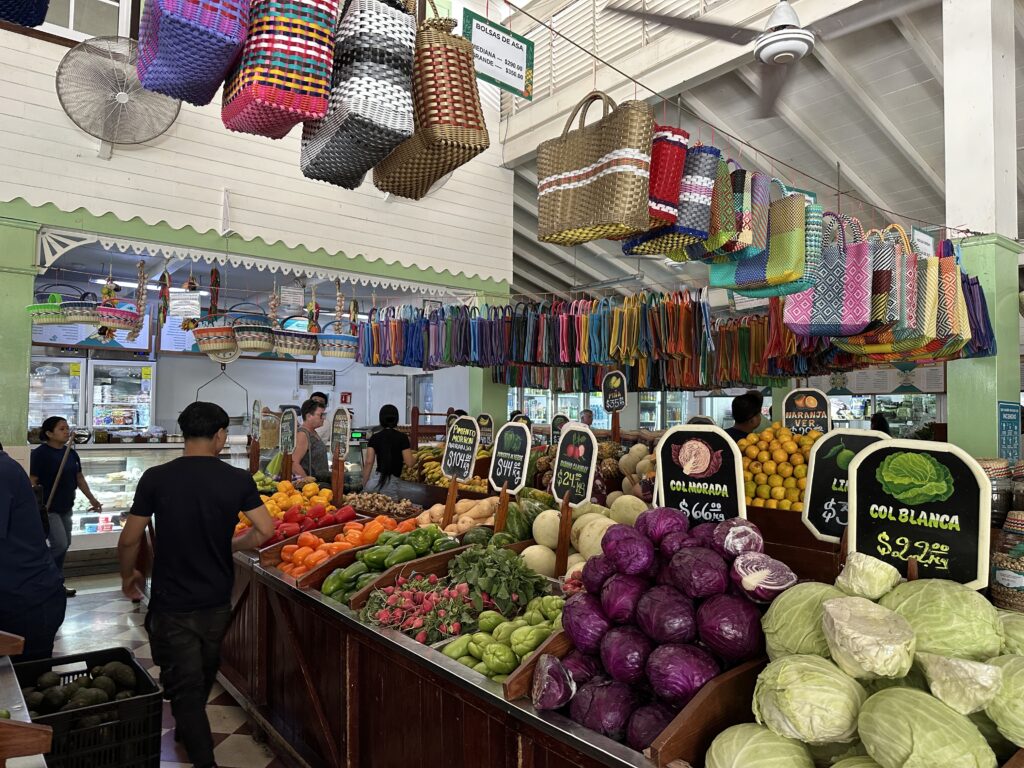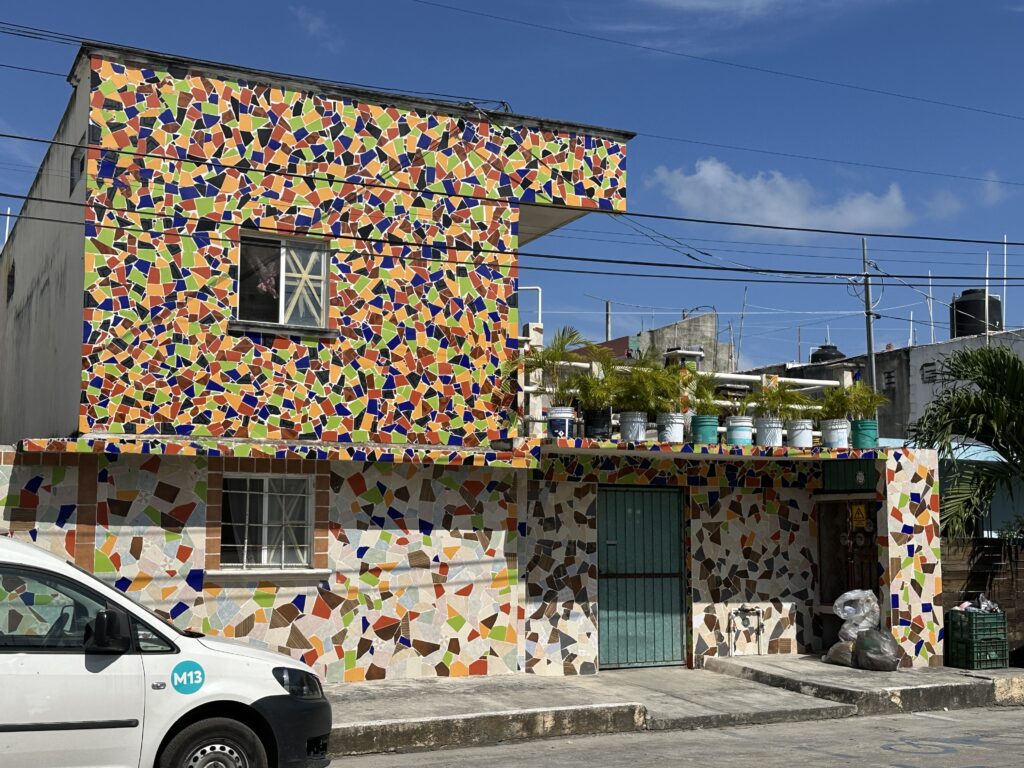March 12, 2025
We were looking into some tasting tours, but all were fairly expensive and we couldn’t find one to work with our schedule or dietary restrictions. We decided to do our own tasting tour. First off we had a slight sleep-in. We have been burning the candle at both ends and have also been walking more than 20,000 steps everyday.
We headed into town to take the famous Tram 28.
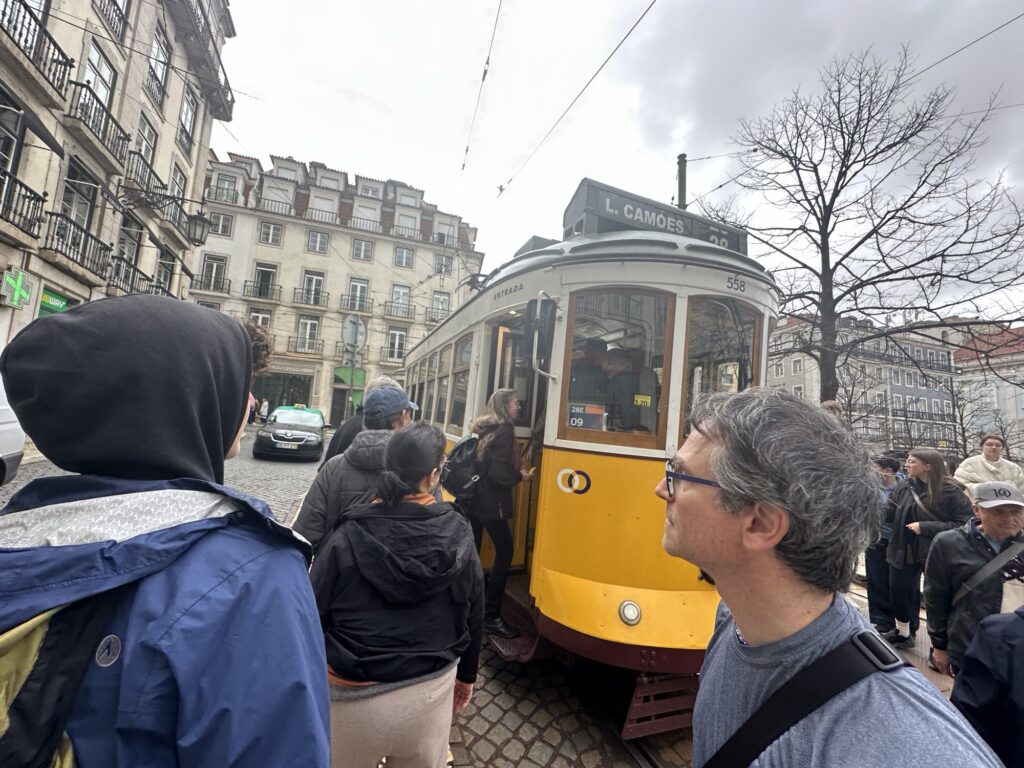
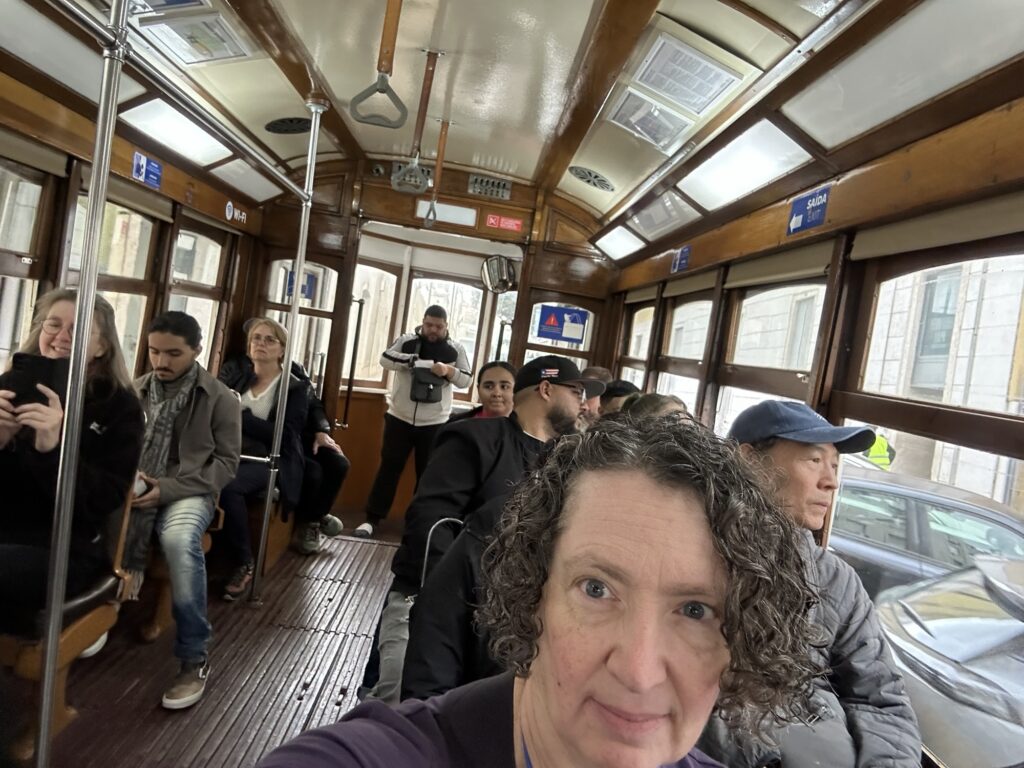
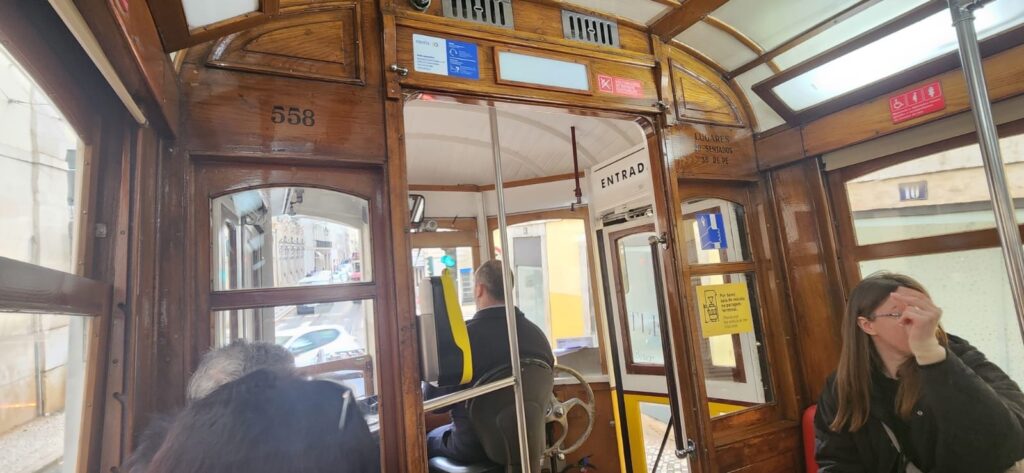
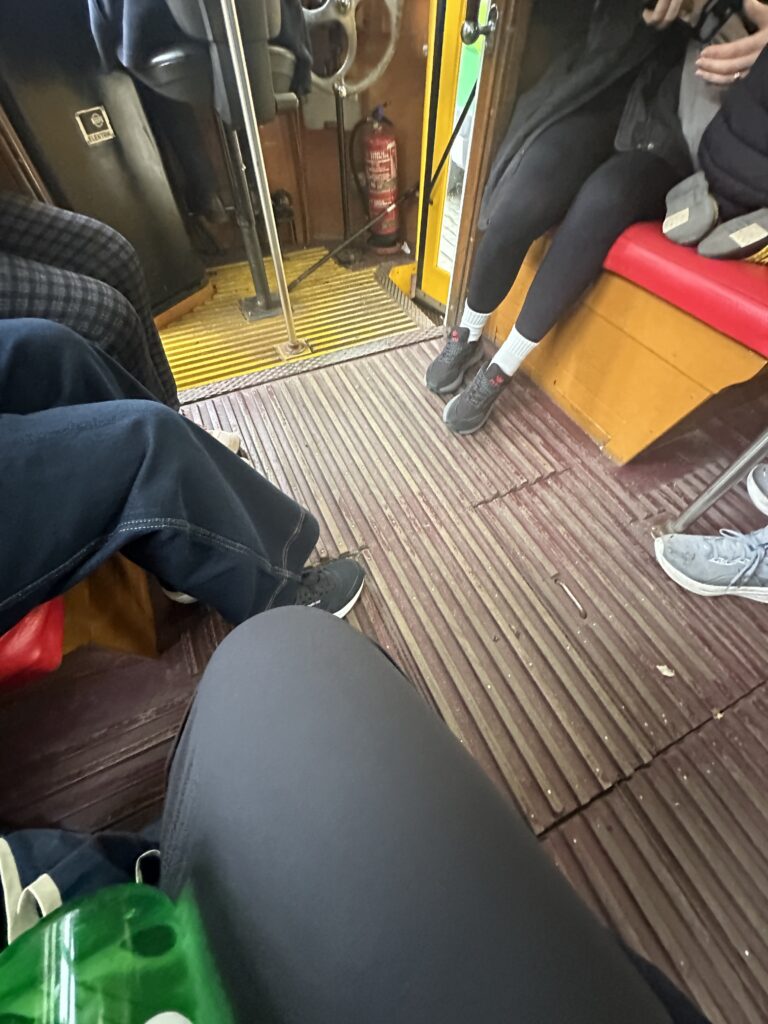
It is a vintage tram that is actually still used for routes through some of the old neighbourhoods with too tight turns for modern buses or streetcars. It connects the Graca and Prazeres neighbourhoods, on a route that passes historic sites, palaces, cathedrals, crosses the Baixa neighbourhood, climbs up to Chiado and ends in Campo de Ourique. Lisbon is a very hilly city and some parts of the tram route barely could fit the tram because the streets were so narrow. We did see a couple of locals on the tram, but most were tourists.
Before we got on the tram, we stopped to eat Pasteis de Nata – the famous Portuguese tarts. We have sampled these from many different Pastelerias and were on a mission to find the best one. This version was excellent.
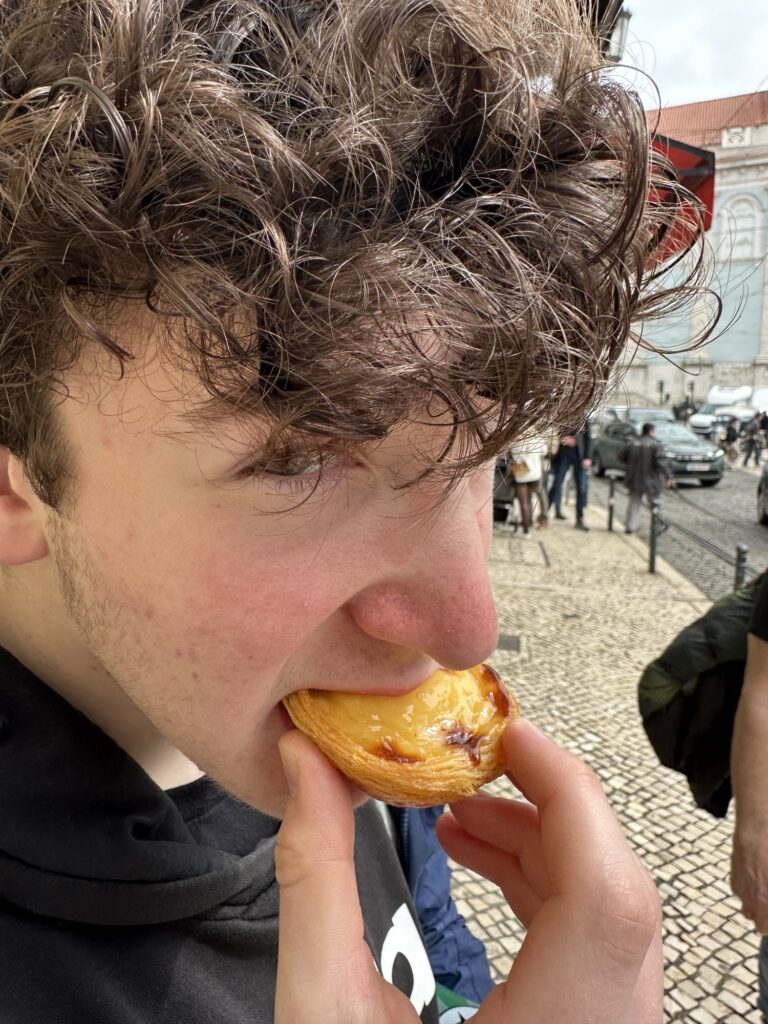
After the tram ride, we spent the rest of the day walking around in the rain, tasting things along the way. Teva did some souvenir shopping as well in shops as we passed by. Here is a list of some of the interesting things we ate on the street.
Pistachio Croissant – There are Pastelerias on every corner, and they are filled with both savoury and sweet pastries to die for. This croissant was exquisite.
Pastel de Bacalhau – a type of fish “cake” with melted cheese inside – A traditional food of Portugal. Glad we tried it. Koren liked it.
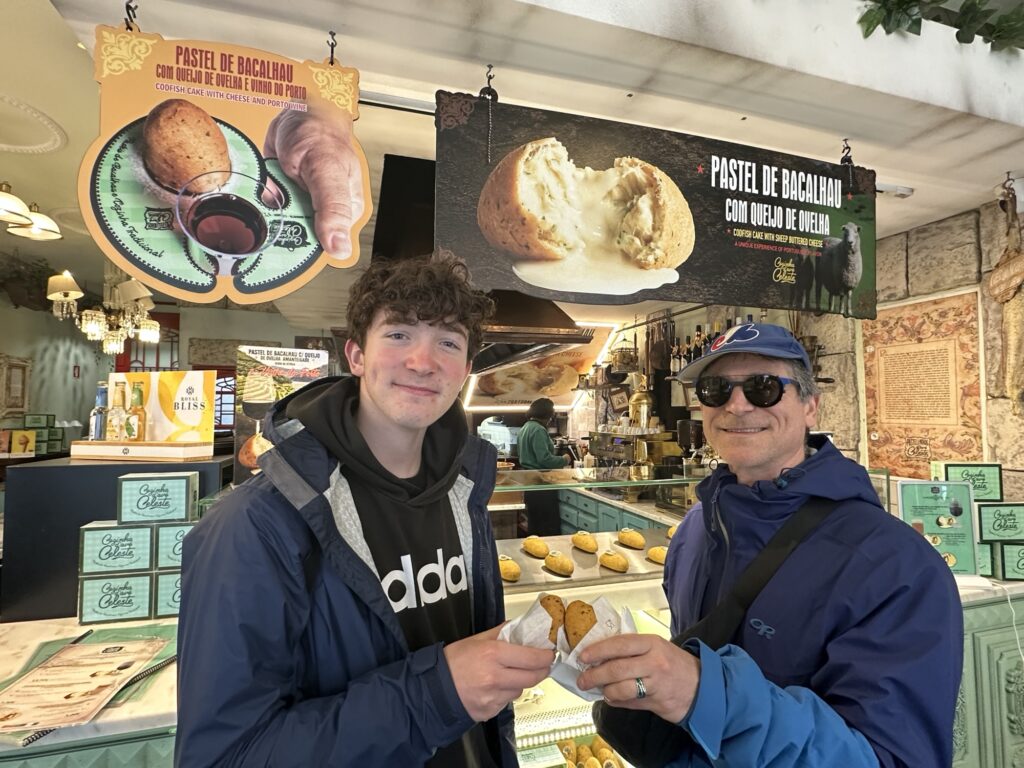
Teva decided he had to try McDonald’s in Portugal to see if they had anything different from home, as Japan had a lot of different options. Most of the things that were “new” were definitely not Kosher style (not that McDonald’s is Kosher), so he settled on having a spicy McCrispy, which we do have at home, but he said it was much better in Portugal.
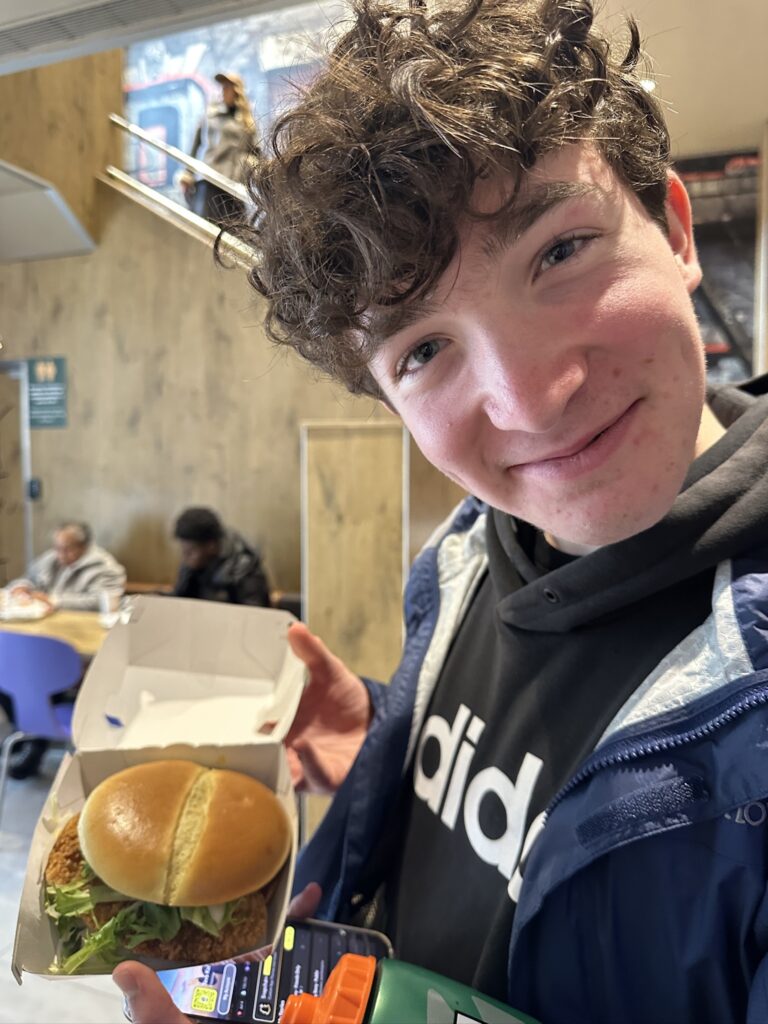
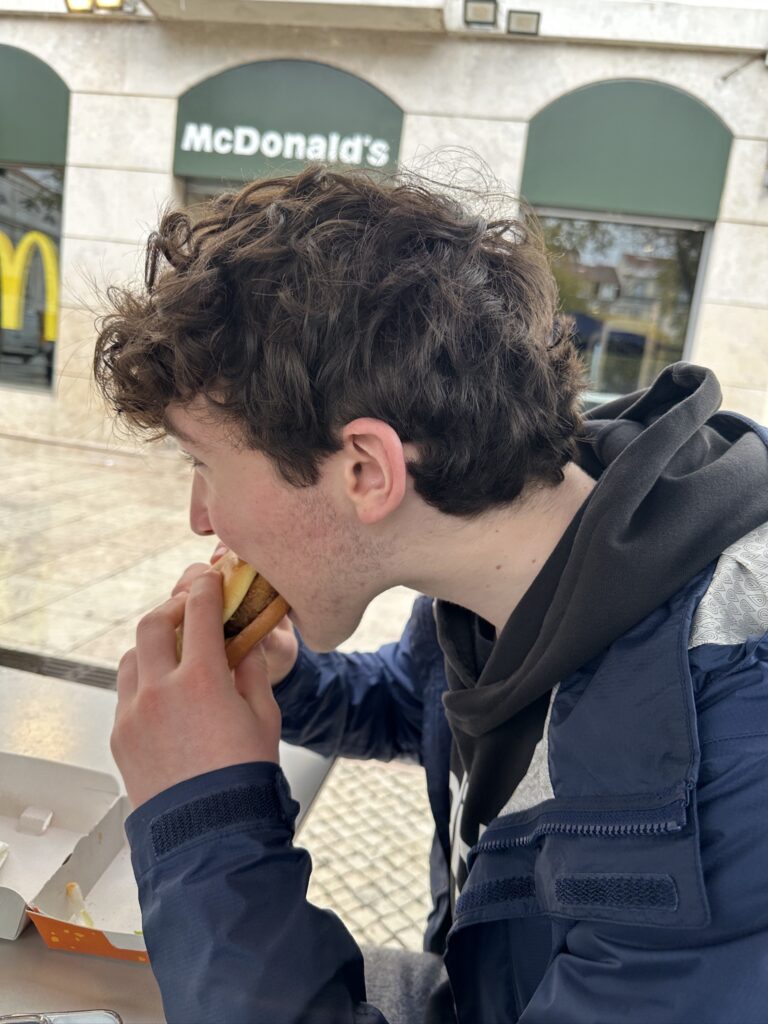
Here are some photos from the hours we were walking around while tasting things we came across
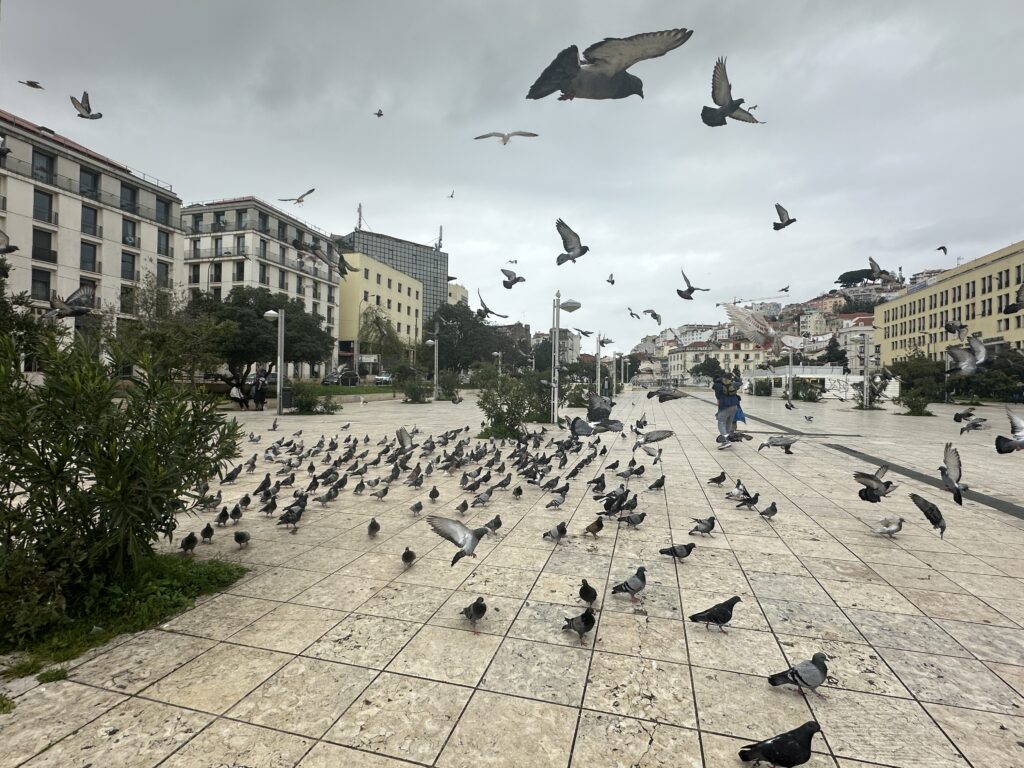
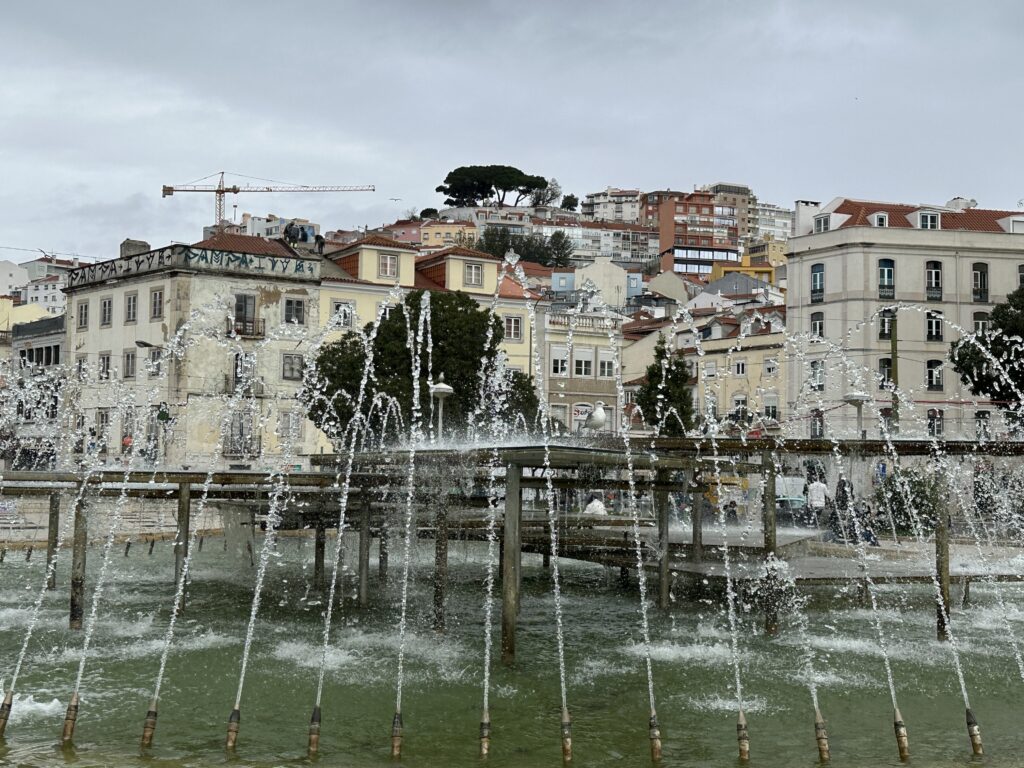
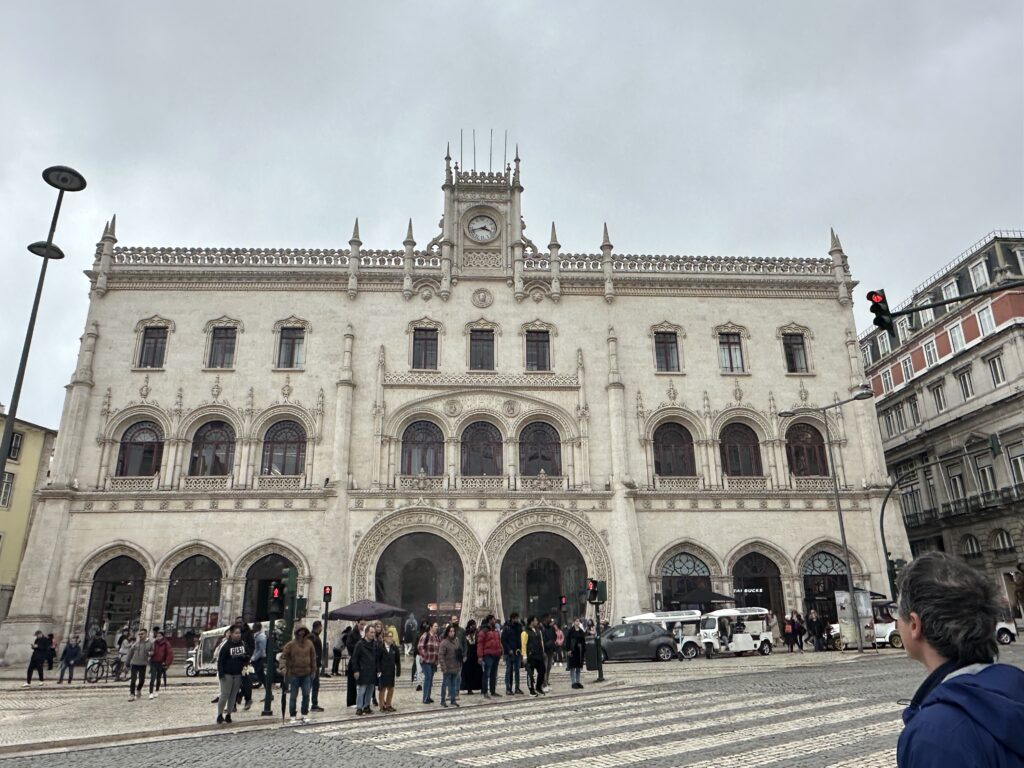
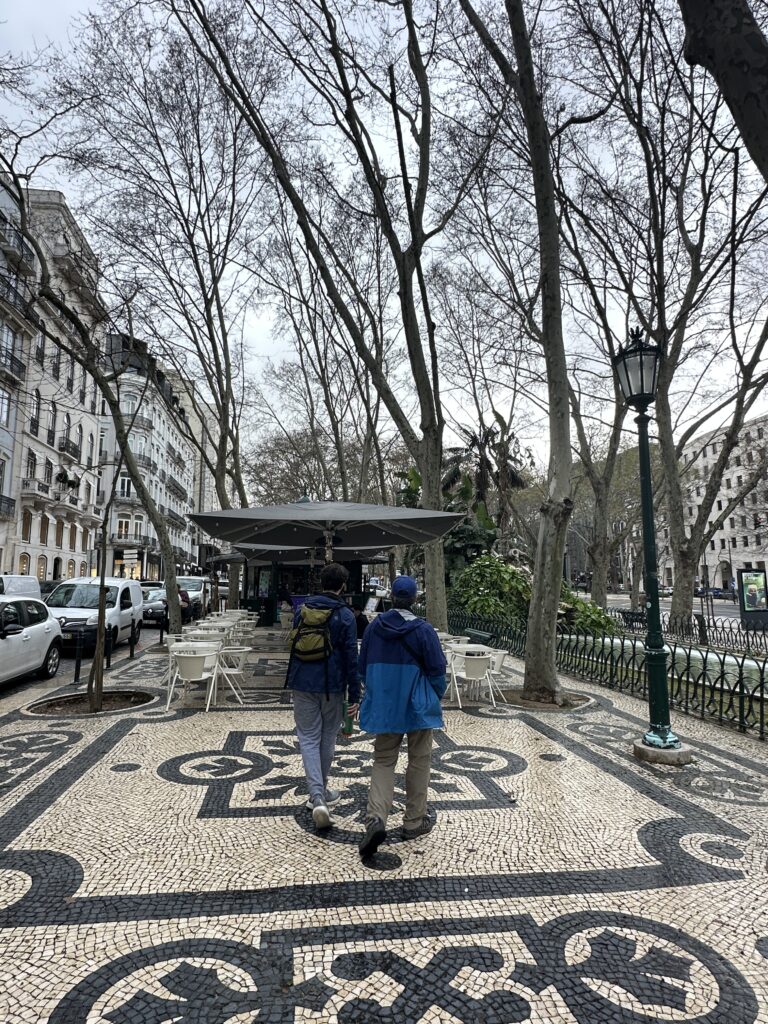
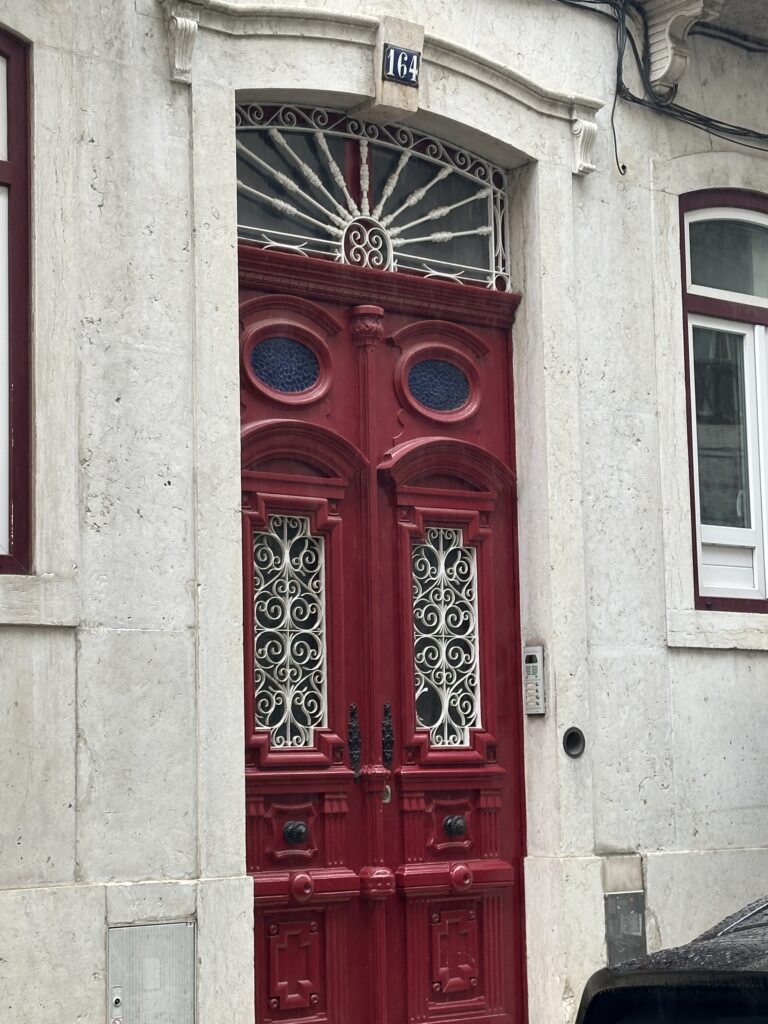
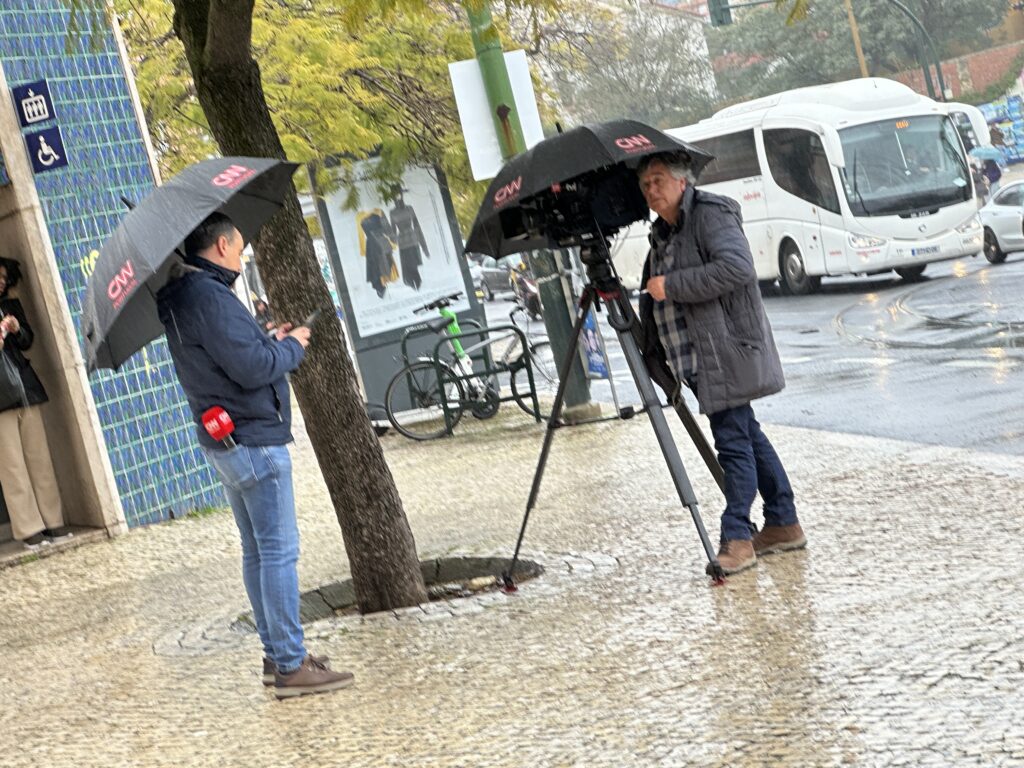
We wanted to check out the Mercado Campo de Ourique. It is billed as a “market” of restaurants with a common eating area. Many places were closed, but we managed to try food from all different corners of the world.
Salmon Ceviche from a Japanese food vendor – It was a true fusion dish with salmon and toasted corn and root vegetable chips, like Japanese sweet potato and beet chips. It had a surprising flavour profile of all of the 5 tastes.
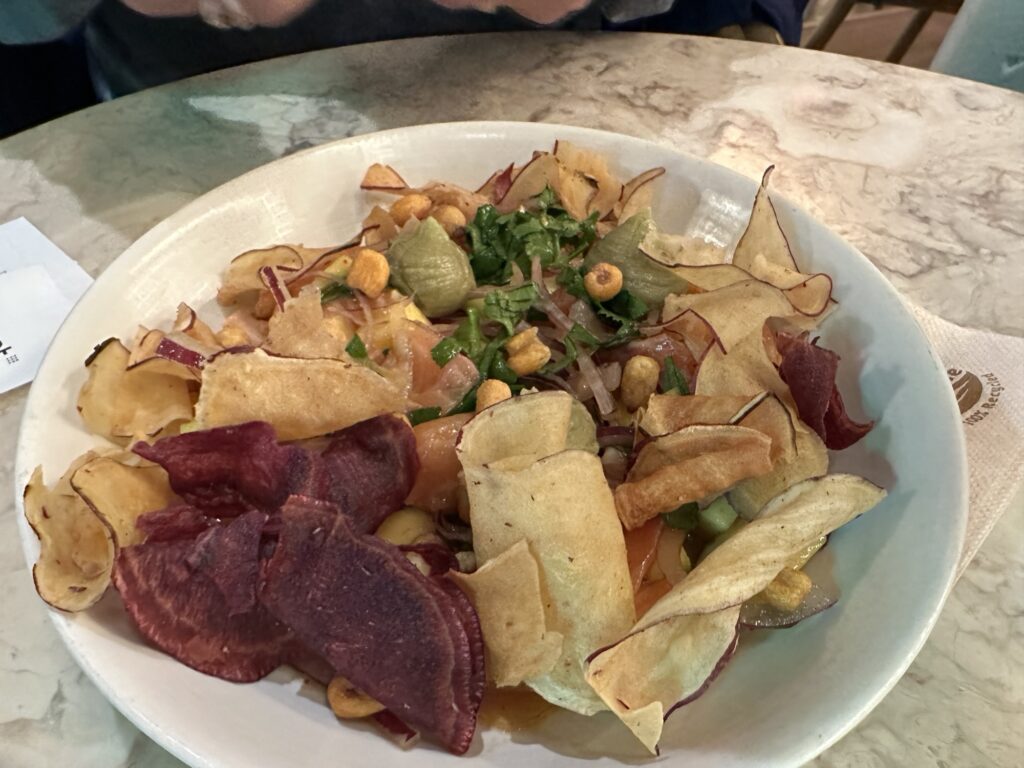
Tofu Bao – From a place called Banzai Kitchen. Small, soft Bao filled with delicious tofu, seaweed and other things, also was surprisingly delicious covering all the 5 tastes.
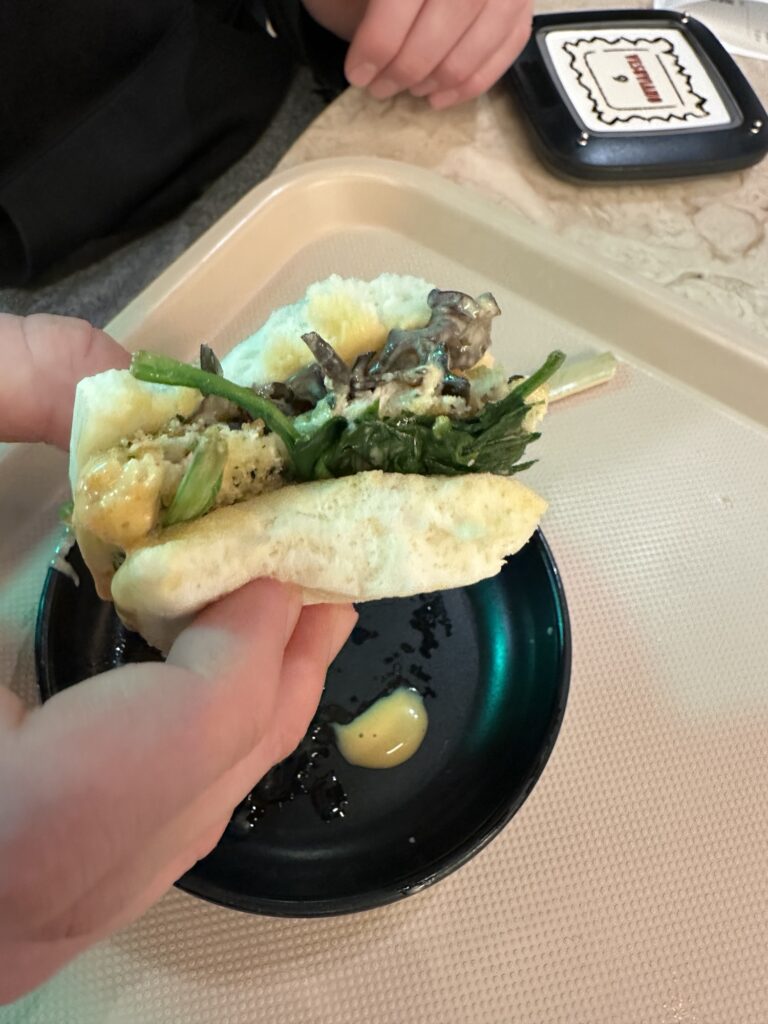
Parmesan, and truffle Ravioli with fresh herbs – Teva thought he had died and gone to heaven – delicious.
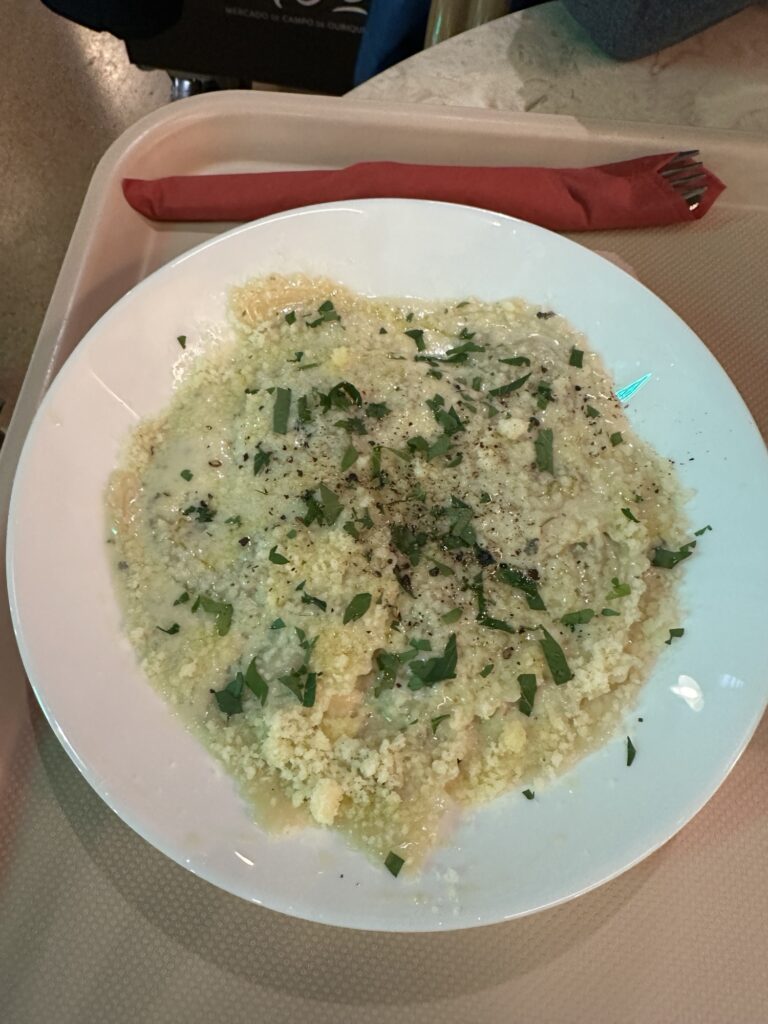
Chicken Empanada – Portuguese Style
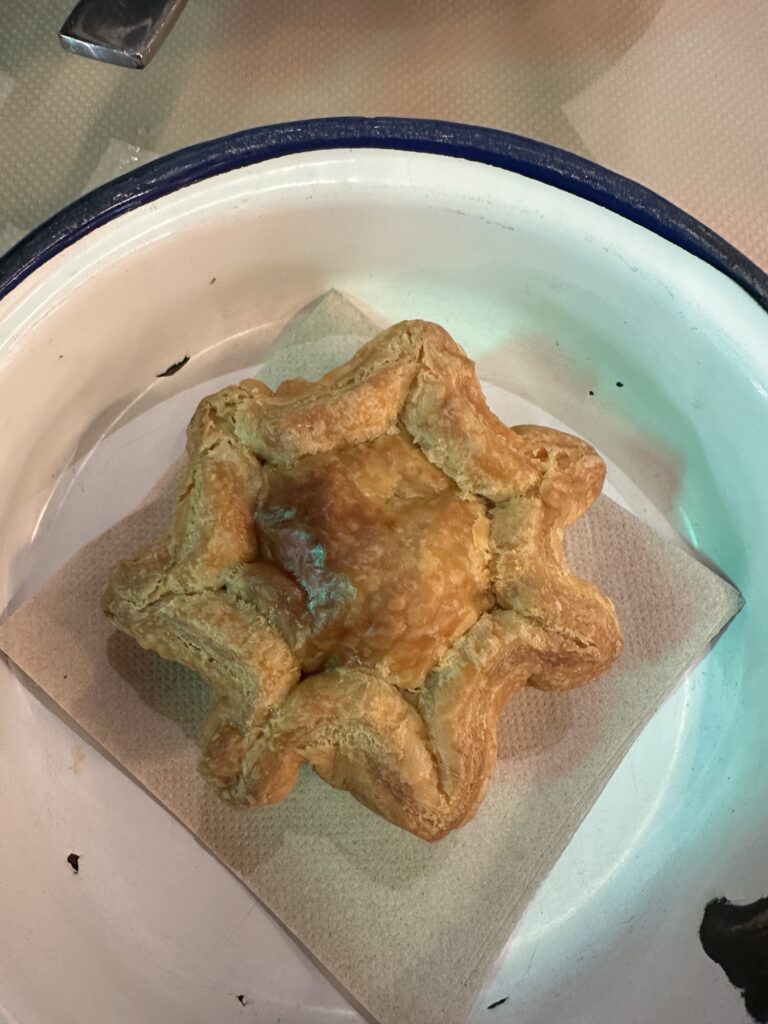
Dolce da Lece crepe with whipped cream – no explanation needed – as as good as it sounds 🙂 And very sweet!

On the way to the bathroom in the Mercado, I stumbled across a small exhibit called “Lightness”. It was a strange side room, flooded with fluorescent light.
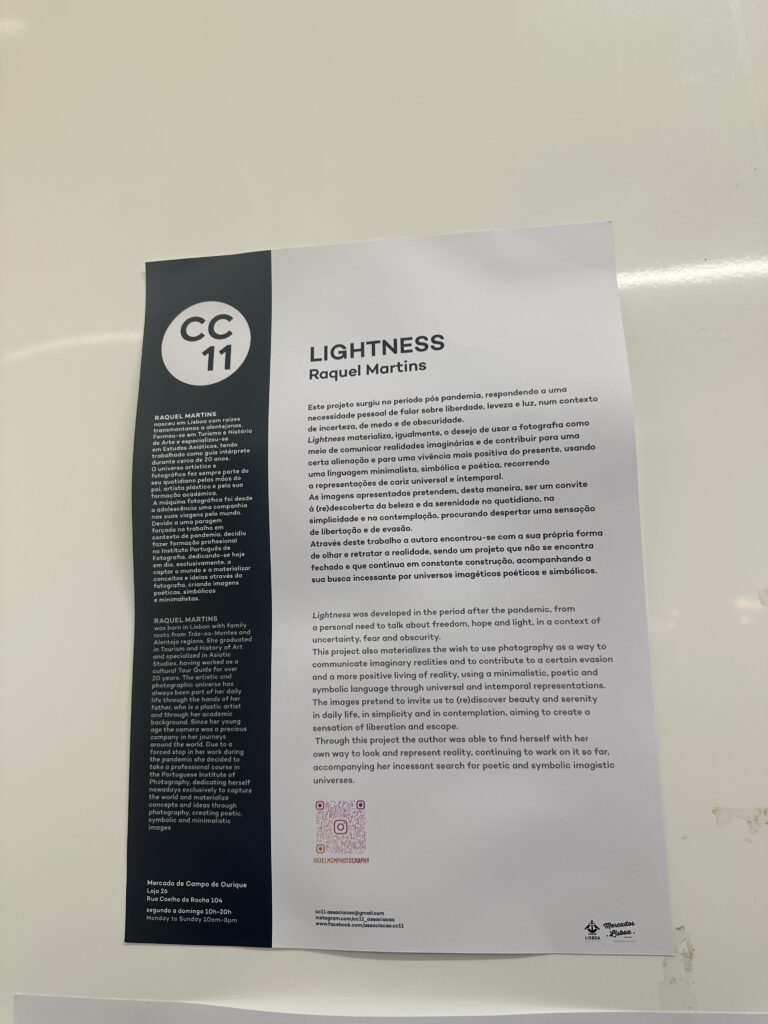
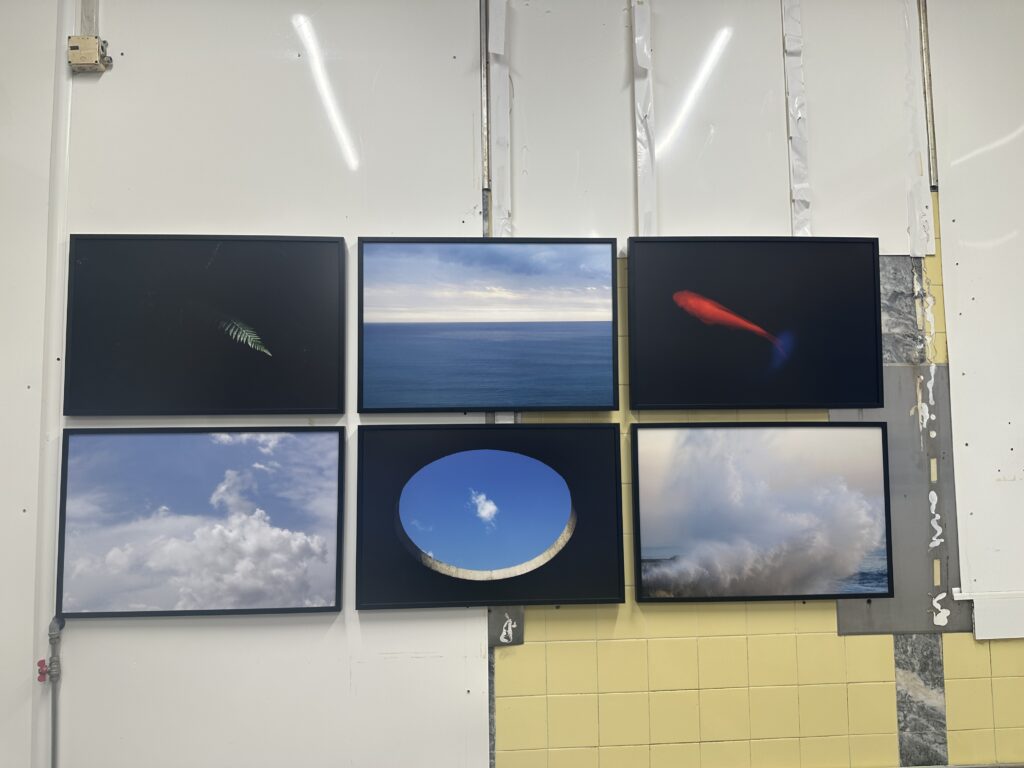
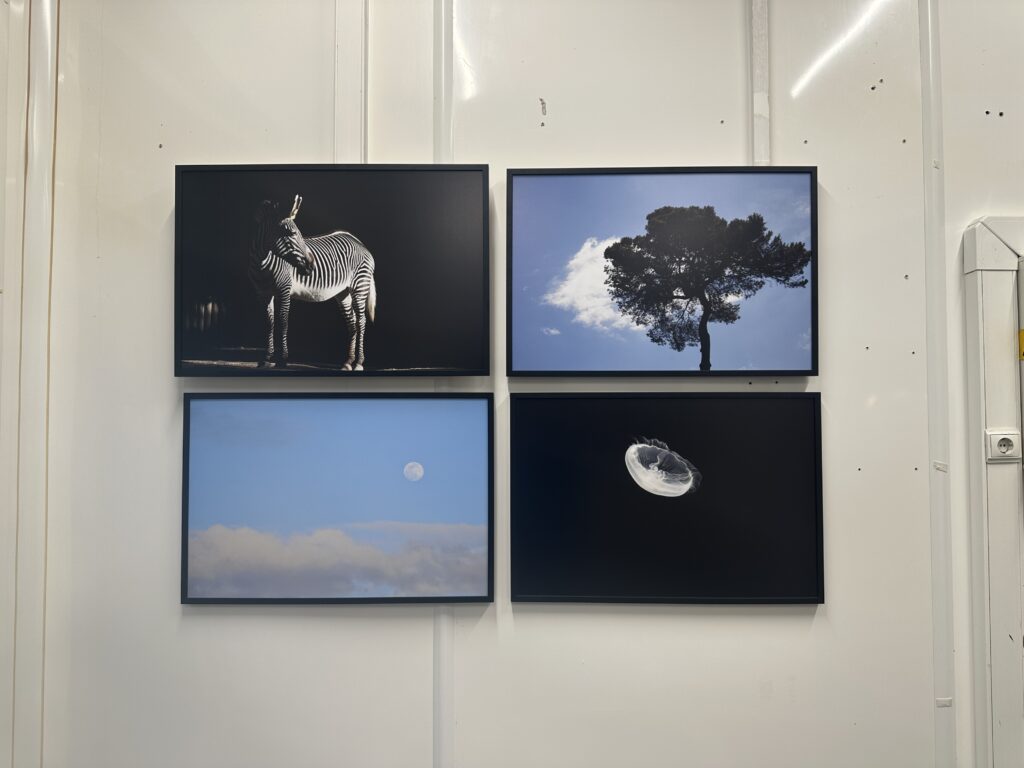
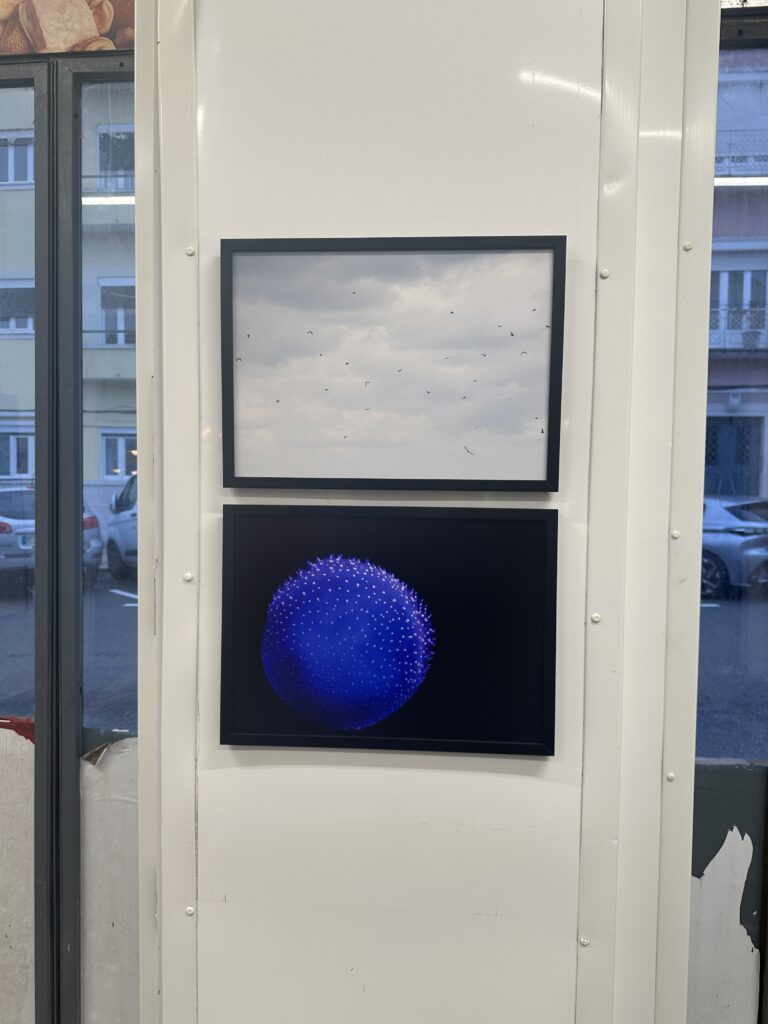
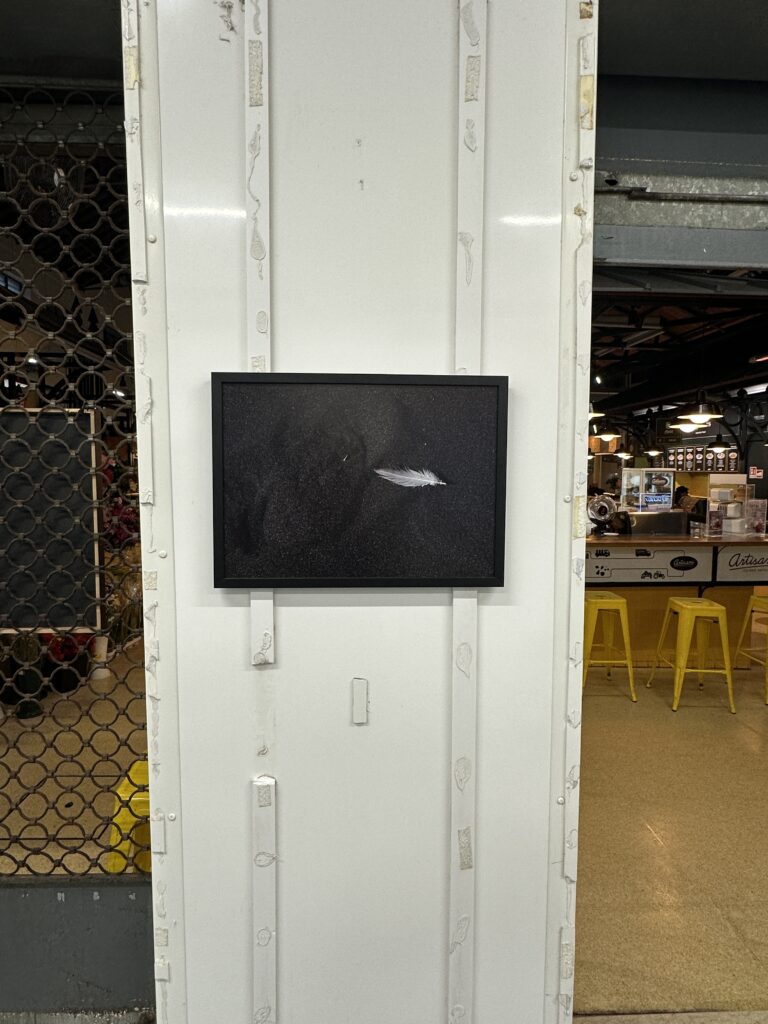
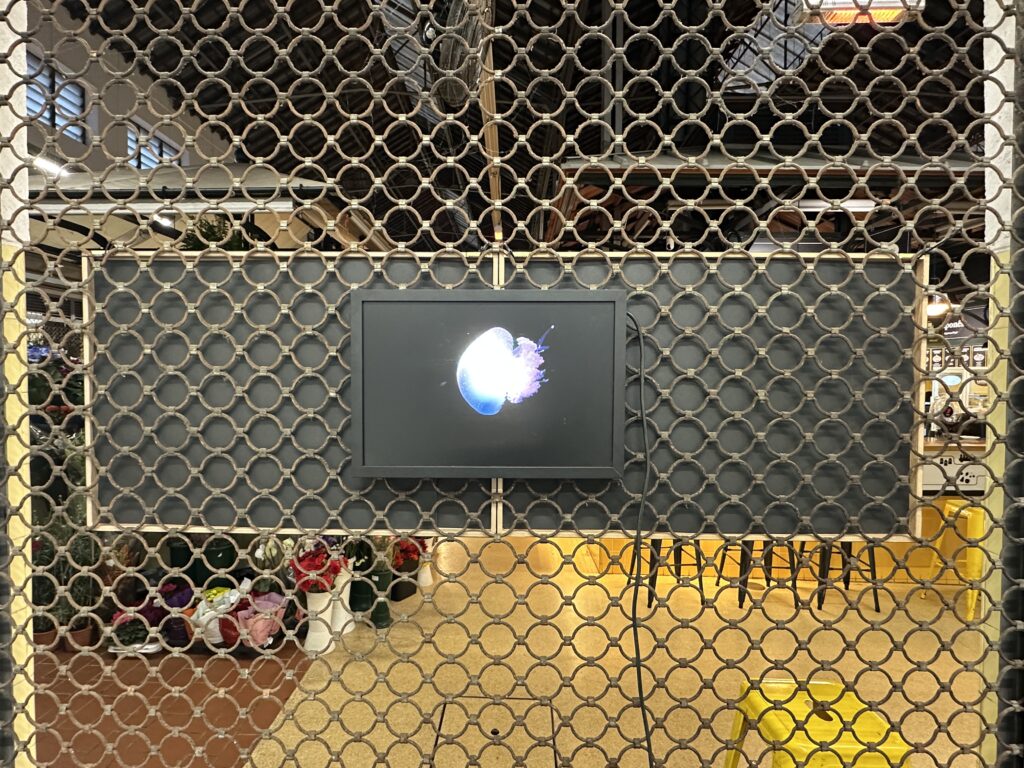
Our friend Aidan was literally coming off the plane to move to Lisbon. He dropped off his luggage, picked up the keys to his brand new apartment and met us for dinner. On the way there, we stumbled across a really cool space called MAAT (Museum of Art, Architecture and Technology). We walked on top of the roof. It was a really cool building. Here is one photo from the Internet, but I will include a link – worth clicking on to see the building during the daytime.

Here is the link to the other views:
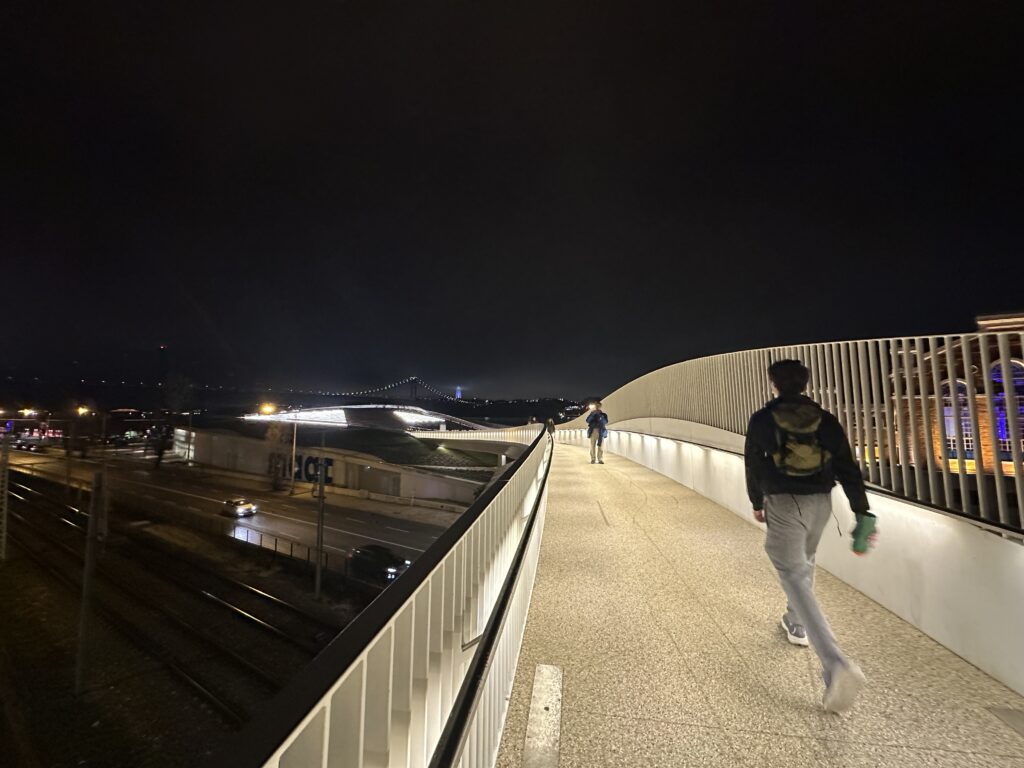
For dinner with Aidan, I chose a restaurant called O Frade which has been on the Michelin list of restaurants for four years in a row.
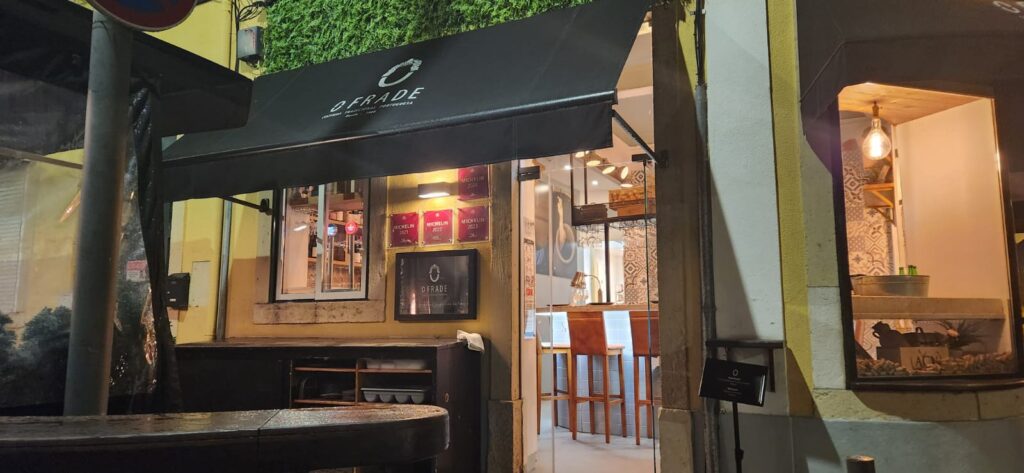
Check out their listing on the Michelin site:
https://guide.michelin.com/ca/en/lisboa-region/lisboa/restaurant/o-frade
Surprisingly, we were able to get a reservation the same day. They offered us seats at the counter, but they had some tables on the patio, and we figured we had a lot of catching up to do with Aidan, so it made more sense to sit outside. The food was quite fantastic – It is a family owned restaurant featuring food from the Alentejo region of Portugal. (We will be going to that region when we visit Évora on Friday).
We ordered many things off of their small menu and it was all delicious! We unfortunately forgot to photograph it but here is what we ordered:
Tapas:
Tuna Muxama with Eggs
Aged beef tartare
Creamy eggs with asparagus
Portuguese cheese selection
Mains:
Frade’s Duck Rice
Frade’s octopus and beans stew (Aidan)
Creamy mushrooms rice (veggie)
Fish Xerox with coriander and lemon
Dessert:
Dom Roderigo Lemon and Meringue
The dessert was unlike anything I have ever tasted. I did take a photo:
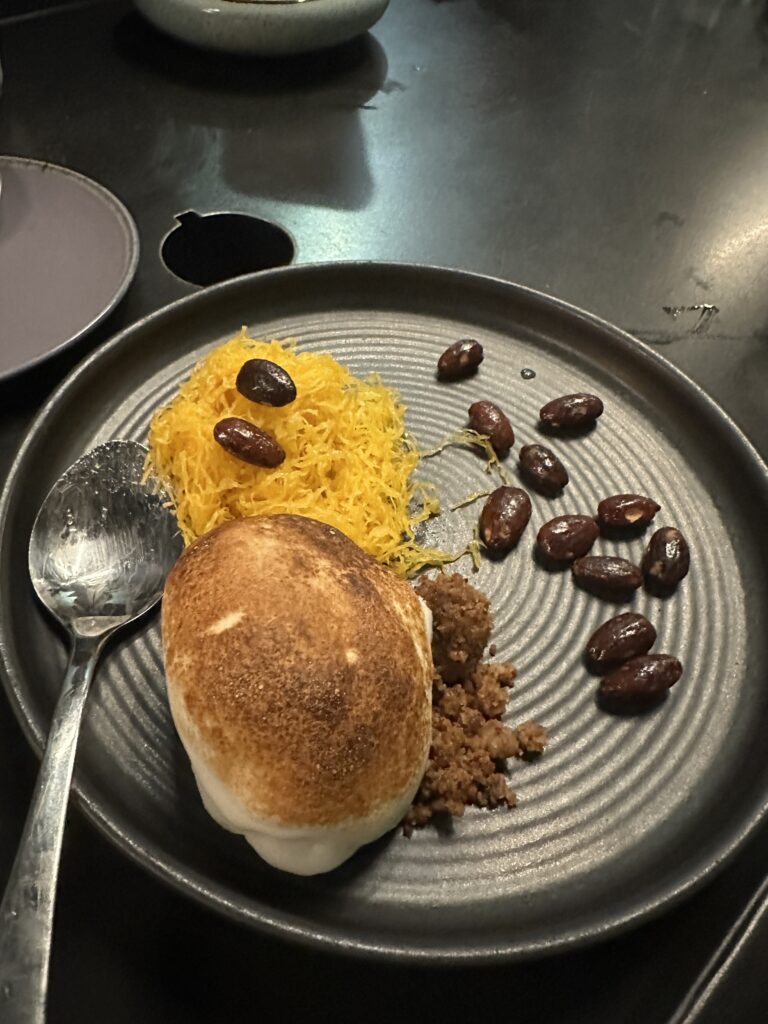
After I ate it, I did some research and this is what I came up with…
“Dom Rodrigo is a Portuguese dessert that is traditionally associated with the Algarve region, where it’s been made since the 18th century. It is prepared with a combination of egg yolks, sugar, ground almonds, cinnamon, and fios de ovos – a traditional confectionary product consisting of thin egg threads.”
The meringue was unlike another meringue – and I don’t know what kind of nuts those were, but they were fantastic, and that crumbly brown sugary stuff was also great.
Our tasting tour of Lisboa was a success, but for me, the highlight was seeing Aidan. It was so great to hear all of the fascinating things he is doing, and how he is thriving. I can’t wait to hear about his future adventures. We closed the place down at 11:15pm and made a late ferry and then got home around midnight.
